inbox and environment news: Issue 585
May 28 - June 3 2023: Issue 585
Learning To Waddle Along A Tree Branch
.jpg?timestamp=1685226875047)
.jpg?timestamp=1685226906540)
Why We Love Our Trees
By Willoughby Council
Special Treatment For The Worst Polluters: Government Admission Highlights The Need To Stop New And Expanded Coal Mines In NSW
May 2023
The Nature Conservation Council of New South Wales (NCC), the state's leading environmental advocacy organisation, has argued that the recent submission by the NSW government's Net Zero Unit is a watershed moment for new coal and gas in NSW.
"It's great to see a frank acknowledgement by the team tasked with getting us to net zero emissions that new coal or expanded coal mines will blow our carbon budget," NCC CEO Jacqui Mumford said.
"Other sectors of the NSW economy are rapidly reducing emissions, with both rooftop and large-scale renewable energy booming in NSW.”
"The government has diagnosed the disease, and now must take the medicine. We need a phase-out plan for coal mining and to work with our export countries to support the switch to clean energy."
"One of the scariest components of the submission is that Glencore seems to be expecting special treatment as part of the safeguard mechanism. They have effectively said 'don't worry about this additional 5 million tonnes of greenhouse gases, mate, we'll buy offsets through the safeguard mechanism.''
NCC Chief Executive Officer Jacqui Mumford said
"The safeguard mechanism is designed to impose an absolute cap on emissions. If it allows giant increases in emissions like this, then it's broken."
"The coal industry should be reducing its emissions, not forcing farmers and homeowners to pick up the slack."
"This is just from the process of digging up the coal and doesn't even consider the impact that burning all this coal will have on driving climate change.”
"The bushfires and floods gave us a taste of what is to come if we don't take action to prevent climate change.”
"The Paris accord states that to limit global warming to less than 1.5 degrees and prevent catastrophic climate events and mass extinction, we must reduce emissions by 75% by 2030. It's outrageous that a dirty coal mine wants to increase its emissions right up to 2050."
How Citizen Scientists Are Helping To Save A Species: 35 Christmas Beetle Species Unearthed By Volunteers
May 2023: University of Sydney
When architecture alumnus Michael Harvey heard that Christmas Beetle numbers were in decline, he put up his hand to help search for the missing beetle species.
For Michael Harvey (BArch '99), University of Sydney architecture graduate and urban designer for the City of Sydney, Christmas beetles have always been a memorable part of the summer months. But like many Australians he had begun to notice the absence of the glittering green and gold insects as Christmas approached. Then he learned about the citizen science project through SAM Extra, the University's alumni newsletter.
"Growing up in Sydney, Christmas beetles were a really memorable part of summertime and holidays,” he recalls. “That’s why I was keen to volunteer for this project when I heard their numbers were in decline.”
The Christmas Beetle Count was run by Invertebrates Australia and entomologist Associate Professor Tanya Latty from the School of Life and Environmental Science at the University of Sydney over the latter half of 2022. Volunteers, dubbed ‘citizen scientists’, were asked to take pictures of any Christmas beetles they encountered and upload them by using an app on their phone. The goal was to understand the current beetle distribution, understand if the beetle populations were in decline, and identify and combat potential causes to secure the beetles’ future.
Michael eagerly put up his hand to start snapping pictures of the beetles he found on his daily walks through Sydney Park with his dog Ralph. The iconic Australian beetles tended to gather by the bright lights that illuminated the park at night. In the end, Michael submitted five images of the insects he found with Ralph.
The project received more than 6500 submissions from volunteers like Michael and was successful in identifying 35 species of Christmas beetles, including several which had not been spotted in decades. Associate Professor Latty, says that the support from volunteers like Michael was a crucial part of confirming the status of the 35 Christmas beetle species.
“We absolutely could not do this project without volunteers,” she says. "Australia is a huge, huge country. So, without having eyes everywhere, we can't really identify the problem areas.
“We desperately need people in communities everywhere in Australia, even places where perhaps they haven't seen Christmas beetles, to keep an eye out for them.”
She hopes that more volunteers will get involved in projects like this, to help people understand the key role that insects play in our world and challenge their negative preconceptions of the crawling critters around us.
“The vast majority of insects cannot hurt you. I think that fear is something that tends to get put into us very young and it's hard to shift,” Associate Professor Latty says. “But they do all the jobs, they’re predators, waste managers and soil regenerators. And if we ignore them because we're scared of them, we're going to lose something fundamentally important to our ecosystems.
“And Christmas beetles... they’re beautiful! They're cute, they're harmless, they're big. What's not to love?”
For his part, Michael spent time talking to his son about Christmas beetles and his memories of their large populations, drawing on his own interest in environmental science and conservation.
"Volunteering is an easy and fun way to make a positive impact in the world. You give back to your community, learn new skills and connect with like-minded individuals,” he says.
"I just hope that my contribution to the Christmas Beetle Count will make a positive impact on their survival.”
Successes so far
There were 6592 total Christmas beetle sightings collected by volunteers in the 2022/ 2023 season. 35 Christmas beetle species were observed.
Four 'missing' beetle species were formally sighted:
- Anoplognathus multiseriatus - last reported in 1970s
- Anoplognathus rhinastus - last reported in 1999
- Anoplognathus nebulosus - laste reported in 1999
- Anoplognathus vietor - previously reported from a single male speciman in 1986
There is only one preserved specimen of anoplognathus vietor, so it is especially exciting to have recorded a live beetle.
Think you’ve spotted a beetle and want to help? Visit Invertebrates Australia to find out more about the Christmas Beetle Project.
Protect Mona Vale's Bongin Bongin Bay - Establish An Aquatic Reserve
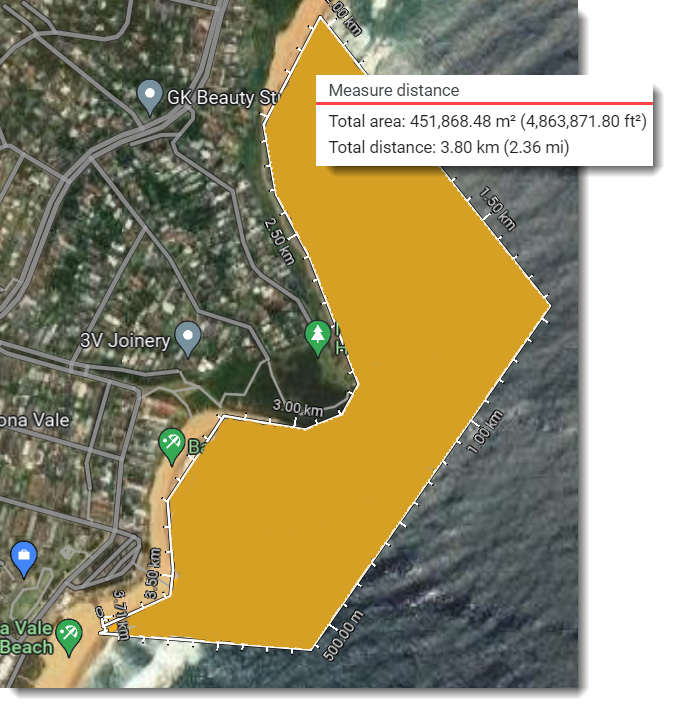
Friends Of Bongin Bongin Bay (Mona Vale Basin) Update: May 2023


Ausgrid Community Battery Pilot - Warriewood: Have Your Say
- Take the survey here: https://yoursay.ausgrid.com.au/sharedbatterywarriewood
- Email sharedbattery@ausgrid.com.au
- Call 1800 995 674 (Mon- Fri 09:00 to 16:30 AEST)
- Postal Mail to Ausgrid Community Battery Project, GPO Box 4009, Sydney NSW 2001
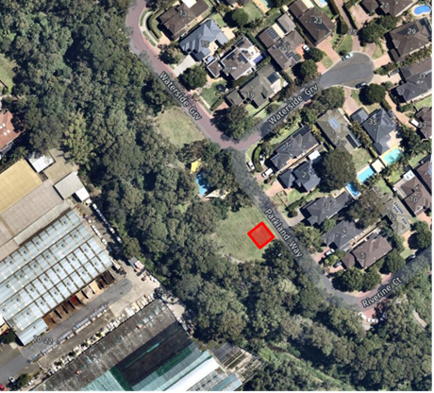
Northern Beaches Clean Up Crew: Freshwater May 28
Come and join us for our family friendly May clean up, close to Freshwater Surf Lifesaving Club on the 28th at 10am. We meet in the grass area behind the surf life saving club.
We have gloves, bags, and buckets, and grabbers. We're trying to remove as much plastic and rubbish as possible before it enters the ocean. Some of us can focus on the bush area and sandy/rocky areas, and others can walk along the beach and even clean up in the water (at own risk). We will clean up until around 11.20, and after that, we will sort and count the rubbish so we can contribute to research by entering it into a marine debris database. The sorting and counting is normally finished around noon, and we'll often go for lunch together at our own expense. We understand if you cannot stay for this part, but are grateful if you can. We appreciate any help we can get, no matter how small or big.
No booking required - just show up on the day - we will be there no matter what weather. We're a friendly group of people, and everyone is welcome to this family friendly event. It's a nice community - make some new friends and do a good deed for the planet at the same time. For everyone to feel welcome, please leave political and religious messages at home - this includes t-shirts with political campaign messages. There is a council carpark, but it is often busy on Sundays, so check streets close by as well if it's full or please consider using public transport.
Message us on our social media or send us an email if you are lost. All welcome - the more the merrier. Please invite your friends too!
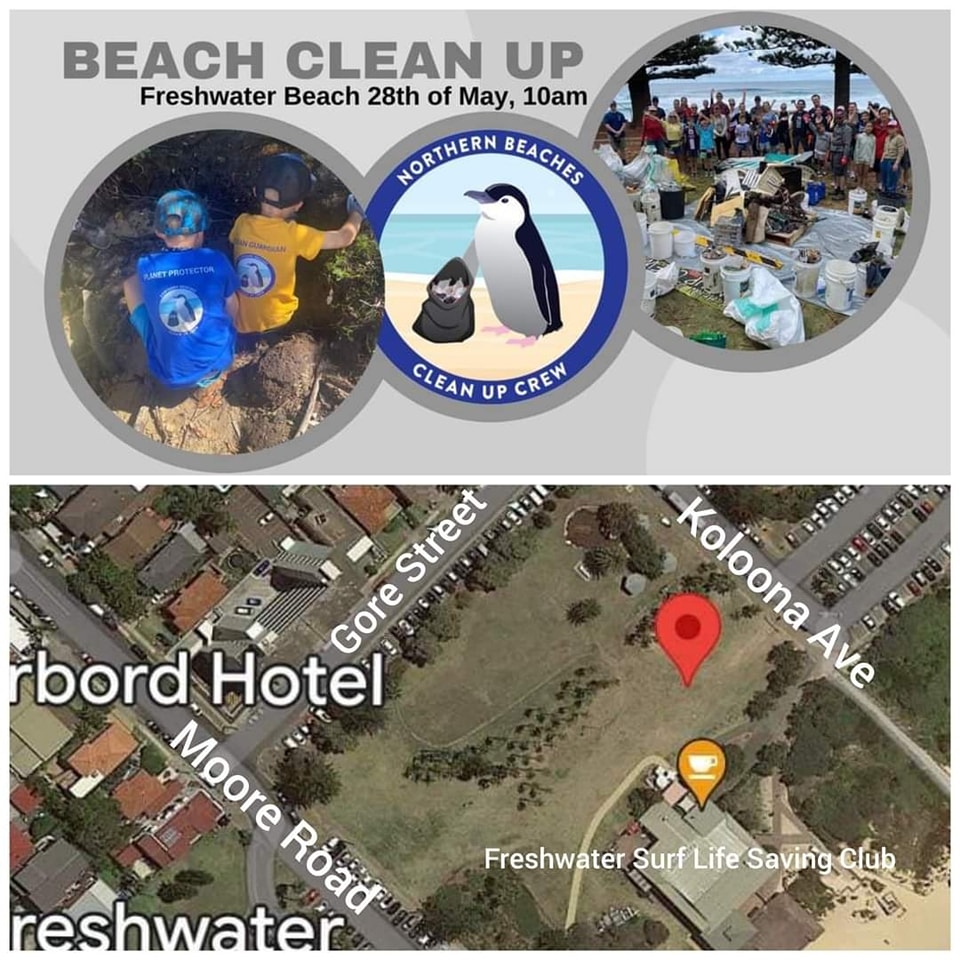
Permaculture NB: June To July 2023 Events
Permaculture Northern Beaches (PNB) is an active local group on Sydney's Northern Beaches working for ecological integrity and assisting you on a pathway to sustainability.
PNB holds monthly permaculture-related public meetings on the last Thursday of each month at the Narrabeen Tramshed Community & Arts Centre, Lakeview Room, 1395A Pittwater Road, Narrabeen. Buses stop directly at the centre and there is also car parking nearby. Doors open at 7:15 pm and meetings take place monthly from February to November.
Everyone is welcome!
We also hold a range of workshops, short courses, film and soup nights, practical garden tours, permabees (working bees), beehive installations, eco-product making sessions and much more.
WORLD OCEANS DAY - BIG BLUE FUTURE
Thursday, June 8, 2023
World Oceans Day is held every year on 8th June to raise awareness of the vital importance of our oceans and the role they play in sustaining a healthy planet. A global celebration, it looks to bring people and organisations together across the globe in a series of events highlighting how we can all help protect and conserve the oceans.
Our ocean needs protection. Our ocean covers 70% of the planet and supports life as we know it. Every second breath we take comes from the ocean. Our ocean feeds billions of people. Our ocean hosts 80% of the world’s biodiversity.
However, our oceans are in crisis. They are being threatened by pollution such as abandoned fishing nets, overfishing, bycatch, and the effects of climate change.
We know the problems. We know the solutions.
World Oceans Day is a day to take action and raise awareness.
The 2023 theme for World Ocean Day is Big Blue Future.
To conserve our wonderful marine resources for future generations. Get involved in the conversation with #WorldOceansDay and #BigBlueFuture.
CELEBRATING WORLD OCEANS DAY
Thursday, June 29, 2023: 7:30pm – 9:00pm
Narrabeen Tramshed Arts and Community Centre, Lakeview Room
1395A Pittwater Road, Narrabeen
Join us in World Oceans’ month to learn more about the Blue planet we live on.
Two great speakers will tell us the wonders and threats facing our oceans.
Australia Marine Conservation Society works on the big issues that risk our ocean wildlife - protecting critical ocean ecosystems with marine reserves around the nation, including Ningaloo and the Great Barrier Reef. As well as issues such as over-fishing and supertrawlers, and protecting threatened and endangered species like the Australian Sea Lion.
Surfrider Foundation is actively working to stop drilling and exploration for oil and gas off our coast (PEP2). The organisation works to protect our oceans, beaches and waves through a powerful activist network.
$5 entry by donation to pay for room hire. Organic teas and coffee are available at the night + swap table - bring plants, seeds, food, books and permaculture items to swap and share.
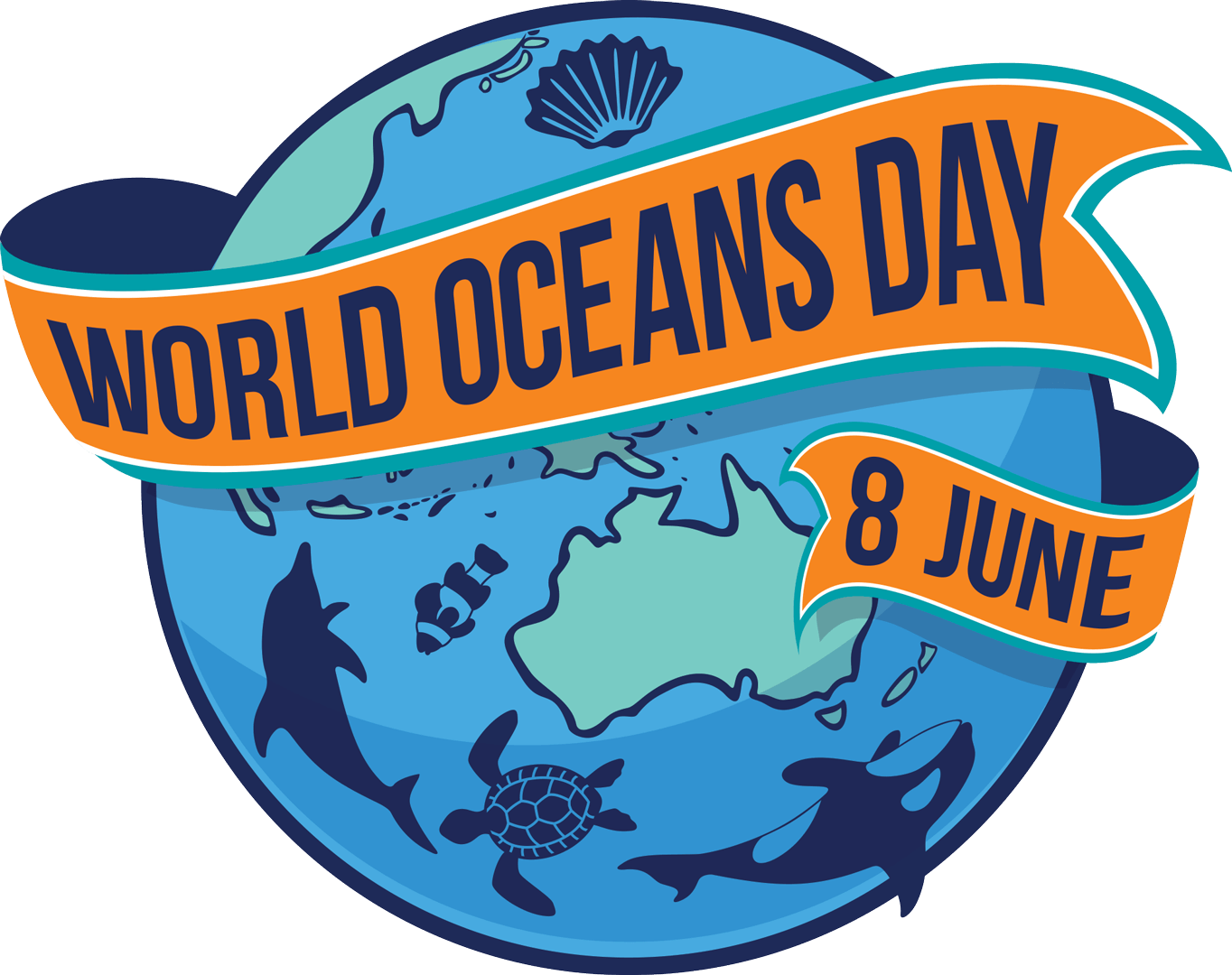
SEED SAVING CIRCLE
Saturday, July 8, 2023: 11:00am – 1:00pm
Balgowlah Community Garden
100 Griffiths Street, Balgowlah
Gather your seeds in winter for the coming spring. Share and swap seeds that are grown organically and locally. These seeds will be the best adapted you can find for the Northern Beaches climate and soils as many have been grown over generations.
Tap into the knowledge and the databank of seeds at Balgowlah Community Garden and PNB + share permaculture knowledge. This is an invaluable resource for the local community. Be part of the change - grow your own seeds and food.
Bring your non-alcoholic drinks and food to share on the day. The seed circle will be outdoors but under cover so dress weather-wise.
PLASTIC FREE JULY
Saturday, July 1, 2023 – Monday, July 31, 2023
Permaculture Northern Beaches is a part of the Plastic Free July challenge - Join Us!
The plastic bottles, bags and takeaway containers that we use for just a few minutes use a material that is designed to last forever. Every bit of plastic ever made still exists!
These plastics:
- Break up, not break down – becoming permanent pollution
- Are mostly made into low-grade products for just one more use or sent to a landfill
- End up in waterways and the ocean – where scientists predict there will be more tons of plastic than tons of fish by 2050
- Transfer to the food chain – carrying pollutants with them
- Increase our eco-footprint – plastic manufacturing consumes 6% of the world’s fossil fuels
Be part of the solution, by taking up these habits:
- Refusing plastic bags and packaging (choose your own alternatives)
- Reducing packaging where possible (opt for refills, remember your reusable shopping bags)
- Refusing plastics that escape as litter (e.g. straws, takeaway cups, utensils, balloons)
- Recycling what cannot be avoided by the use of alternatives.
Register to join 100,000 Australians and a million+ people worldwide stepping up in Plastic Free July www.plasticfreejuly.org
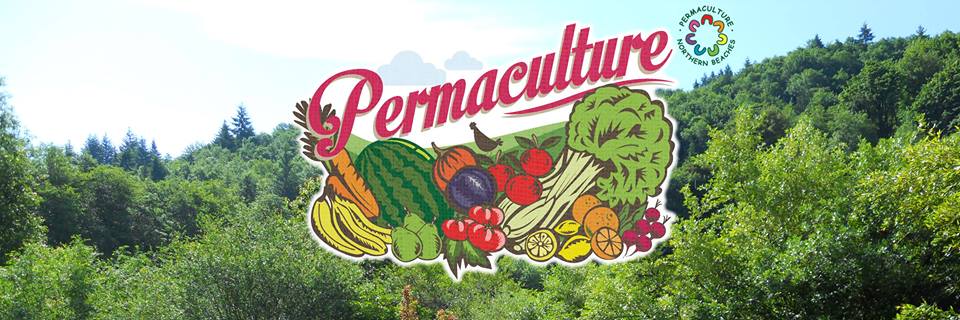
PNHA Guided Nature Walks 2023
Our walks are gentle strolls, enjoying and learning about the bush rather than aiming for destinations. Wear enclosed shoes. We welcome interested children over about 8 years old with carers. All Welcome.
Sunday June 25: Birdwatching and Bushland along Mullet Creek in Ingleside Chase Reserve
Swamp forest and coastal wetlands are rich habitat for fauna such as Swamp Wallaby and Diamond Python. Over 150 bird species have been recorded for the area. Red-Browed Finch is one.
Bring your binoculars and keep your ears pricked for bird calls. The track is mostly level, but with an optional steep climb near the Irrawong waterfall.
Meet: 8.30am near 31 Irrawong Rd North Narrabeen. Ends about 10.30.
So we know you’re coming please book by emailing: pnhainfo@gmail.com and include your phone number so we can contact you if weather is doubtful.
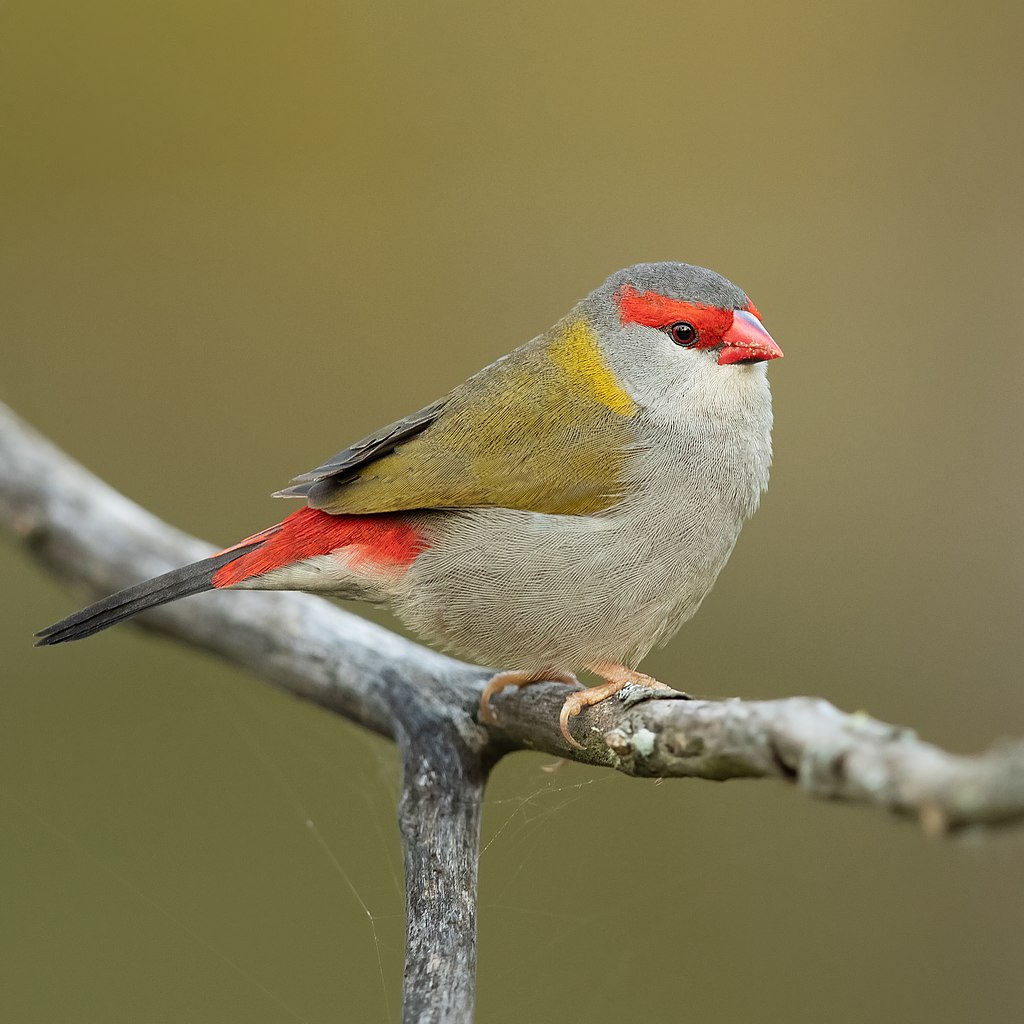
Red-browed finch (Neochmia temporalis). Photo: J J Harrison
Chemical CleanOut: June 2023
Mona Vale Beach Car Park: Sat 24, Sun 25 June 2023 - 9am-3:30pm
Surfview Road, Mona Vale
Only household quantities accepted. Maximum container size of 20kg or 20L per item.
*Up to 100L of paint (in 20L containers) now accepted at all Sydney, Hunter and Illawarra events.
Accepted:
Fluoro globes and tubes, Gas bottles and fire extinguishers, Household cleaners, Batteries, Paint*, Oils, Garden chemicals, Poisons, Smoke detectors.
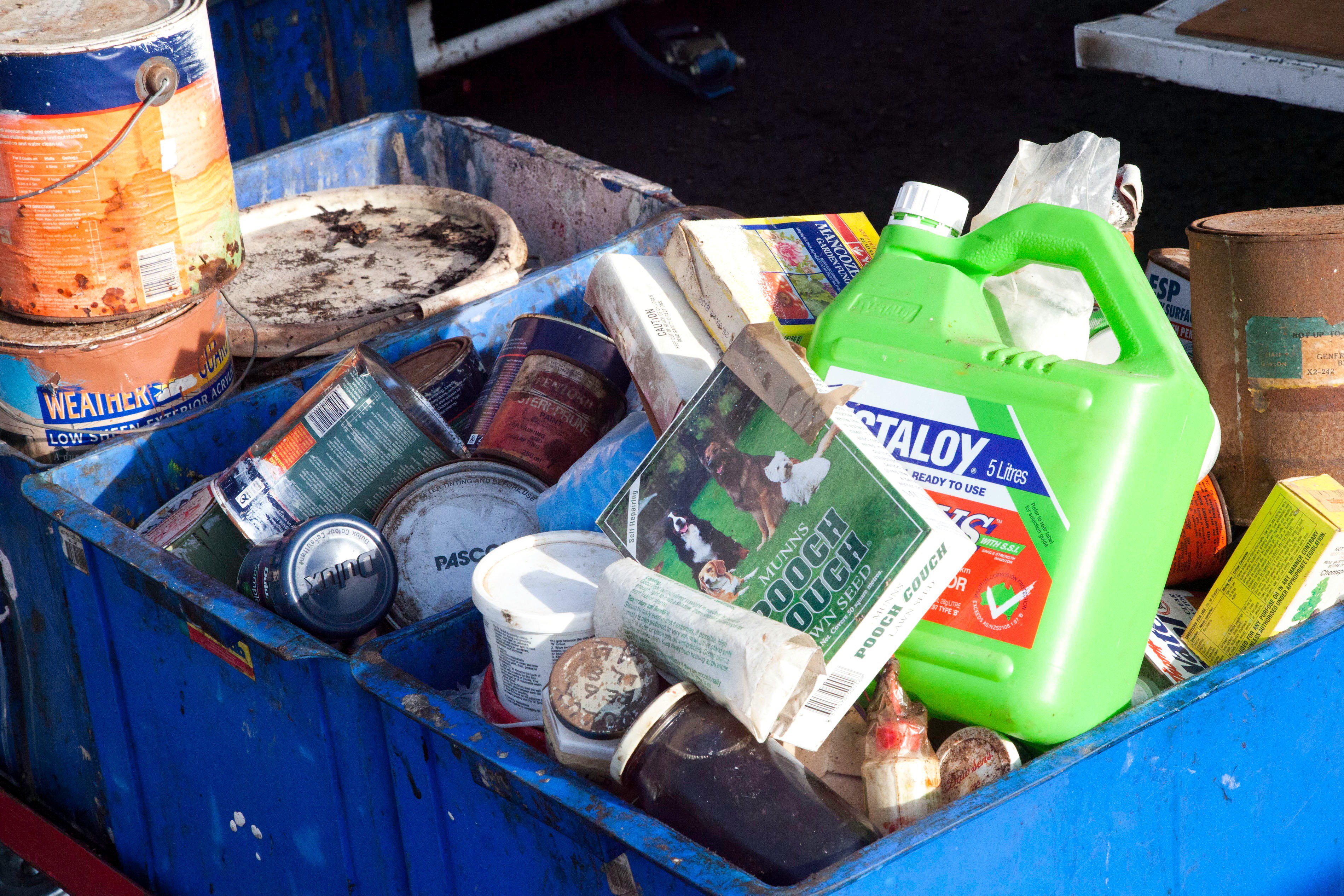
Bushcare In Pittwater
Where we work Which day What time
Avalon
Angophora Reserve 3rd Sunday 8:30 - 11:30am
Avalon Dunes 1st Sunday 8:30 - 11:30am
Avalon Golf Course 2nd Wednesday 3 - 5:30pm
Careel Creek 4th Saturday 8:30 - 11:30am
Toongari Reserve 3rd Saturday 9 - 12noon (8 - 11am in summer)
Bangalley Headland 2nd Sunday 9 to 12noon
Bayview
Winnererremy Bay 4th Sunday 9 to 12noon
Bilgola
North Bilgola Beach 3rd Monday 9 - 12noon
Algona Reserve 1st Saturday 9 - 12noon
Plateau Park 1st Friday 8:30 - 11:30am
Church Point
Browns Bay Reserve 1st Tuesday 9 - 12noon
McCarrs Creek Reserve Contact Bushcare Officer To be confirmed
Clareville
Old Wharf Reserve 3rd Saturday 8 - 11am
Elanora
Kundibah Reserve 4th Sunday 8:30 - 11:30am
Mona Vale
Mona Vale Beach Basin 1st Saturday 8 - 11am
Mona Vale Dunes 2nd Saturday +3rd Thursday 8:30 - 11:30am
Newport
Bungan Beach 4th Sunday 9 - 12noon
Crescent Reserve 3rd Sunday 9 - 12noon
North Newport Beach 4th Saturday 8:30 - 11:30am
Porter Reserve 2nd Saturday 8 - 11am
North Narrabeen
Irrawong Reserve 2nd Saturday 2 - 5pm
Palm Beach
North Palm Beach Dunes 3rd Saturday 9 - 12noon
Scotland Island
Catherine Park 2nd Sunday 10 - 12:30pm
Elizabeth Park 1st Saturday 9 - 12noon
Pathilda Reserve 3rd Saturday 9 - 12noon
Warriewood
Warriewood Wetlands 1st Sunday 8:30 - 11:30am
Whale Beach
Norma Park 1st Friday 9 - 12noon
Western Foreshores
Coopers Point, Elvina Bay 2nd Sunday 10 - 1pm
Rocky Point, Elvina Bay 1st Monday 9 - 12noon
Friends Of Narrabeen Lagoon Catchment Activities

Gardens And Environment Groups And Organisations In Pittwater
Report Fox Sightings
%20(1).jpg?timestamp=1675893929686)
Weed Of The Season: Cassia - Please Pull Out And Save Our Bush
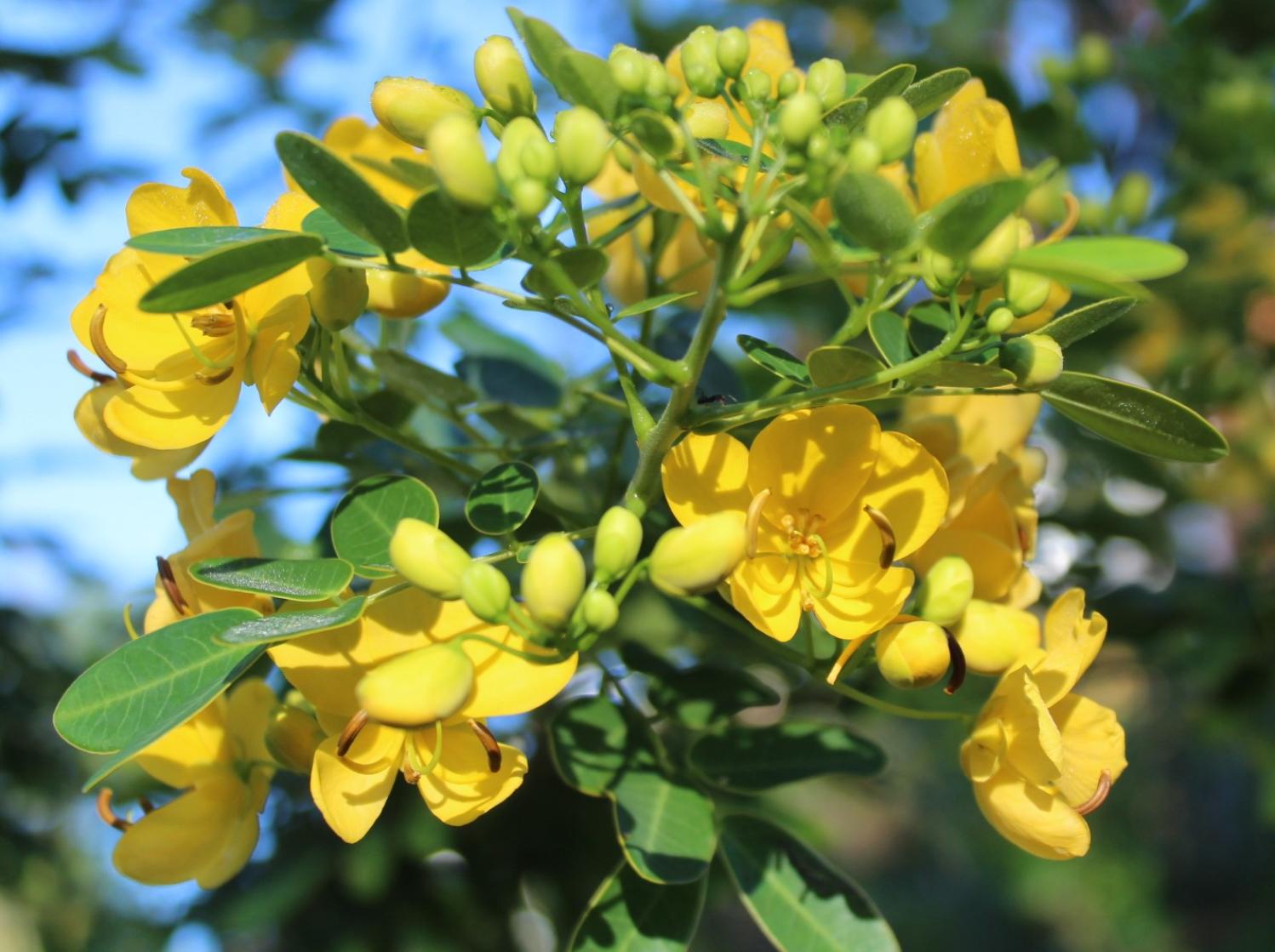
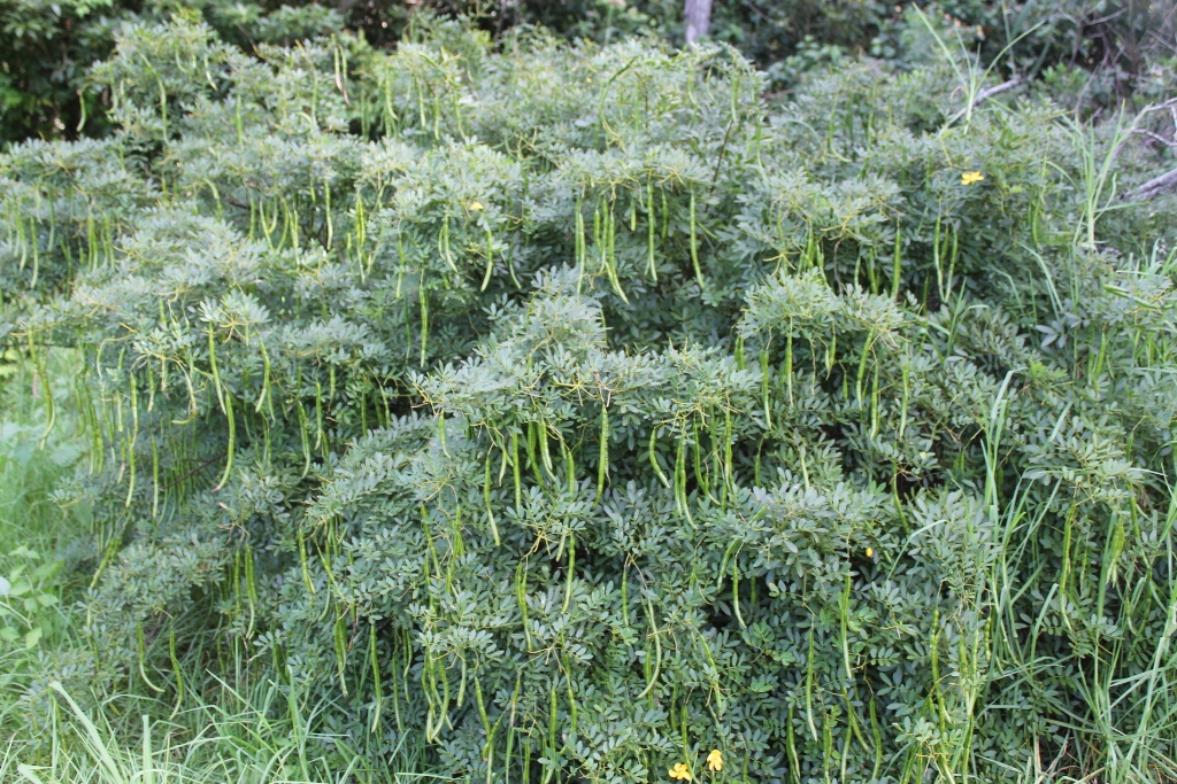
New Marine Wildlife Rescue Group On The Central Coast
A new wildlife group was launched on the Central Coast on Saturday, December 10, 2022.
Marine Wildlife Rescue Central Coast (MWRCC) had its official launch at The Entrance Boat Shed at 10am.
The group comprises current and former members of ASTR, ORRCA, Sea Shepherd, Greenpeace, WIRES and Wildlife ARC, as well as vets, academics, and people from all walks of life.
Well known marine wildlife advocate and activist Cathy Gilmore is spearheading the organisation.
“We believe that it is time the Central Coast looked after its own marine wildlife, and not be under the control or directed by groups that aren’t based locally,” Gilmore said.
“We have the local knowledge and are set up to respond and help injured animals more quickly.
“This also means that donations and money fundraised will go directly into helping our local marine creatures, and not get tied up elsewhere in the state.”
The organisation plans to have rehabilitation facilities and rescue kits placed in strategic locations around the region.
MWRCC will also be in touch with Indigenous groups to learn the traditional importance of the local marine environment and its inhabitants.
“We want to work with these groups and share knowledge between us,” Gilmore said.
“This is an opportunity to help save and protect our local marine wildlife, so if you have passion and commitment, then you are more than welcome to join us.”
Marine Wildlife Rescue Central Coast has a Facebook page where you may contact members. Visit: https://www.facebook.com/profile.php?id=100076317431064
- Ph: 0478 439 965
- Email: marinewildlifecc@gmail.com
- Instagram: marinewildliferescuecc

Watch Out - Shorebirds About
.JPG.opt1460x973o0,0s1460x973.jpg?timestamp=1663629195339)
Possums In Your Roof?: Do The Right Thing

Aviaries + Possum Release Sites Needed

NSW Government To Undertake Electricity Sector Check Up To Deliver Clean Energy Future
May 25, 2023
The Minns Government has stated today it will commission an independent check-up on NSW’s energy policies, to ensure NSW has the right policy settings to deliver a timely and cost-effective transition of our electricity sector.
Mr Cameron O’Reilly has been appointed to conduct this work. Mr O’Reilly is an energy and public policy specialist, with extensive experience working across the Australian energy market.
Mr O’Reilly will stress test electricity supply and reliability in metropolitan and regional NSW.
Supported by an expert advisory panel, he will identify whether any additional measures may be required to deliver cheap and reliable electricity.
The check up will ensure that NSW:
- has the right policy settings and programs to deliver the generation and transmission infrastructure required a timely and cost-effective transition of our electricity sector
- can manage any residual risks to reliability and price in the short-term, should the Eraring Power Station close in 2025, and
- considers opportunities to improve community engagement, workforce readiness and supply chains.
Since the NSW Electricity Infrastructure Roadmap – NSW’s plan to deliver renewable energy to replace ageing coal power stations – was first released in 2020, global competition for investment has intensified, supply chain constraints and skills shortages have become more acute, and some regulatory and planning issues have become apparent. Privatisation has made delivery of the energy transition more difficult the government states.
All tenders under the NSW Electricity Infrastructure Roadmap are out of scope and will not be affected by this work.
Energy rebates for households and business are also out of scope.
An expert advisory panel will support this work. The panel will consist of representatives of key stakeholder groups relevant to the electricity sector transition in NSW (for example First Nations, consumers, generators, unions, construction contractors, network businesses, regulators, market bodies and local government).
Mr O’Reilly will deliver his report to the government in early August 2023. The report will be made public.
Penny Sharpe Minister for Energy said,
“Cameron O’Reilly is a very experienced, highly respected energy expert and I am pleased that he will be able to bring an independent, practical eye to this check up.
“Mr O’Reilly will stress test the policies in place to ensure we have the right plans in place to deliver an orderly energy transition as quickly as possible to ensure reliable, affordable and clean electricity for NSW households and businesses.
“I am committed to getting on with the task of delivering the Electricity Infrastructure Roadmap. This check up will help us identify what else we need to do to remove barriers to delivery and accelerate getting infrastructure into the ground.”
Man Charged After Alleged Act Of Animal Cruelty - Little Bay
Tuesday, 23 May 2023
A man will face Court after being charged following an alleged act of animal cruelty in Sydney’s Eastern Beaches.
About 12.20pm on Tuesday 28 March 2023, police received calls regarding a man who had allegedly captured and killed an Ibis bird in Cawood Avenue, Little Bay.
Police have been told the man then put the bird in a bag and rode off on an electric bicycle.
Following an investigation by officers from Eastern Beaches Police Area Command, police went to a unit on Anzac Parade at Malabar and spoke with a 60-year-old man.
Inside the unit, officers allegedly located the dead Ibis.
The man was taken to Maroubra Police Station where he was charged with commit an act of cruelty upon an animal, harm or attempt to harm a protected animal and goods in custody.
He was refused bail to appear at Waverley Local Court tomorrow (Wednesday 24 May 2023).
The white Australian Ibis, sometimes referred to as a bin chicken, is a protected species under the NSW National Parks and Wildlife Act 1974.
Anyone with information about this incident is urged to contact Crime Stoppers: 1800 333 000 or https://nsw.crimestoppers.com.au. Information is treated in strict confidence.
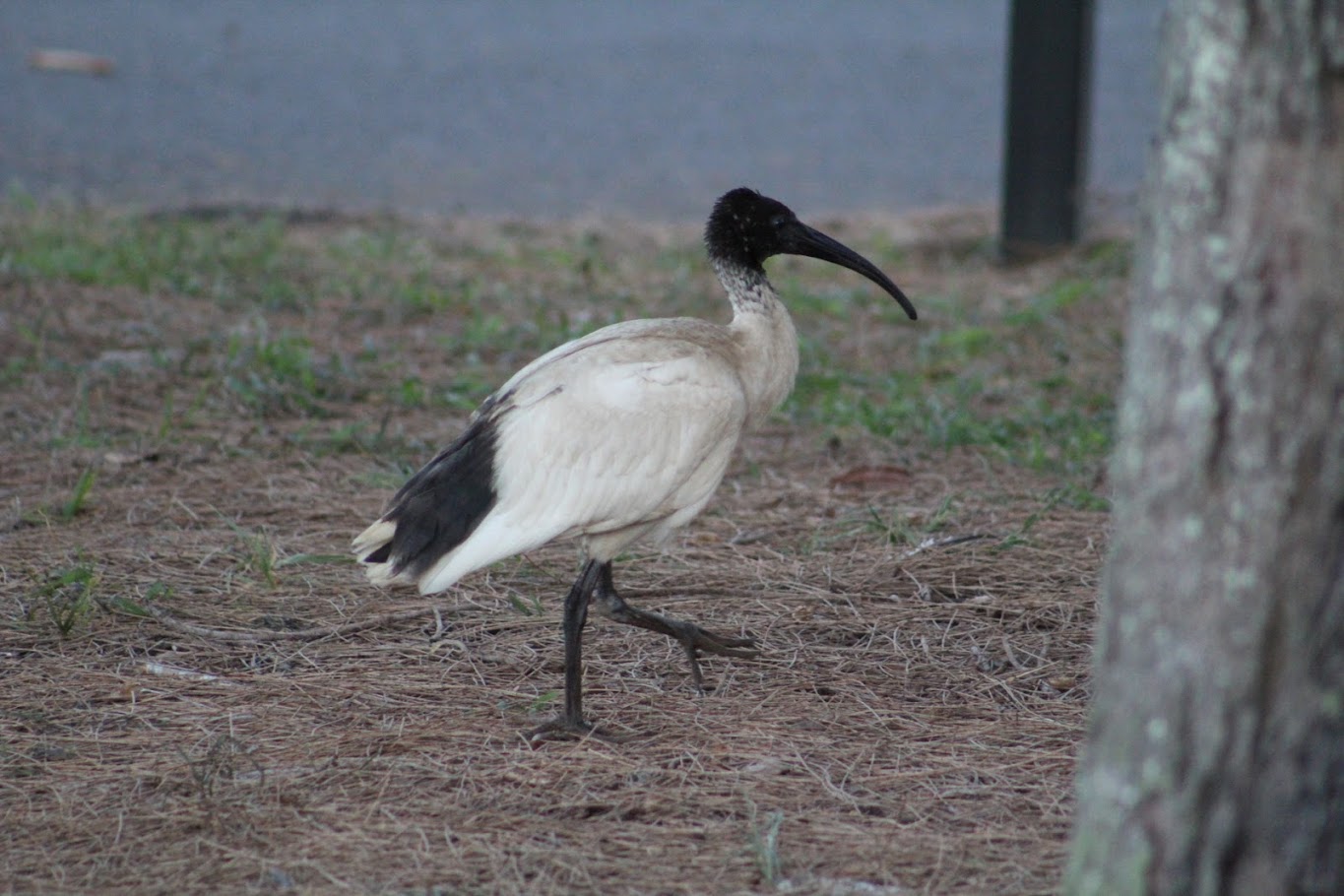
Place-Based Cultural Immersion Opportunities
The NSW Department of Planning and Environment has launched a statewide expression of interest to identify local Aboriginal service providers that can offer place based cultural immersion training for employees as part of the department’s Aboriginal Cultural Capability Framework.
DPE Director of Aboriginal People and Cultural Affairs, Amanda McCarthy, said the framework will provide employees with comprehensive learning to improve Aboriginal cultural awareness and capabilities, enabling them to deliver the very best services in partnership with Aboriginal communities.
“Aboriginal people and cultures are so diverse that a ‘one size fits all’ approach to cultural learning won’t work,” Ms McCarthy said.
“Employees need to immerse themselves in their local communities or on Country with Traditional Custodians, knowledge holders and language speakers and understand their intrinsic connections with Country and the broader community,” Ms McCarthy said.
Through the expression of interest process, DPE aims to establish a panel of preferred Aboriginal suppliers across NSW who can provide cultural immersion experiences and share the richness and diversity of Aboriginal culture and history on Country.
With about 10,000 employees in the Department of Planning and Environment around NSW, the establishment of the panel represents real and tangible economic development opportunities for Aboriginal people, communities, and business.
DPE works across a wide area of government services including Planning, Water, Aboriginal Housing, Social Housing and Property, Crown Lands, Office of Local Government and Environment, Energy, Heritage and Science.
The expression of interest will run from 15 May to 19 June 2023 to identify potential Aboriginal service providers who will be shortlisted and invited to tender for the delivery of services based on their local cultural knowledge.
Further information on the expression of interest can be found here: tenders.nsw.gov.au
Lake Illawarra Site To Remain In Public Hands
May 2023
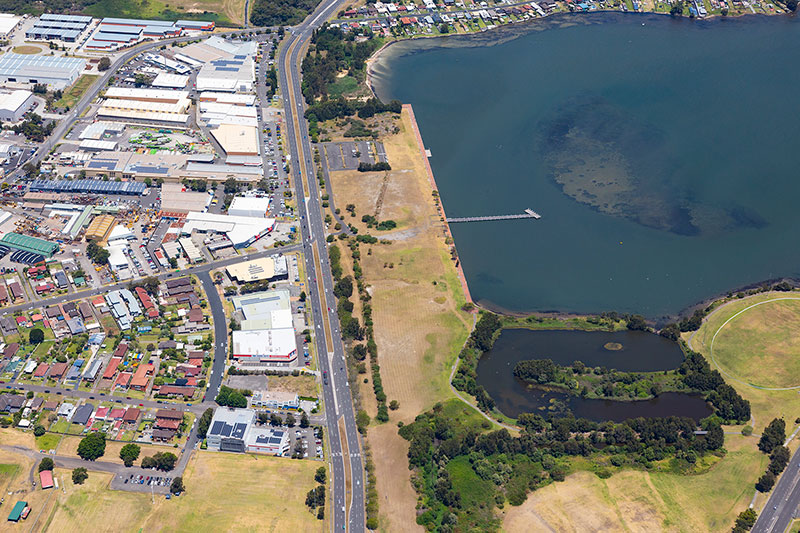 The NSW Government will retain ownership of an 8.2-hectare parcel of land on the Lake Illawarra foreshore at Warrawong and develop a plan to transform the foreshore location into a must-visit destination for Illawarra locals and visitors.
The NSW Government will retain ownership of an 8.2-hectare parcel of land on the Lake Illawarra foreshore at Warrawong and develop a plan to transform the foreshore location into a must-visit destination for Illawarra locals and visitors.
Minister for Lands and Property Steve Kamper said the Government had listened to community feedback and will not sell the site at King Street and Northcliffe Drive.
“During the election campaign we listened to the community, and we are now making good on our commitment not to sell the site,” Mr Kamper said.
“The Government, where appropriate, has a responsibility to make sure public land remains in public hands and is used to benefit the community.
“This site is on a prime location on the foreshore, and we want to extend the current public uses to create a world-class space for locals and visitors to enjoy.”
Mr Kamper said the Government’s decision to retain the site had been informed by community feedback.
“We received more than 200 submissions, which shows how important this site is to the local community, and we’ve heard them loud and clear,” Mr Kamper said.
Minister for Planning and Public Spaces and Member for Wollongong Paul Scully hailed the decision to retain the site.
“I’ve made it abundantly clear that this land should be kept in public hands, and I welcome Minister Kamper’s swift decision,” Mr Scully said.
“We will now work on identifying opportunities for this wonderful public space to make it more of a drawcard for the local community and visitors to the region.”
Mr Kamper said work is also underway on more than $1.2 million in further upgrades to public jetties at Lake Illawarra.
“Crown Lands is upgrading Dix’s Wharf and Kanahooka Boat ramp jetties to create safe and contemporary access points on Lake Illawarra to support recreation and improve the areas for years to come,” Mr Kamper said.
Aerial view of Lake Illawarra Foreshore. Photo: NSW Gov.
Australia is in a unique position to eliminate the bee-killing Varroa mite. Here’s what happens if we don’t
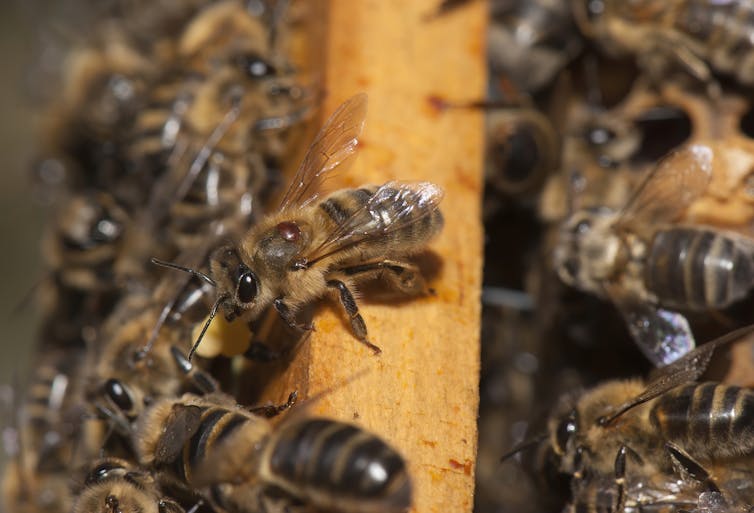
Varroa mites – notorious honey bee parasites – have recently reached Australian shores, detected at the Port of Newcastle in New South Wales last year. If they establish here, there would be significant implications for agricultural food security, as honey bees are heavily relied on for the pollination of many crops.
However, while Australia is the last continent to be invaded by the mite, it has an opportunity to be the first to eradicate it.
Varroa destructor is a small mite that attaches to bees and eats their “fat body”. The fat bodies of honey bees are the insect equivalent of a liver. Varroa weakens bees, reduces their lifespan and increases the spread of deadly viruses.
Scientists need to be ready: this might be Australia’s best chance to collect important data on the spread and evolution of this parasite. Our new paper published today in Biology Letters outlines what questions scientists need to ask and what data they need to collect if Varroa spreads in Australia.
Such data could help us understand how parasites evolve, why Varroa are so damaging for honey bees, and how Varroa mites impact other insects and the environment.
Will Varroa Establish In Australia?
Australia is in close proximity to countries that have the mite, including New Zealand, Papua New Guinea, Timor-Leste and Indonesia.
This probably explains why invasive honey bee swarms are frequently intercepted at our ports, many of these carrying Varroa. Australia currently bans importation of honey bee colonies due to the biosecurity risk, so these interceptions are typically due to stowaway swarms taking up residence in shipping containers.
Previous invasions of Varroa have been successfully eradicated before establishing, but this time Varroa circumvented the biosecurity surveillance near Newcastle and spread locally.
The New South Wales Department of Primary Industries has been contact-tracing and culling hives in contaminated areas, and the spread has been slow so far. Australia has large populations of feral honey bees, which could potentially act as a reservoir for Varroa and are much harder to trace and control, so the department is tackling this with a wild honey bee baiting program.

What Threats Does Varroa Pose?
Varroa mites are a threat to food security. Although Australia has an abundance of food and exports it to other nations, the price of food is likely to increase if Varroa escapes confinement.
Currently, pollination of crops in eradication zones such as berries in Coffs Harbour is at risk due to the removal of all honey bees in the region, which may lead to short-term increases in food costs.
However, establishment and spread of Varroa will lead to lower pollination and lower crop production across the country, which will raise the price of most fruit and vegetables that depend on bee pollination.
This could worsen the food affordability crises caused by the current inflation, affecting the ability of low income households to buy nutritious and fresh produce. Almond pollination has already noted a deficit of 80,000 hives in the last season.
Many of the honey bee colonies that pollinate our crops are thought to be feral, living in tree hollows or nest-boxes designed for native animals. These feral bees are not managed by beekeepers and so won’t be saved by the use of Varroa treatments, meaning they will most likely disappear.
Varroa may be a threat to wild pollinators including native bees. Varroa often spreads viruses, which can jump between species and may threaten our wild native pollinators. Of particular concern are viruses that deform insect wings and cause paralysis. Fortunately, these viruses have not been detected in the current Varroa incursion.
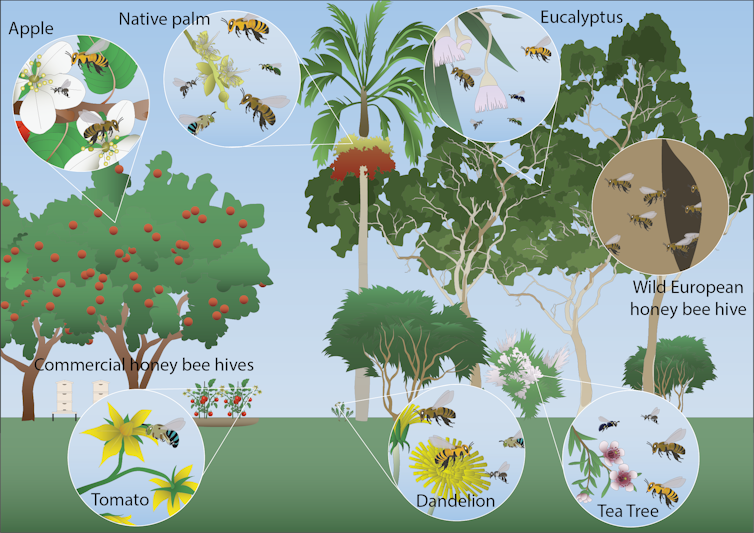
How Can We Secure Australia’s Agricultural Industry?
Australia’s agricultural industry relies mostly on pollination by European honey bees. This choice has been risky.
In Europe, pollination services are also provided by diverse species like bumble bees, mining bees and mason bees (e.g. Osmia rufa), many of which are un-managed wild species that nest alone.
If Varroa escapes confinement, beekeepers will still be able to maintain colonies of honey bees but at greater costs, due to colony losses and the need for chemicals to treat Varroa mites in the hives. These costs have the potential to sink businesses, and affect the livelihoods of beekeepers.
Australia needs to decrease its reliance on the European honey bee in agriculture and improve pollinator diversity via the use of other native pollinator species such as native stingless bees, blue banded bees, or even flies. For example, native Australian stingless bees aid in the pollination of macadamia and capsicum crops and could be used for the pollination of other crops.
Australia’s Unique Situation
Australia is different from other Varroa infected regions of the world. Our incursion was smaller, it was identified early and the management zone is small enough to be feasibly eradicated.
Even if Varroa spreads in Australian landscapes, hopes are that the pace of the spread may be slower in Australia than it was in other regions due to the smaller incursion, the colossal eradication effort and large tracts of land that are inhospitable to honey bees. Managed honey bee populations are concentrated around coastal regions, or in Australia’s major rural food bowl regions where pollinator-dependant crops (such as almonds, blueberries and apples) are located.
This gives us a chance to prevent the spread of Varroa across inland Australia, where there are no honey bees.
Luckily for us, most of the world has already spent the last few decades trying to minimise Varroa mite management costs. As a nation, we now have the chance to initiate a fresh and coordinated management response. Australia could organise state-wide integrated pest management approaches and treatment regimes to prevent Varroa’s resistance to chemical treatments from developing rapidly.
In short, there are good reasons to remain positive about the future of Australian beekeeping and horticultural industries, but there is still much work for our research community to do.![]()
Scarlett Howard, Lecturer, School of Biological Sciences, Monash University; Alexander Mikheyev, Group Leader, Mikheyev Group - Evolutionary genomics, Australian National University; Emily Remnant, Lecturer, School of Life and Environmental Sciences, University of Sydney; Simon Tierney, Research fellow, Western Sydney University, and Théotime Colin, , Macquarie University
This article is republished from The Conversation under a Creative Commons license. Read the original article.
With hundreds of call-outs every day, wildlife rescue services can help us understand the threats to our native animals
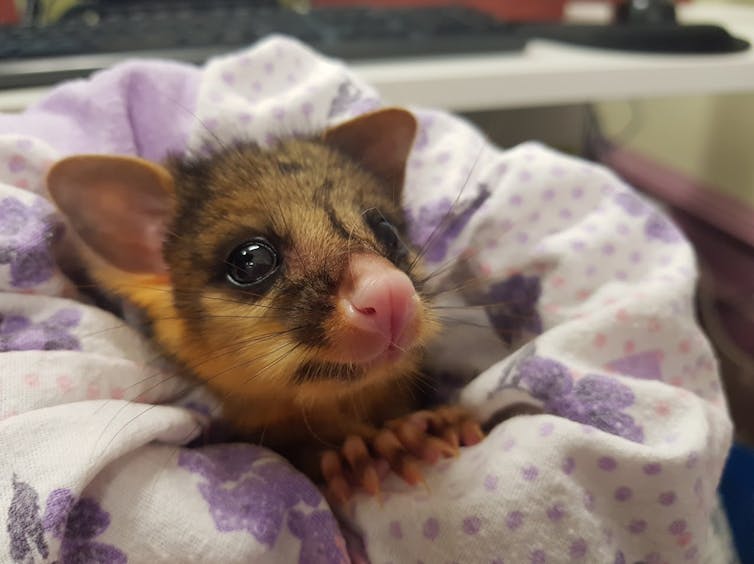
Imagine coming across an injured kangaroo on the side of the road. Or a bat entangled in fruit tree netting. Would you know who to call to get help?
After a quick search, you find the number of your local wildlife rescue service and give them a call. A trained operator gathers the information they need to assess your case and coordinate rescue and rehabilitation if needed.
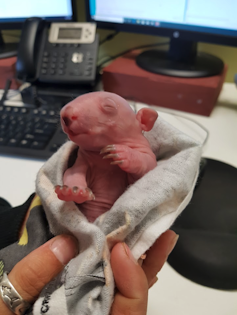
Across Australia, wildlife emergency response hotlines, such as Wildlife Victoria in Victoria, WIRES in New South Wales and smaller groups throughout the country, offer valuable help to wildlife and members of the public who encounter wildlife emergencies. Data from these services can also help us understand how human activities harm wildlife at a local level. And that in turn highlights what can be done to better protect wildlife.
In newly published research, our team analysed a ten-year dataset from Wildlife Victoria, the main wildlife emergency response service in that state. The service responded to more than 30,000 cases a year, on average, between 2010 and 2019. Around 400 cases a year involved threatened species.
Human Activities Are The Greatest Threat
Many such services operate on a daily basis. They collect enormous amounts of information on human and non-human threats to wildlife, particularly in urban areas.
When you call a service about an animal, a rescuer might need to attend or, if safe to do so, you might be asked to take the animal to a vet clinic free of charge for assessment. Or it might be that the animal, such as a fledgling bird on the ground, just needs to be left alone.
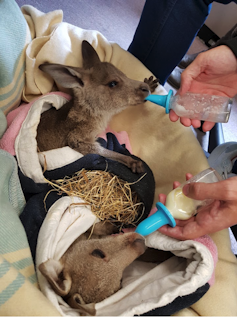
Confirming what studies in Australia and elsewhere have shown, our results demonstrate that human activities do the most harm to wildlife, as opposed to more natural causes such as severe weather or being preyed on by other animals. A majority of cases were reported in the Greater Melbourne area rather than the rest of the state.
As might be expected, common species accounted for most cases. Eastern grey kangaroos, ringtail and brushtail possums and magpies were the most commonly reported species.
Of 443 identified species reported to the service, 81 were listed as threatened. The majority of cases involving threatened species (on the Fauna and Flaura Guarantee Act 1988 Threatened List) concerned grey-headed flying foxes.
Generally, the main causes for concern were collisions with vehicles, animals found in an abnormal location (an unnatural habitat where they did not belong) or in buildings, and attacks by cats or dogs.
Some species were disproportionately impacted by some threats rather than others and in some locations. For example, kangaroos and koalas were more likely to be victims of vehicle collisions outside Greater Melbourne. In contrast, ringtail possums were more likely to be attacked by cats within the metropolitan area.
Flying foxes were more frequently reported within Greater Melbourne. The main cause of concern was entanglements in nets such as fruit tree netting. The data thus confirmed the danger these nets present.
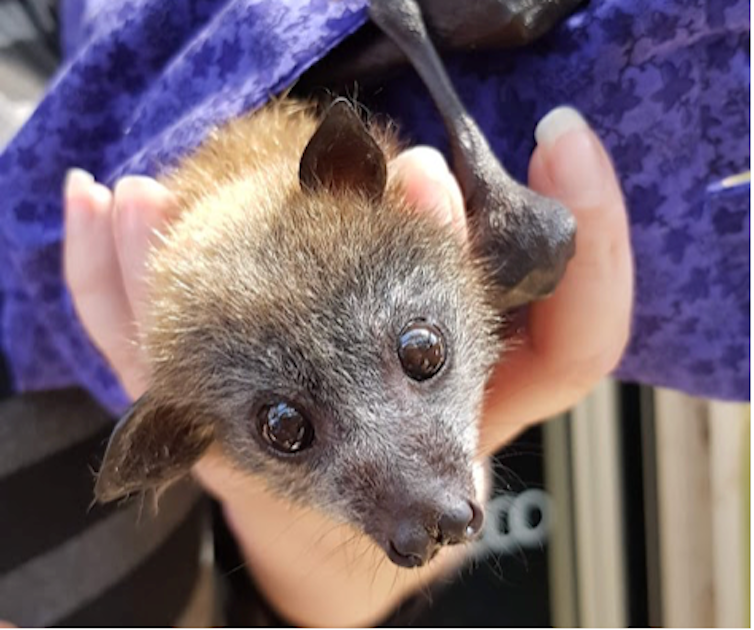
Services Struggle To Keep Up With Demand
Worryingly, Wildlife Victoria recorded a 2.5-fold increase in reported cases from 2010 to 2019.
However, such services are often under-resourced. While the number of cases increased, the number of volunteers able to respond to cases did not. This means a lower proportion of all cases can receive the support they need.
Using data from services such as Wildlife Victoria can help us understand service-demand gaps and where resources would be best allocated to fill these gaps.
We also showed such services provide invaluable education to the community. Around one in five calls resulted in education, rather than requiring an emergency response.
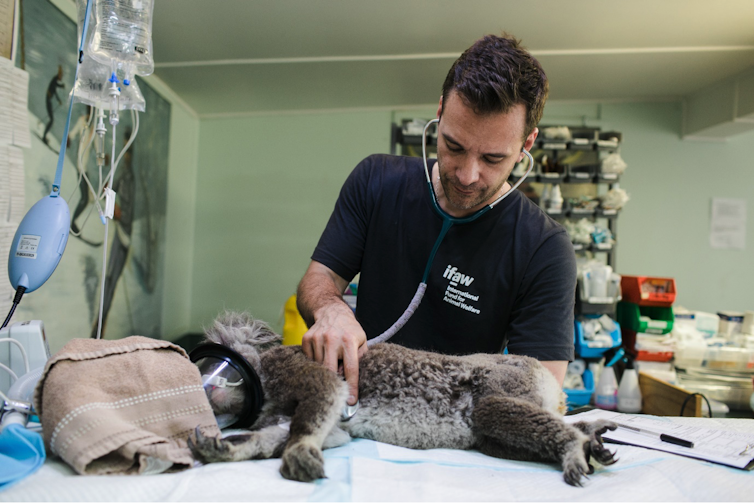
Databases Are A Largely Untapped Resource
Wildlife emergency response services have a wealth of data that describe the species-specific and location-specific threats wildlife face. Local wildlife managers and organisations interested in protecting wildlife from common threats before they occur could use this data to understand what they can do to achieve this.
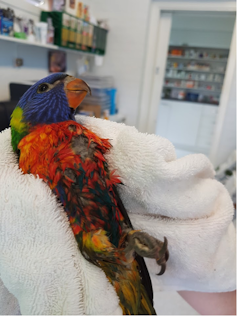
For example, the data can help pinpoint where measures such as educating the community on responsible pet ownership, banning the sale of dangerous netting or wire and reducing speed limits would be effective depending on the wildlife affected in specific areas.
The data could also help monitor the success of new laws, campaigns and measures to protect wildlife. For example, researchers in Queensland have used data from their local wildlife rescue services to quantify the reduction in koala deaths from car strikes and dog attacks following a campaign to raise awareness of threats to koalas. This source of information is invaluable because such data can be hard and costly for ecologists and conversationists to collect.
Interested in interacting with Wildlife Victoria’s historical data? Check out this webpage. ![]()
Elodie Camprasse, Research fellow in spider crab ecology, Deakin University and Adam Cardilini, Lecturer, Environmental Science, School of Life and Environmental Science, Faculty of Science, Engineering and Built Environment, Deakin University
This article is republished from The Conversation under a Creative Commons license. Read the original article.
From mangroves to fjords, coastal ecosystems can take up or emit greenhouse gases. But globally, they’re a vital sink
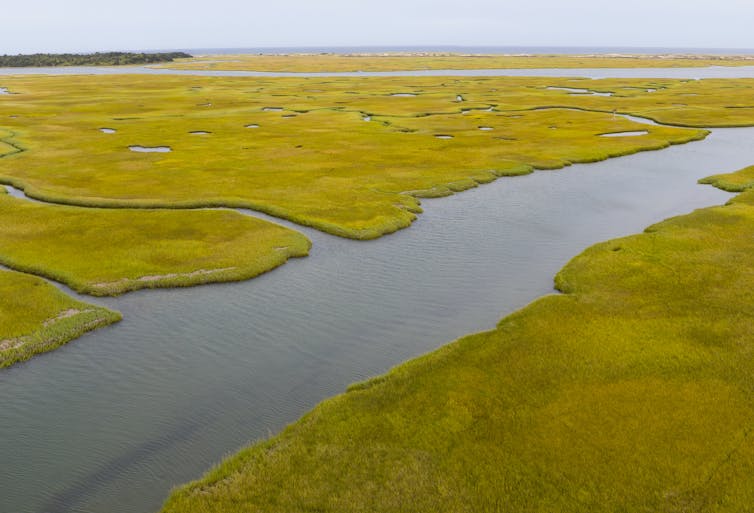
Coastal ecosystems can absorb or emit the three main greenhouse gases: carbon dioxide, methane and nitrous oxide.
We explored how coasts in ten regions of the world differ in greenhouse gas uptake and emissions. Our research published today in Nature Climate Change finds that, globally, our coastal ecosystems are a net greenhouse gas sink, but smaller emissions of potent methane and nitrous oxide gases reduce some of the carbon dioxide uptake.
We found coasts in Europe and Russia are net emitters, while coasts in Southeast Asia and North America have a large uptake of these gases.
Like upland forests and rainforests, ecosystems like coastal wetlands can take up atmospheric CO₂ and turn it into new leaves, roots and other organic matter. When some of this carbon is stored long-term in deep sediments, it can help battle rising CO₂ levels in our atmosphere.
The coastal net greenhouse gas uptake should not be confused with carbon storage. Only part of the coastal greenhouse gas uptake is stored long-term in coastal sediments, while another part is transported to the ocean where it might be stored or released back to the atmosphere.
Not All Coasts Are The Same
Africa and Australia have large swathes of sandy coastline and coastal wetlands. By contrast, Europe and Russia’s cold coastline lacks mangroves or tropical coastal wetlands. These differences drive the changes we found in how different coasts take up or emit greenhouse gases.
The strongest coastal greenhouse gas sink is Southeast Asia, because of its extensive and productive tropical mangrove forests and seagrasses which soak up large amounts of CO₂. North America’s coast is another excellent sink for greenhouse gases, with its salt marshes, mangroves, seagrasses – and Canada’s fjords, glacier-made valleys filled with seawater.
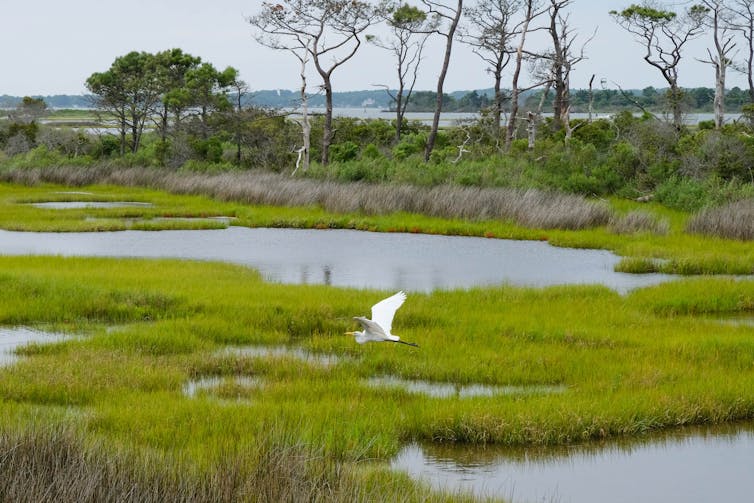
While Australia and New Zealand have long stretches of coastal wetlands soaking up CO₂, this is offset by a large number of estuaries, many of which are a source of greenhouse gases produced by decaying organic matter.
Coasts in Europe and Russia actually release more greenhouse gases than they absorb. Their many polluted tidal estuaries release greenhouse gases, but the colder climate means this region has fewer coastal wetlands to soak these gases back up.
But across the three main greenhouse gases, eight out of the ten world coastal regions are a net greenhouse gas sink.
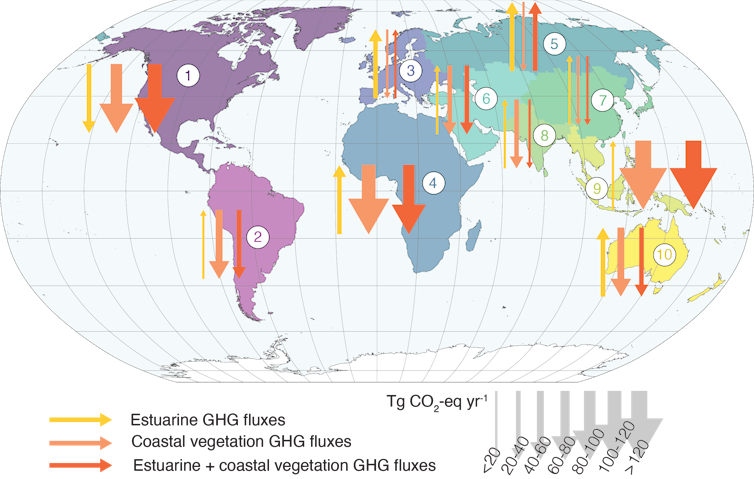
Some Coasts Soak Up Greenhouse Gases While Others Emit More
The world’s coastal ecosystems are enormously diverse, ranging from tropical lagoons to polar fjords to coastal mangrove forests to underwater seagrass meadows. This sheer variety means they differ greatly in how they take up or release greenhouse gases.
For example, we show that fjords around the world take up around 40% of CO₂ that would otherwise be released from tidal systems, deltas and lagoons. Most (86%) of this important CO₂ uptake by fjords comes from the North America region.
By contrast, salt marshes and mangroves are home to trillions of microorganisms which live in deep, oxygen-free sediments, eating dead organic matter and emitting methane and nitrous oxide. Some of these gases reach the atmosphere, making many coastal waters a source of methane and nitrous oxide.
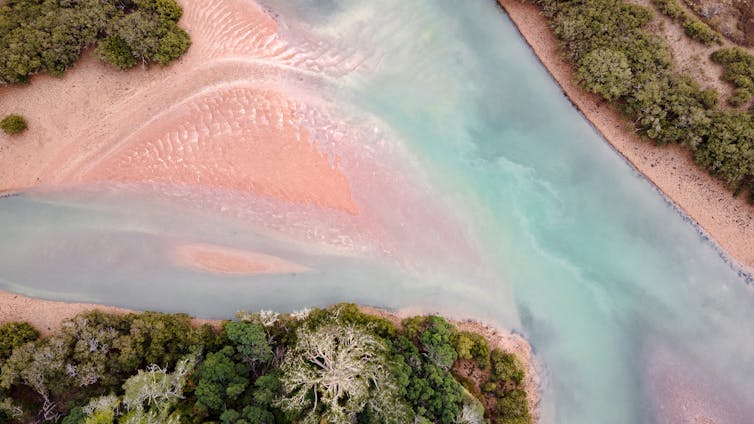
Coastal wetlands release more than three times more methane than all estuaries in the world. But coastal wetlands, also called coastal “blue carbon” wetlands, can be strong sinks of CO₂ and some also take up nitrous oxide. On balance, these coastal ecosystems become a net greenhouse sink when we consider the net effect of these three most important greenhouse gases.
What does the big picture look like? Globally, our research shows our coasts’ ability to take up CO₂ is offset between 9% and 20% by coastal methane and nitrous oxide emissions.
Why Is This Knowledge Important?
If we understand how our coastal ecosystems take up or emit greenhouse gases, we can target the most crucial ecosystems for preservation or restoration.
That’s why many researchers are interested in blue carbon as a way to boost long-term carbon storage. By protecting and restoring mangroves and salt marshes in nations rich in blue carbon, such as Indonesia, we can expand their ability to take these gases back out of the atmosphere and ultimately store some of the carbon long-term in their sediments.
And by reducing nutrient overload, organic matter and wastewater flows into our coastal waterways, we can cut the greenhouse gases emitted by polluted estuaries.
We shouldn’t just see our coastal ecosystems as a boon to carbon credit markets. They have much more to offer, including many valuable ecosystem services. Our coasts protect our shorelines from severe weather and tides. They are a nursery for many fish and plants. And they’re vital to us as a place to be in nature.
Protecting our coasts is good for us, for nature and for the earth system as it plunges into the climate crisis.
Acknowledgements: We would like to thank our international team of scientists and the Global Carbon Project for initiating this research.![]()
Judith Rosentreter, Senior research fellow, Southern Cross University and Bradley Eyre, Professor of Biogeochemistry, Director of the Centre for Coastal Biogeochemistry, Southern Cross University
This article is republished from The Conversation under a Creative Commons license. Read the original article.
After the chainsaws, the quiet: Victoria’s rapid exit from native forest logging is welcome – and long overdue
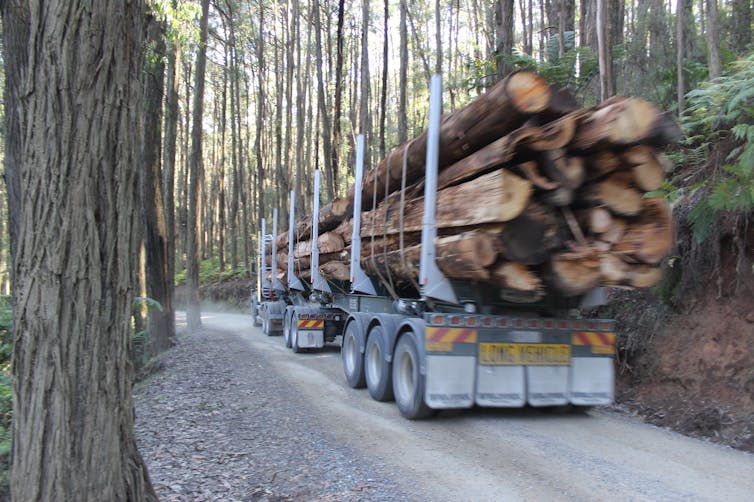
By the end of the year, Victoria’s trouble-plagued native forest industry will end – six years ahead of schedule. The state’s iconic mountain ash forests and endangered wildlife will at last be safe from chainsaws. And there will be no shortage of wood – there’s more than enough plantation timber to fill the gap.
Tuesday’s announcement by Premier Daniel Andrews is excellent news for forests, the state’s economy, and its threatened species. We congratulate the Victorian government for this decision.
Ending native forest logging is long overdue. For decades, we’ve known of how much damage it does to biodiversity. Logging vast areas of Victoria’s native forests over the past several decades has pushed many once-common animals, such as the greater glider, to become endangered.
Even now, the last remaining logging areas proposed under the state’s Timber Release Plan overlap directly with the areas of highest conservation value for biodiversity.
Our research has catalogued the damage done to produce low-value products such as woodchips and paper pulp. The industry never made economic sense. The state-owned logging company, VicForests, has been running at a loss for many years. The industry can switch to our abundant plantations of eucalyptus and pine.
What Damage Did Native Forest Logging Do?
The vast majority of areas slated for logging provide habitat for more than 50 threatened and rare species. We know that the more forests are logged, the less likely we are to find species such as the critically endangered Leadbeater’s Possum. Logging pushes species into decline. Common species become threatened and threatened species move closer to extinction.
The lead author of this article has been part of a team conducting ecological monitoring and research in Victoria’s forests for almost 40 years.
We have seen the damage first-hand. We’ve watched old forests of high conservation value be clearfelled when they should not have been. We’ve watched essential habitat such as large old trees, with their all-important nesting hollows, become rarer and rarer.
We have seen extraordinary animals such as the Southern Greater Glider go from the most common species identified in night surveys to so scarce they’re now endangered.
We have seen once intact landscapes become dominated by highly flammable young forest at risk of extremely severe wildfires.
And we watched in dismay as logging fragmented landscape. Now up to 70% of Victoria’s critically endangered mountain ash forests are either severely disturbed by wildfire and logging or within 200 metres of such areas.
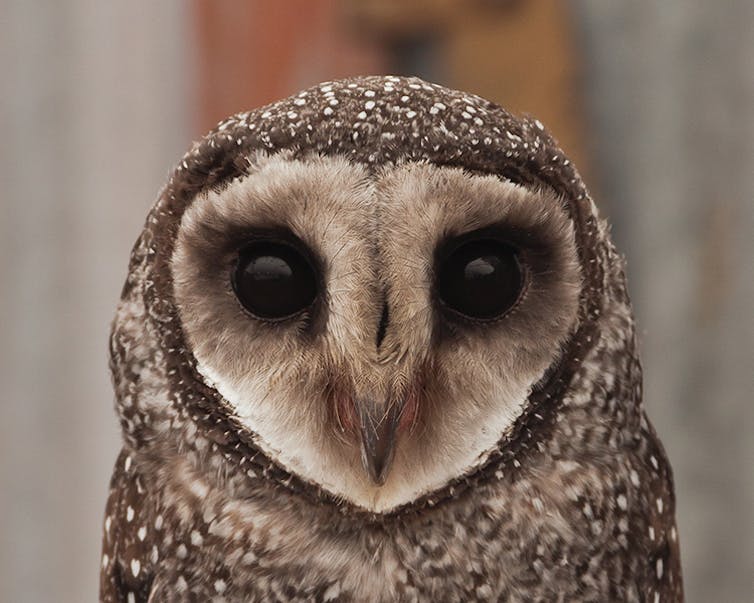
Native Forest Logging Never Made Sense
Almost all (86%) of felled native forests in Victoria are turned into low-value products such as woodchips, paper pulp and boxliners.
In 2018, we estimated sawn timber equates to just 14% of the volume of logs cut from native forests.
By contrast, more than 80% of all sawn timber in Victoria comes from plantations. Native forest timber does not help build houses.
Bringing forward the end of native forest logging from 2030 will be a major boost for climate action – equal to removing 730,000 petrol or diesel cars from our roads every year. This single decision gives Victoria – and Australia – a far greater chance of meeting their emissions reductions targets.
In its last annual report, VicForests announced a loss of A$54 million and a loan of $80 million. It’s now propped up only by the Victorian Treasury.
Even before these losses, the Victorian Parliamentary Budget Office showed the state would be $190 million better off without it.
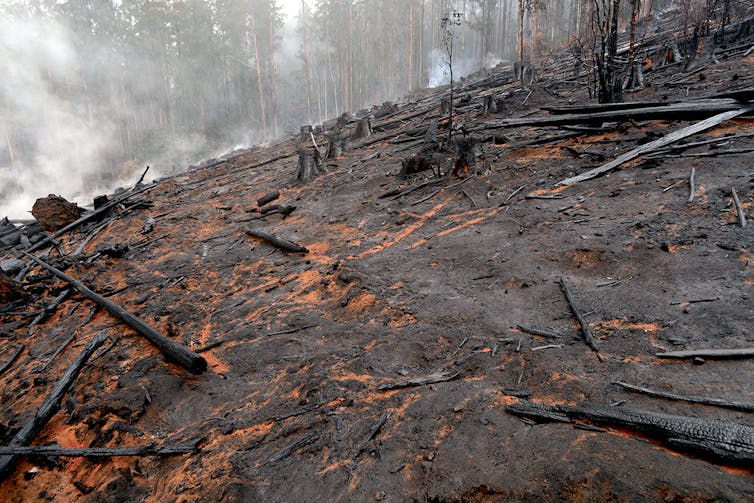
How Can We Help Forests Recover?
Ending logging will take pressure off our forests. But we can’t simply walk away from heavily damaged areas. Many areas have never properly regenerated after logging or repeated fire.
In north-eastern Victoria, years of logging have warped the composition of tree species in the forest; many areas are dominated by trees that are largely unsuitable as food sources for koalas and greater gliders.
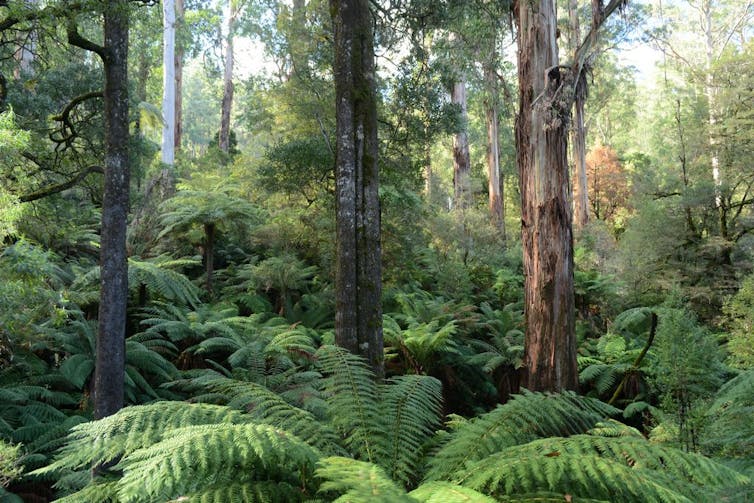
The urgent task is to restore forests across Victoria while managing fire and invasive species such as deer.
That’s not all. We will still need wood and paper. Ending native forest logging requires getting things right in Australia’s plantations.
At present, we export up to 95% of all plantation eucalypt logs we grow for processing overseas. That’s a missed opportunity for local jobs.
Even now, the plantation sector is crying out for more workers in haulage and processing. This sector offers comparable jobs for workers leaving the native forest sector. But there will be other jobs: forest restoration, firefighting, feral animal control, carbon stock management and more. Getting the transition right is important.
The exit from native forest logging must now be coupled with the declaration of a Great Forest National Park in the Central Highlands region. The region has been a hotspot for native forest logging in recent decades.
It’s almost ten years since the state’s then-environment minister Lisa Neville promised this park would be declared. Once established, the new park should be co-managed with First Nations peoples to ensure Aboriginal self-determination, as well as good opportunities to work on Country.
Today is a day for celebrating. At last, Victoria’s government has acted for the future. Preserving our native forests is worth much more in carbon storage, water production and tourism than they ever were as woodchips.
Victoria’s move is a clarion call for other Australian states still doggedly logging their precious forests. ![]()
David Lindenmayer, Professor, The Fenner School of Environment and Society, Australian National University and Chris Taylor, Research Fellow, Fenner School of Environment and Society, Australian National University
This article is republished from The Conversation under a Creative Commons license. Read the original article.
Study finds 2 billion people will struggle to survive in a warming world – and these parts of Australia are most vulnerable
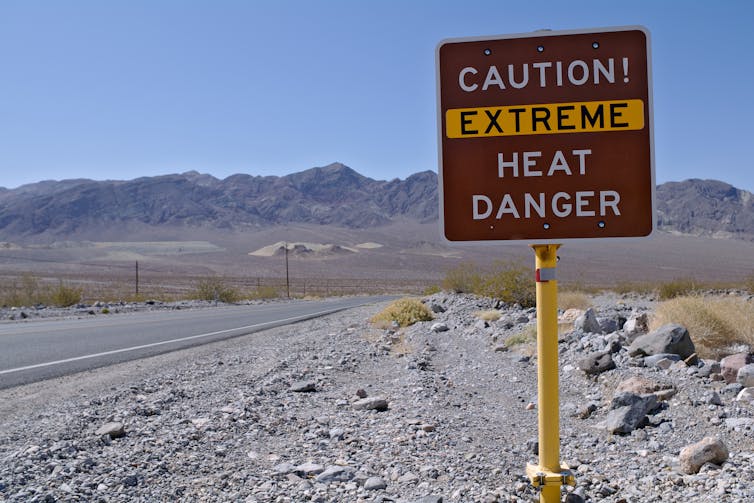
Two billion people, including many Australians, will find themselves living in dangerously hot places this century if global warming reaches 2.7℃, research released today reveals.
The authors calculated how many people would be left outside the “human climate niche” by 2100. The niche is defined as places with an average temperature of about 13℃, or about 27℃ in the tropics. Human population has historically peaked in these areas.
The world is on track for 2.7℃ of warming by 2100. This would push a third of people on Earth outside the human climate niche. This includes people in parts of northwest Australia such as Darwin, Broome and Port Hedland. It also includes parts of Southeast Asia, India, Africa and South America.
Limiting warming to 1.5℃ would substantially reduce the number of people exposed, including most of those affected in northwest Australia.
We were not involved in the research, which was conducted by researchers in the United Kingdom, China, Europe and United States. We are Australian experts in the health implications of global warming. Below, we discuss the broader implications of these globally significant findings.
What Is The Human Cost Of Global Warming?
The research calculated the number of people outside the “human climate niche” under different demographic scenarios and levels of warming. Exposure to unprecedented heat was the main factor pushing people out of the niche.
This includes an average temperature greater than or equal to 29℃, as well as a high number of days with a maximum temperature above 40℃ or in humid places, with a wet-bulb temperature greater than 28℃. The wet-bulb temperature (as opposed to the standard dry-bulb temperature) reflects humidity and is a method used to measure heat stress. That’s because it’s the point at which sweating is no longer effective as a means of cooling.
The study says a wet-bulb temperature of 35 ℃ can be fatal, especially for vulnerable people, because the body can no longer cool itself.
Above the present level of about 1.2 ℃ global warming, the authors found exposure to unprecedented average temperatures increased markedly, along with increased exposure to temperature extremes.
But 2.7 ℃ of warming threatens a third of the world’s population. The below map shows where in the world people will suffer the worst heat. Almost the entire area of some countries, such as Burkina Faso and Mali in West Africa, would be exposed to unprecedented heat.
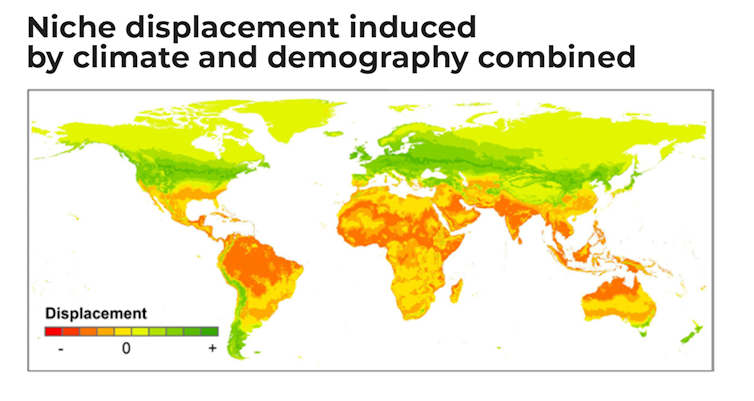
Why Is Warming A Health Hazard?
Just last week, the World Meteorological Organization predicted global surface temperatures would rise to record levels within the next five years. The temperature is also likely to temporarily climb 1.5℃ above pre-industrial levels.
This spells trouble for human health. Even incremental warming increases exposure to health hazards including potentially deadly heatwaves, infectious diseases and diet-related health issues.
Let’s be clear. A 1.5℃ world will result in injury and death, particularly for people in Asia and Africa. Importantly, the people most at risk will be the least capable of protecting themselves: children, the elderly and those with existing health conditions.
While populations closer to the equator are more likely to experience heat-related harm, Australians are by no means immune.
For example, a 2019 study found heat-related health issues in Australia have been grossly underestimated. It found more than 36,000 deaths between 2006 and 2017 were attributable to heat.
And experts predict Darwin could experience an average 265 days a year above 35℃ in a 3℃ warmer world.
As in other parts of world, primarily high-risk populations in Australia will experience some of the worst impacts from a changing climate. In essence, climate change creates and maintains health inequities.
To date, the Earth’s average surface temperature has warmed 1.2℃ above pre-industrial levels. We must enact ambitious climate policies now if we are to change our dangerous trajectory.
For too long, we have focused disproportionately on the economic costs of climate action for current – often wealthy – groups at the expense of considering the economic costs of inaction for all, including future generations.
Historically health has rarely been included in these economic assessments, much less ethical considerations. Emissions reduction policies need to consider health and equity issues, and in doing so can provide governments with a strategic rationale to act.
How Can Extreme Heat Harm Health?
There are multiple ways in which climate change can harm human health. Extreme heat can have direct effects, such as dehydration and heat stroke. Groups most at risk include the elderly and those already unwell.
Extreme heat can also harm mental health, increasing rates of injury and death by aggravating existing mental illness. Beyond direct effects, heat can affect health by influencing, for example, agricultural productivity, water security and air quality.
There are physiological limits to adaptation, particularly to heat. These limits can have negative consequences for labour productivity, especially for outdoor workers, and for health service demand, leading to increased hospital admissions, emergency department visits, and ambulance calls.
Pursuing adaptation measures in an effort to reduce the harmful effects of existing climate change is vital, but to protect the health of all, it is critical that we pursue strong emissions reduction measures.

Developing Healthier Climate Policies
Australian climate action targets have improved under the Albanese government, however they remain incompatible with keeping warming to 1.5℃.
Approving additional coal projects is not helpful for reducing emissions or demonstrating climate leadership.
A commitment to develop and implement a National Health and Climate Strategy and establish a National Sustainability and Climate Unit are promising initiatives. This will help to address our woeful performance in a recent assessment showing how national climate commitments don’t link with health.
Last week, the Victorian Government committed to reducing emissions by 75-80% compared with 2005 levels by 2035. Their analysis indicates it will lead to A$5.7 billion in health benefits from improved air quality between 2035 and 2045.
As today’s new research states, the findings highlight the need for “more decisive policy action to limit the human costs and inequities of climate change”. Australia, in particular, must protect children, the elderly and the broader population from the harms they face in a warmer world.![]()
Annabelle Workman, Research Fellow, Melbourne Climate Futures and Melbourne School of Population and Global Health, The University of Melbourne and Kathryn Bowen, Professor - Environment, Climate and Global Health at Melbourne Climate Futures and Melbourne School of Population and Global Health, University of Melbourne, The University of Melbourne
This article is republished from The Conversation under a Creative Commons license. Read the original article.
Antarctic alarm bells: observations reveal deep ocean currents are slowing earlier than predicted
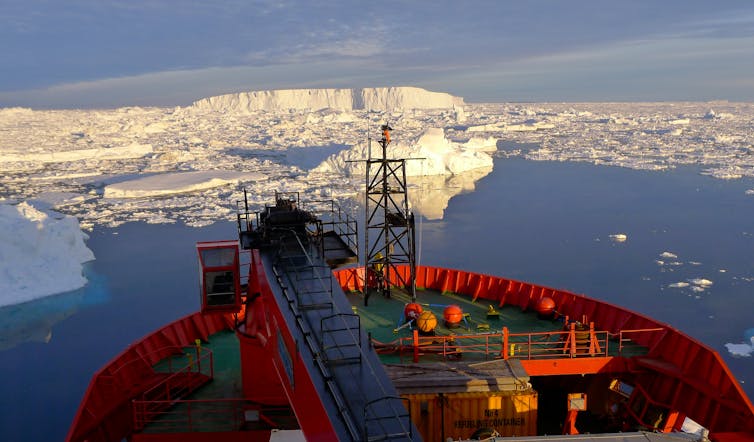
Antarctica sets the stage for the world’s greatest waterfall. The action takes place beneath the surface of the ocean. Here, trillions of tonnes of cold, dense, oxygen-rich water cascade off the continental shelf and sink to great depths. This Antarctic “bottom water” then spreads north along the sea floor in deep ocean currents, before slowly rising, thousands of kilometres away.
In this way, Antarctica drives a global network of ocean currents called the “overturning circulation” that redistributes heat, carbon and nutrients around the globe. The overturning is crucial to keeping Earth’s climate stable. It’s also the main way oxygen reaches the deep ocean.
But there are signs this circulation is slowing down and it’s happening decades earlier than predicted. This slowdown has the potential to disrupt the connection between the Antarctic coasts and the deep ocean, with profound consequences for Earth’s climate, sea level and marine life.
Our new research, published today in the journal Nature Climate Change, uses real-world observations to decipher how and why the deep ocean around Antarctica has changed over the past three decades. Our measurements show the overturning circulation has slowed by almost a third (30%) and deep ocean oxygen levels are declining. This is happening even earlier than climate models predicted.
We found melting of Antarctic ice is disrupting the formation of Antarctic bottom water. The meltwater makes Antarctic surface waters fresher, less dense, and therefore less likely to sink. This puts the brakes on the overturning circulation.
Why Does This Matter?
As the flow of bottom water slows, the supply of oxygen to the deep ocean declines. The shrinking oxygen-rich bottom water layer is then replaced by warmer waters that are lower in oxygen, further reducing oxygen levels.
Ocean animals, large and small, respond to even small changes in oxygen. Deep-ocean animals are adapted to low oxygen conditions but still have to breathe. Losses of oxygen may cause them to seek refuge in other regions or adapt their behaviour. Models suggest we are locked in to a contraction of the “viable” environment available to these animals with an expected decline of up to 25%.
Slowdown of the overturning may also intensify global warming. The overturning circulation carries carbon dioxide and heat to the deep ocean, where it is stored and hidden from the atmosphere. As the ocean storage capacity is reduced, more carbon dioxide and heat are left in the atmosphere. This feedback accelerates global warming.
Reductions in the amount of Antarctic bottom water reaching the ocean floor also increases sea levels because the warmer water that replaces it takes up more space (thermal expansion).
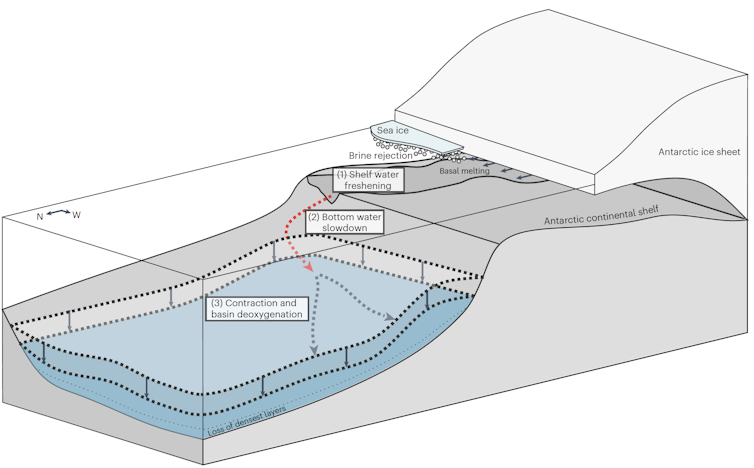
Signs Of A Worrying Change
Making observations of bottom water is challenging. The Southern Ocean is remote and home to the strongest winds and biggest waves on the planet. Access is also restricted by sea ice during winter, when bottom water forms.
This means observations of the deep Southern Ocean are sparse. Nevertheless, repeated full-depth measurements taken from ship voyages have provided glimpses into the changes underway in the deep ocean. The bottom water layer is getting warmer, less dense and thinner.
Satellite data shows the Antarctic ice sheet is shrinking. Ocean measurements taken downstream of regions of rapid melt show the meltwater is reducing the salinity (and density) of coastal waters.
These signs point to a worrying change, but there are still no direct observations of the deep overturning circulation.
What Did We Do?
We combined different types of observations in a new way, taking advantage of each of their strengths.
The full-depth measurements collected by ships provide snapshots of ocean density, but are usually repeated about once a decade. Moored instruments, on the other hand, provide continuous measurements of density and speed, but only for a limited time at a particular location.
We developed a new approach that combines ship data, mooring records, and a high resolution numerical simulation to calculate the strength of Antarctic bottom water flow and how much oxygen it transports to the deep ocean.
Our study focused on a deep basin south of Australia that receives bottom water from several sources. These sources lie downstream of large meltwater inputs, so this region is likely to provide an early warning of climate-induced deep ocean changes.
The findings are striking. Over three decades, between 1992 and 2017, the overturning circulation of this region slowed by almost a third (30%) causing less oxygen to reach the deep. This slowing was caused by freshening close to Antarctica.
We found this freshening reduces the density and volume of Antarctic bottom water formed, as well as the speed at which it flows.
The observed slowdown would have been even greater if not for a short-lived climate event that drove a partial and temporary recovery of bottom water formation. The recovery, driven by increased salinity, further illustrates the sensitivity of bottom water formation to salinity changes on the Antarctic continental shelf.
Worryingly, these observations show that changes predicted to occur by 2050 are already underway.
What Next?
Ice loss from Antarctica is expected to continue, even accelerate, as the world warms. We are almost certain to cross the 1.5℃ global warming threshold by 2027.
More ice loss will mean more freshening, so we can anticipate the slowdown in circulation and deep oxygen losses will continue.
The consequences of a slowdown will not be limited to Antarctica. The overturning circulation extends throughout the global ocean and influences the pace of climate change and sea level rise. It will also be disruptive and damaging for marine life.
Our research provides yet another reason to work harder – and faster – to reduce greenhouse gas emissions.![]()
Kathy Gunn, , CSIRO; Matthew England, Scientia Professor and Deputy Director of the ARC Australian Centre for Excellence in Antarctic Science (ACEAS), UNSW Sydney, and Steve Rintoul, CSIRO Fellow, CSIRO
This article is republished from The Conversation under a Creative Commons license. Read the original article.
A botanical detective story: shedding light on the journey out of Africa for one of Australia’s worst weeds
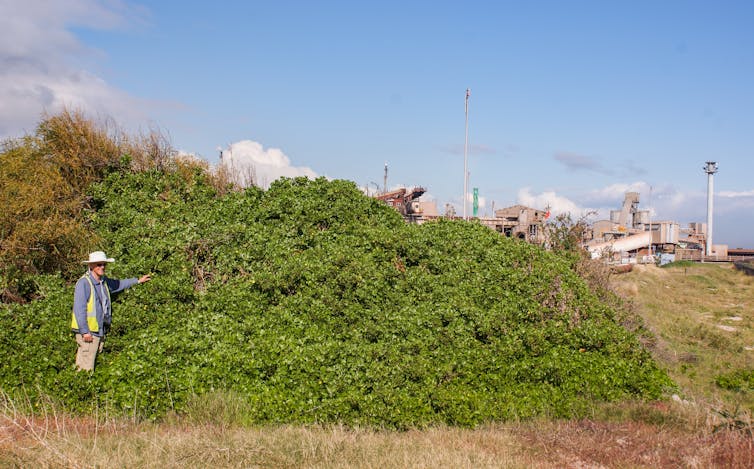
The scrubby harbour-side hills of a South African city recently revealed details of an historical event that transformed Australian coastlines. That event led to the arrival in Australia of a native South African shrub, bitou bush. The invader went on to become one of Australia’s worst weeds, smothering coastal dune vegetation.
While bitou bush has been widespread along Australia’s east coast for decades, the weed arrived in Western Australia relatively recently. The species (Chrysanthemoides monilifera subspecies rotundata) was discovered in 2012 at Kwinana, a port and industrial area south of Perth. This new invasion required urgent attention.
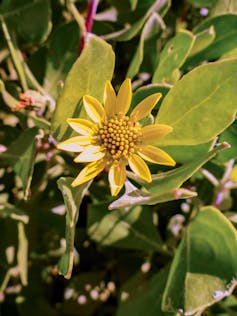
Knowing where a weed has come from is fundamental to managing it well. Understanding how plants are introduced to new regions can enable effective biosecurity measures to be put in place. Establishing a weed’s origin also reveals where to look for its natural enemies, such as insects or fungi, that can be used as classical biological control agents.
Our research set out to decipher how bitou bush originally entered Australia and then spread from east to west. We reveal how the chance of new bitou bush arrivals in Australia is low and better biological control is possible.
Establishing Relationships Between Populations
Earlier research on bitou bush established Australian populations went through “genetic bottlenecks”, meaning only a few plants, seeds or parts of plants arrived to begin with. However, the work was unable to identify a population in South Africa that was a genetic match to the bitou bush found in Australia.
Our new research took a more comprehensive approach to reveal plants from the South African port of East London were the likely source. Our findings suggested there was a single introduction of bitou bush to eastern Australia, with subsequent movement of material to establish the population in Western Australia more than a century later.

Travel By Ballast
To build confidence in our results, we scoured historical archives in Australia and South Africa for records that could support or refute these findings. Could we turn a plausible hypothesis into a feasible smoking gun?
In the storage racks of the National Herbarium of New South Wales lies a pressed sheet of dried plant material. Collected in 1908, this sample – later identified as bitou bush – was from the port-side suburb of Stockton in Newcastle. Newspaper reports revealed Stockton’s local government had been complaining for at least ten years about a weed threat from dry ballast, making it likely the introduction of bitou bush to Australia occurred even earlier.
Dry ballast consists of sand, soil, rocks and other matter used to provide stability to wooden sailing ships that had to travel without a heavy cargo load. This material was usually quarried at the port of departure. At the time, an increasingly large area in Stockton was reclaimed land comprised of ship’s ballast.
We found historical shipping records that showed ships were regularly leaving the South African Port of East London after taking on dry ballast, then sailing directly to Newcastle to collect coal. Before taking on coal, these ships discharged their dry ballast onto the ballast field at Stockton. We found documents showing that in 1904, more than half the ballast arriving in Australia was dumped at Stockton.
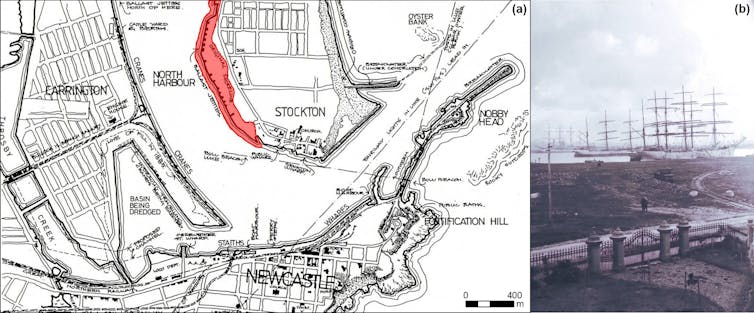
Historical maps revealed a ballast quarry on the west side of the Port of East London. This quarry existed in 1902 and exposed remnants can still be seen today. Bitou bush can still be found across the vegetation-covered hillsides near the old quarry. Their seeds are therefore likely to have been contaminants in dry ballast.

To Newcastle And Beyond!
The arrival of bitou bush at Stockton was the beginning of a wider invasion of the eastern Australian coastline. The plants now cover 1,600 km from Victoria to Queensland.
This spread included deliberate plantings for dune stabilisation in the 1950s. Our molecular work revealed these dune plantings were enabled by the local collection of seed from a limited number of plants, rather than new material from South Africa or widely sourced seed.
We were not able to conclusively identify the introduction pathway from New South Wales to Western Australia. However, contamination of steel shipments between Newcastle or Port Kembla and Kwinana, or landscape plantings for the companies involved, are considered most likely.
Why Does This Matter?
The discovery of a potential source population and pathway into Australia for bitou bush reveals two avenues for improved invasive species management.
First, it opens the door to improved biological control. Earlier ineffective agents were sourced in South Africa from populations distantly related to the material introduced into Australia. Many effective agents, particularly pathogens, are highly host specific. New surveys around East London could discover a more effective biological control agent.
Second, the work has clarified the ongoing risk of new introductions following the same pathway. Thankfully the use of dry ballast ceased with the move to steel-hulled ships carrying wet ballast, although the latter has its own biosecurity concerns.
More generally, the case of bitou bush in Australia highlights the problem of inadvertent outcomes from introducing plants, either accidentally or deliberately, without rigorous risk assessment. We must remain vigilant to the risk of introductions facilitated by global trade and maintain strict border biosecurity protocols.![]()
Bruce Webber, Principal Research Scientist, CSIRO and John Scott, Honorary Fellow, CSIRO
This article is republished from The Conversation under a Creative Commons license. Read the original article.
Biodegradable plastic in clothing doesn’t break down nearly as quickly as hoped – new research

Plastic pollution has emerged as one of the most pressing environmental challenges of our time. Over 100 million tonnes of plastic enters the environment each year, with more than 10 million tonnes ending up in our oceans. These plastics break down into harmful microplastic particles so small they can be consumed by wildlife.
We all recognise discarded bottles and bags as plastic waste. But the synthetic fibres that are woven into our clothing – polyester, nylon, acrylic and others – are equally problematic. Every year, more than 60 million tonnes of plastic fabric is produced, a considerable amount of which ultimately finds it way to landfill.
One promising approach to tackle this crisis is the use of “biodegradable” plastics. These plastics are designed to break down naturally into gases and water, which are then released back into the environment without causing long-lasting damage.
But the reality of biodegradable plastic (or “bioplastic”) falls short of meeting our expectations. New research, led by the Scripps Institution of Oceanography in San Diego, California, has found that a popular bioplastic material called polylactic acid does not break down in the environment nearly as quickly as hoped.
The researchers suspended fibre samples from both bio- and oil-based plastic materials, as well as natural fibres such as cotton, in coastal waters and on the seafloor. Over time, they examined these individual fibres under a microscope to see if they were breaking down. While cotton fibres began to break down within a month, synthetic fibres, including bioplastic materials such as polylactic acid, showed no signs of breaking down even after 400 days submerged in the ocean.
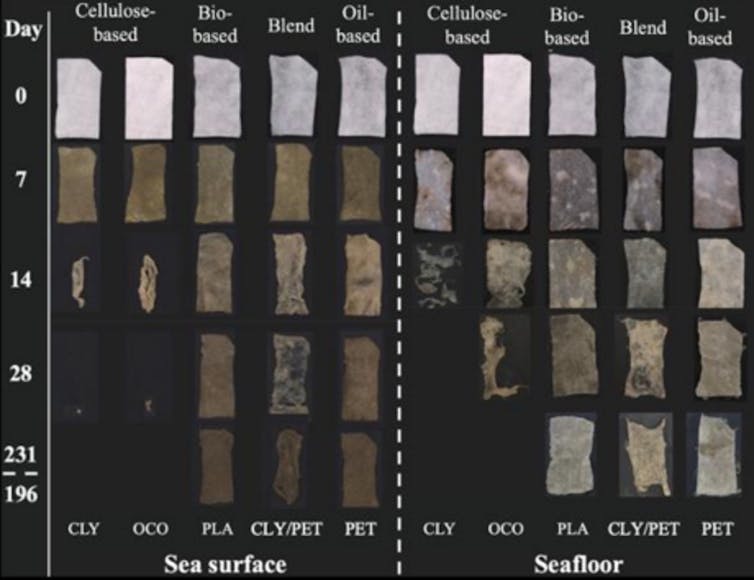
Finding Their Way Into The Sea
The plastic pollution that stems from clothing is a particularly tricky area. Clothes are often not recycled or even recyclable, and they release tiny plastic fibres into the environment through gradual wear and tear.
Clothing fibres can reach our oceans via multiple pathways. Clothes that are washed into the sea, for example, will be broken up physically by wave action or friction with sand particles. This process leads to the release of fibres as the garment frays.
Even by just wearing our clothes, plastic fibres are discharged into the environment – some of which may eventually settle in the ocean. And during the process of washing our clothes, fibres become dislodged and are carried down our drains, also potentially ending up the sea.
No matter what we do, clothing fibres will inevitably find their way into the environment. So, it is sensible to give serious consideration to what happens to these fibres once released.
Why Does This Matter?
Research has found evidence that polylactic acid microfibres are potentially toxic to marine organisms, including jellyfish. The jellyfish studied changed their pulse frequency when exposed to high concentrations of these plastic fibres, potentially reducing their ability to hunt, avoid predators, and maintain orientation in the water.
The presence of polylactic acid fibres in the marine environment may cause jellyfish numbers and behaviour to change. Such changes could have far-reaching implications for marine ecosystems. Jellyfish are widely distributed across all oceans and play a crucial role in the marine food web, both as predators and prey.

The longevity of polylactic acid fibres in the marine environment is another concern. The longer these fibres remain in the environment, the more likely it is they will be eaten by marine organisms.
Bioaccumulation, where microplastics and their associated chemicals accumulate across a marine food web, is then likely to occur. Research has found evidence of microplastic bioaccumulation across multiple species and microplastic types.
Tackling Plastic Pollution
No matter how the plastic enters the environment, solutions are needed to tackle plastic pollution. Biodegradable plastics are one potential option, but only if they are made from materials that are truly able to break down quickly in the natural environment. They would reduce the time in which plastic materials spend in the environment.
As with conventional plastics, though, bioplastics must still be disposed of correctly. But research has found that the labels and instructions on many biodegradable products are often confusing and misleading. In a study of 9,701 UK citizens, many reported not having understood the meaning of the labels of degradable, compostable and biodegradable plastics.

This could lead to biodegradable and non-biodegradable plastics being disposed of incorrectly. Plastic that is released into the environment may not decompose, and will instead break down into small pieces of microplastic.
Polylactic acid can break down in specialised industrial composting plants. But even then, not all composting processes can handle every type of bioplastic. The plastic material has to meet specific criteria and produce compost of a minimum standard.
As the world uses more biodegradable plastic, we need to make sure this material’s environmental footprint is minimised. With that in mind, improving labelling and disposal instructions and improving access to industrial composting could all help.![]()
Keiron Roberts, Senior Lecturer in Sustainability and the Built Environment, University of Portsmouth; Fay Couceiro, Principal Research Fellow in Biogeochemistry and Environmental Pollution, University of Portsmouth, and Muhammad Ali, Senior Lecturer in Civil Engineering, University of Portsmouth
This article is republished from The Conversation under a Creative Commons license. Read the original article.
Tiger protection in India also saved 1 million tonnes of carbon emissions – new study
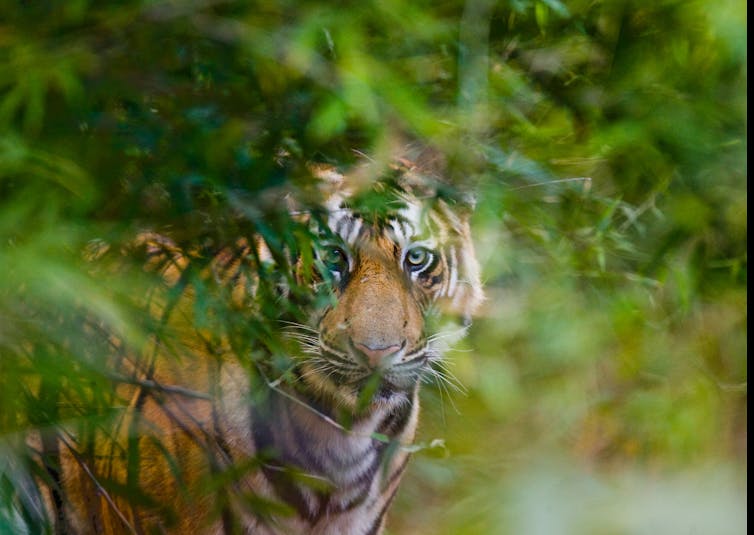
The year 2023 coincided with the 50th anniversary of India’s groundbreaking Project Tiger, an innovative programme designed to rescue the country’s iconic big cat from the precipice of extinction. In April, as part of these celebrations, prime minister Narendra Modi announced that tiger numbers in India have now surpassed 3,000, representing more than 70% of the wild tigers in the world.
From an initial investment in 1973 of just nine dedicated tiger reserves, India now protects 54 such areas. It adds up to an area in excess of 75,000 sq kilometres, or about 2% of the country.
Now, new research in the journal Nature Ecology and Evolution has identified a link between tiger conservation and the fight against climate change. Tigers are very adaptable and the exact same subspecies, the Bengal tiger, can be found scattered across India in jungles, mangroves and so-called “dry forests”. These habitats might seem very different, but the common link is of course lots of trees.
According to the authors of the new study, the strict protection provided within India’s network of tiger reserves has avoided huge amounts of deforestation. And by preserving forests that would have otherwise been chopped down, between 2007 and 2020, tiger protection may have contributed to over 1 million tonnes of avoided carbon emissions.
A million tonnes of carbon might sound like a lot, though it won’t put a huge dent in climate change. India alone emits about 2.7 billion tonnes each year (albeit very little per capita). But that isn’t the point.

In a monetary sense, that avoided deforestation and saved carbon can be equated to US$6.24 million (£5.06 million) in direct carbon offsets and, if wider “ecosystem services” such as watershed management and the provision of fuel and firewood are considered, this figure could rise to as much as US$92 million (£75m). The authors of the new research suggest that this could be a gamechanger for tiger protection, as it could be funded through carbon offset schemes.
There are critics who view India expanding its tiger reserves as an economic extravagance, one that brings the animals into conflict with humans and criminalises local communities (some of whom have been moved out of reserves) for living as they have always done. But in a neoliberal world where everything has a price tag, the future of vulnerable wildlife often depends on its ability to justify its own survival. And if carbon storage can be added to the list of reasons to protect tiger habitat, this in turn may provide fresh impetus for conservation.
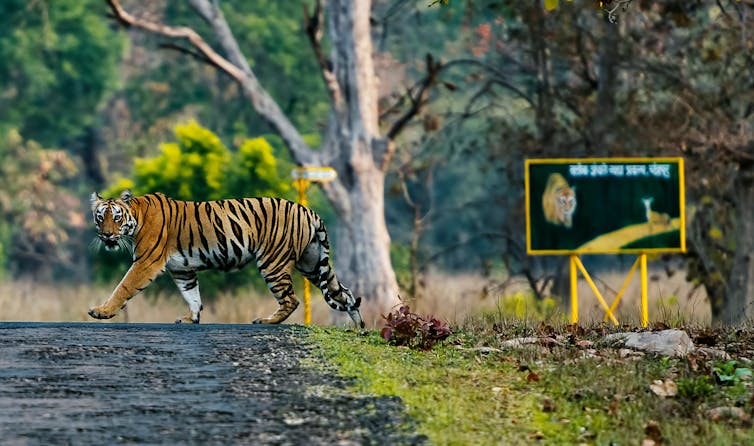
Still Lots Of Habitat Left
Even after centuries of deforestation and an expansion of farmland to feed a billion people, there still seems to be land available. In a recent interview in The Hindu newspaper the prominent tiger biologist Ullas Karanth made it clear that India has the potential, on paper at least, to quadruple its wild tiger numbers over the longer term. According to Karanth, there is still an estimated 380,000 sq kilometres of potential habitat available, just 20% of which is currently under strict protection and containing tigers.

The loss of their forests is still the main reason why tigers are threatened. But this meant there are habitats available that have been emptied of tigers by hunting, and which cannot be colonised by new populations since there are no safe “wildlife corridors” connecting one patch of forest to another.
If these vacant forests were given their proper value and managed with both (reintroduced) big cats and the climate in mind, India could further cement its position as the world leader in tiger conservation. Eventually it could start exporting surplus tigers to repopulate sites in neighbouring countries where Bengal tigers have declined (the many tigers in captivity, especially in the US, are too used to humans to be released into the wild).
This is a win-win situation. It would also help India to re-establish its green credentials during an era in which the country’s emphasis on development and business has conflicted with parallel efforts to protect its natural environment.

Don’t have time to read about climate change as much as you’d like?
Get a weekly roundup in your inbox instead. Every Wednesday, The Conversation’s environment editor writes Imagine, a short email that goes a little deeper into just one climate issue. Join the 10,000+ readers who’ve subscribed so far.![]()
Simon Evans, Principal Lecturer in Ecotourism, Anglia Ruskin University
This article is republished from The Conversation under a Creative Commons license. Read the original article.
Farmers face a soaring risk of flash droughts in every major food-growing region in coming decades, new research shows
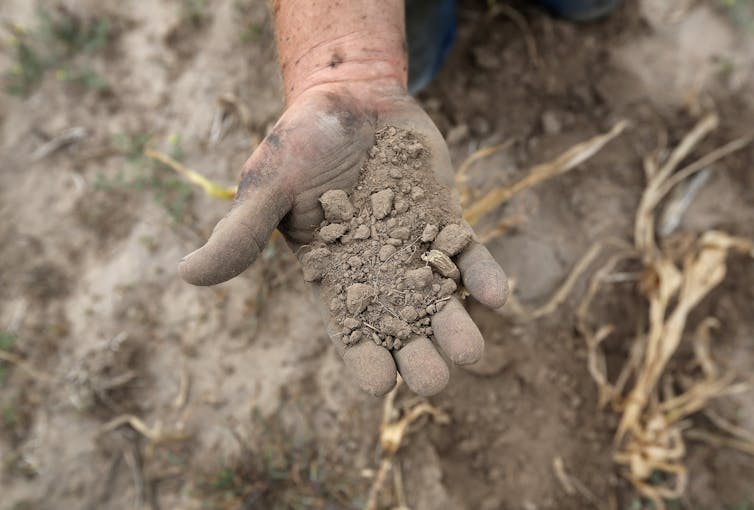
Flash droughts develop fast, and when they hit at the wrong time, they can devastate a region’s agriculture.
They’re also becoming increasingly common as the planet warms.
In a new study published May 25, 2023, we found that the risk of flash droughts, which can develop in the span of a few weeks, is on pace to rise in every major agriculture region around the world in the coming decades.
In North America and Europe, cropland that had a 32% annual chance of a flash drought a few years ago could have as much as a 53% annual chance of a flash drought by the final decades of this century. The result would put food production, energy and water supplies under increasing pressure. The cost of damage will also rise. A flash drought in the Dakotas and Montana in 2017 caused US$2.6 billion in agricultural damage in the U.S. alone.

How Flash Droughts Develop
All droughts begin when precipitation stops. What’s interesting about flash droughts is how fast they reinforce themselves, with some help from the warming climate.
When the weather is hot and dry, soil loses moisture rapidly. Dry air extracts moisture from the land, and rising temperatures can increase this “evaporative demand.” The lack of rain during a flash drought can further contribute to the feedback processes.
Under these conditions, crops and vegetation begin to die much more quickly than they do during typical long-term droughts.
Global Warming And Flash Droughts
In our new study, we used climate models and data from the past 170 years to gauge the drought risks ahead under three scenarios for how quickly the world takes action to slow global warming.
If greenhouse gas emissions from vehicles, power plants and other human sources continue at a high rate, we found that cropland in much of North America and Europe would have a 49% and 53% annual chance of flash droughts, respectively, by the final decades of this century. Globally, the largest projected increases would be in Europe and the Amazon.
Slowing emissions can reduce the risk significantly, but we found flash droughts would still increase by about 6% worldwide under a low-emissions scenario.
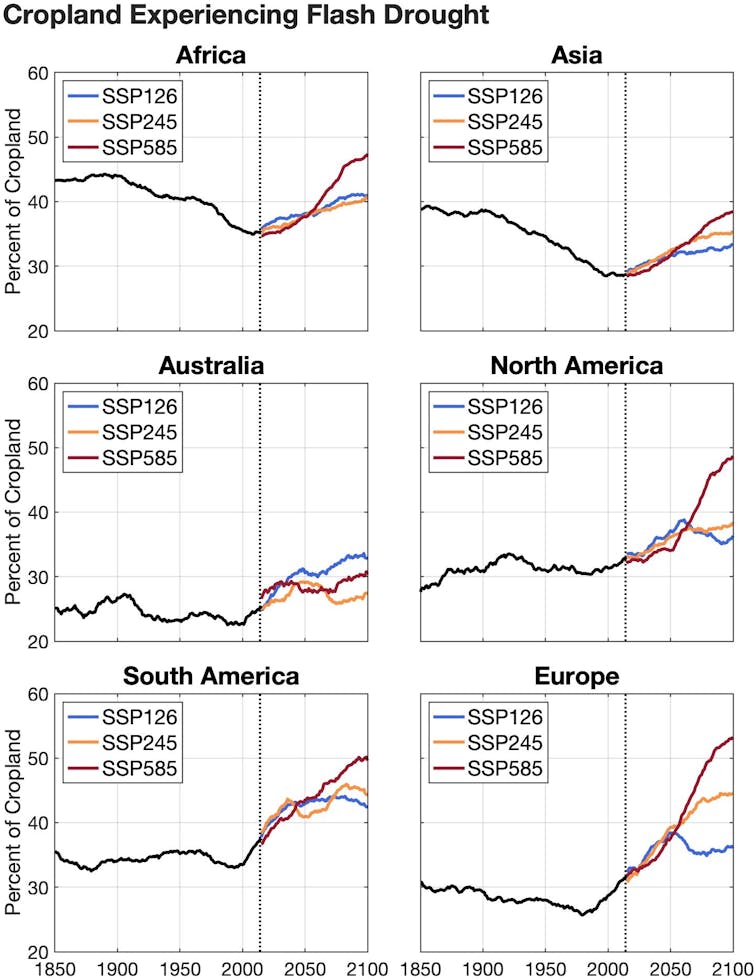
Timing Is Everything For Agriculture
We’ve lived through a number of flash drought events, and they’re not pleasant. People suffer. Farmers lose crops. Ranchers may have to sell off cattle. In 2022, a flash drought slowed barge traffic on the Mississippi River, which carries more than 90% of U.S. agriculture exports.
If a flash drought occurs at a critical point in the growing season, it could devastate an entire crop.
Corn, for example, is most vulnerable during its flowering phase, called silking. That typically happens in the heat of summer. If a flash drought occurs then, it’s likely to have extreme consequences. However, a flash drought closer to harvest can actually help farmers, as they can get their equipment into the fields more easily.
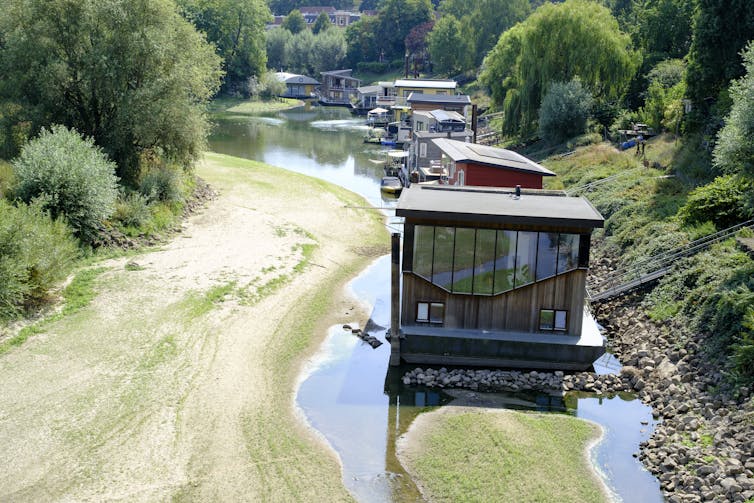
In the southern Great Plains, winter wheat is at its highest risk during seeding, in September to October the year before the crop’s spring harvest. When we looked at flash droughts in that region during that fall seeding period, we found greatly reduced yields the following year.
Looking globally, paddy rice, a staple for more than half the global population, is at risk in northeast China and other parts of Asia. Other crops are at risk in Europe.
Ranches can also be hit hard by flash droughts. During the huge flash drought in 2012 in the central U.S., cattle ran out of forage and water became scarcer. If rain doesn’t fall during the growing season for natural grasses, cattle don’t have food, and ranchers may have little choice but to sell off part of their herds. Again, timing is everything.
It’s not just agriculture. Energy and water supplies can be at risk, too. Europe’s intense summer drought in 2022 started as a flash drought that became a larger event as a heat wave settled in. Water levels fell so low in some rivers that power plants shut down because they couldn’t get water for cooling, compounding the region’s problems. Events like those are a window into what countries are already facing and could see more of in the future.
Not every flash drought will be as severe as what the U.S. and Europe saw in 2012 and 2022, but we’re concerned about what may be ahead.
Can Agriculture Adapt?
One way to help agriculture adapt to the rising risk is to improve forecasts for rainfall and temperature, which can help farmers as they make crucial decisions, such as whether they’ll plant or not.
When we talk with farmers and ranchers, they want to know what the weather will look like over the next one to six months. Meteorology is pretty adept at short-term forecasts that look out a couple of weeks, and at longer-term climate forecasts using computer models. But flash droughts evolve in a midrange window of time that is difficult to forecast.
We’re tackling the challenge of monitoring and improving the lead time and accuracy of forecasts for flash droughts, as are other scientists. For example, the United States Drought Monitor has developed an experimental short-term map that can display developing flash droughts. As scientists learn more about the conditions that cause flash droughts and about their frequency and intensity, forecasts and monitoring tools will improve.
Increasing awareness can also help. If short-term forecasts show that an area is not likely to get its usual precipitation, that should immediately set off alarm bells. If forecasters are also seeing the potential for increased temperatures, that heightens the risk for a flash drought’s developing.
Nothing is getting easier for farmers and ranchers as global temperatures rise. Understanding the risk from flash droughts will help them, and anyone concerned with water resources, manage yet another challenge of the future.![]()
Jeff Basara, Associate Professor of Meteorology, University of Oklahoma and Jordan Christian, Postdoctoral Researcher in Meteorology, University of Oklahoma
This article is republished from The Conversation under a Creative Commons license. Read the original article.
The real cost of your chocolate habit: new research reveals the bittersweet truth of cocoa farming in Africa’s forests

Chocolate sales have boomed in recent months. As the cost-of-living crisis bites, consumers are increasingly reaching for chocolate as a simple and affordable pleasure.
The most important ingredient in chocolate is cocoa beans, which come from plants grown in the tropics. About 70% of the world’s cocoa comes from West Africa. The countries of Côte d’Ivoire (Ivory Coast) and Ghana are two of the biggest producers.
Meeting the world’s insatiable appetite for chocolate has wrought a huge environmental cost, as the incredibly rich and diverse rainforests of West Africa are razed to make way for cocoa farms.
Research by my colleagues and me, released today, sheds new light on the problem. By generating a new high-resolution map of cocoa growing areas in Ghana and Côte d’Ivoire, we found the area under cocoa production is truly enormous – and may be associated with up to 37% of forest loss in protected areas.
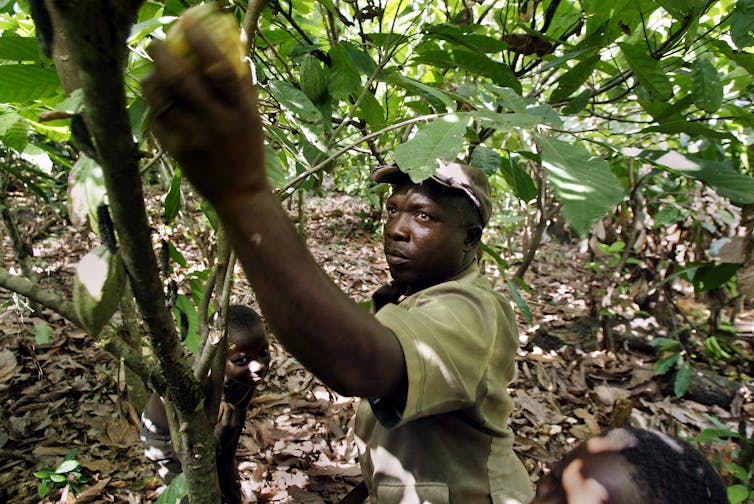
The Price Of Cocoa Farming
The Upper Guinean forests of West Africa have been classified as a “global biodiversity hotspot”, due to their exceptional concentrations of plant and animal species found nowhere else on Earth. But much of this forest has now been destroyed.
Since 1950, Côte d’Ivoire has lost up to 90% of its forest cover and Ghana has lost 65%. Cocoa has been a primary driver of this deforestation, together with other crops, mining and logging.
But the exact contribution of cocoa plantations to the problem is not well understood. This is due in part to a lack of an accurate, high-resolution map of cocoa-growing areas.
Without a map, we don’t know where the chocolate we consume comes from. In particular, we don’t know whether the cocoa was grown in formerly forested areas, or even illegally in protected areas.
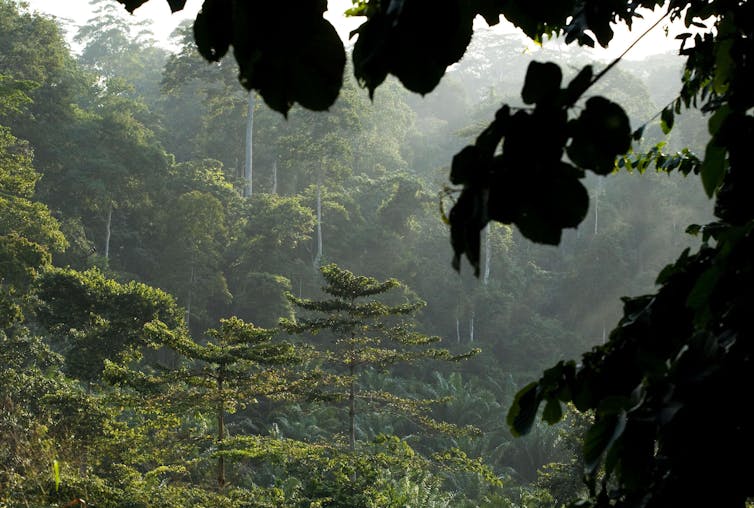
What We Did
We set out to determine the location and extent of cocoa plantations by using artificial intelligence (AI).
We used a type of AI known as a “neural network”, which allows computers to recognise and predict patterns in data. When a neural network is trained on satellite images showing different land uses, it can apply this “understanding” to identify the same land uses in satellite images of other geographic areas.
In our study, we trained the neural network to recognise cocoa plantations across Côte d’Ivoire and Ghana. We did this using satellite images, together with the known locations of more than 100,000 cocoa farms.
We then checked the accuracy of the information provided by the neural network, by engaging field teams to confirm the results at 2,000 random locations on the ground.
This combination of advanced technology and hard fieldwork allowed us to create the first high-resolution map of cocoa production across West Africa. And what the map tells us is worrying.
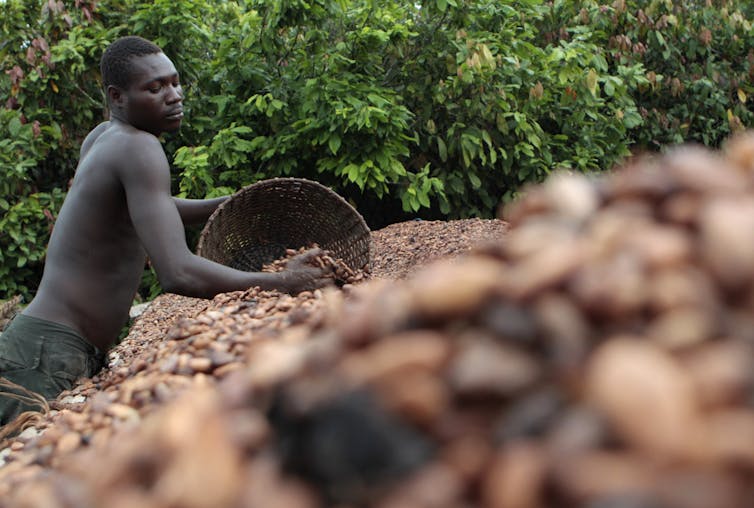
What We Found
We found that the land area devoted to cocoa is enormous, comprising more than 7 million hectares of plantations across both countries. The result is far greater than official figures – up to 40% higher in Ghana’s case.
What’s more, much of the cocoa plantation area exists in vast areas of what was once native forest. And more than 1.5 million hectares of land under cocoa production is located in protected areas.
Deforestation in protected areas is a major issue globally. Given where we found cocoa growing, and where forest loss has been observed, we estimate more than 37% of deforestation in protected areas can be linked to cocoa production in Côte d’Ivoire. For Ghana, the figure is 13%.
How Do We Fix This?
Our map demonstrates the massive role that cocoa may be playing in forest destruction in West Africa, including in protected areas.
This is a complex problem, with no easy fix. Cocoa is grown by an estimated two million mostly small-scale farmers, who typically live below the poverty line on less than US$1 a day. Expanding their cocoa farms into forest is one way farmers and their families can maintain or improve their livelihoods.
To fix this problem, we must help farmers manage existing farms in a more productive and sustainable way. Stronger law enforcement is also needed, to safeguard protected areas. Both will require action from governments and companies.
More money from chocolate sales should end up with the farmer. And consumers may also have to pay more for their chocolate.
Only determined changes on all these fronts will preserve the remaining forests of Côte d’Ivoire and Ghana.![]()
Wilma Hart, Postdoctoral Research Fellow, School of Biological Sciences, The University of Queensland
This article is republished from The Conversation under a Creative Commons license. Read the original article.
Coffee, brought to you by bees: a case study in how restoring habitat is a win-win for forests and farmers
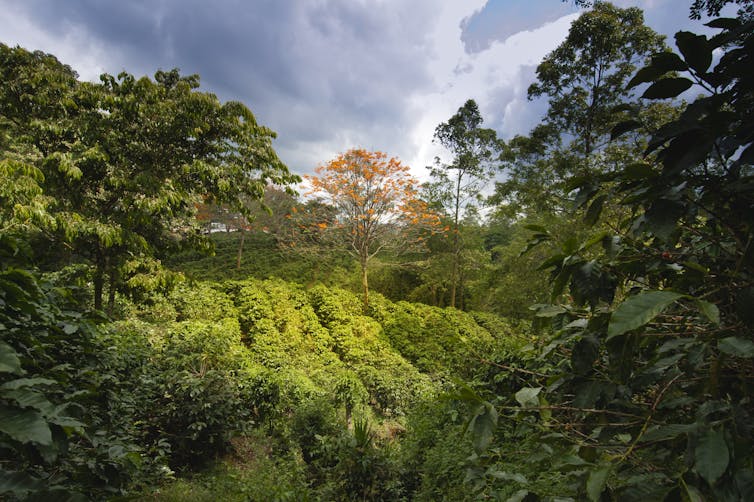
Bees are crucial for producing many of our beloved foods and beverages. Coffee is one crop that benefits from bee pollination.
Unfortunately, pollinator numbers are falling worldwide. Many are facing extinction. This decline is due in part to ever-expanding farmland covered by a single kind of crop plant – agricultural monocultures.
Restoring pollinators’ habitat is essential, both to stop their decline and to maintain food production. Calls for large-scale restoration, such as the UN Decade of Restoration, are ambitious and may compete with other land uses. In addition, restoration often has an upfront cost, while its benefits could take time to obtain.
However, our new research shows that coffee farmers who restore patches of forest across their properties can nearly double their profits with just a 15% increase in natural habitat over five years. The benefits, a result of higher pollinator numbers, continue to increase for both farmers and forest over the long term (40 years). This is the first study that assessed such benefits in the long term and at a large scale.
Finding A Sweet Spot
Planting trees without planning that takes all factors into account may lead to poor conservation or economic outcomes. For instance, tree planting in unsuitable arid areas of China ultimately led to further environmental degradation, although the aim was to combat desertification.
For our study, we set up two clear objectives:
- to maximise coffee profitability
- to maximise restoration of forest that pollinators could use.
We used Costa Rica as a case study because of the wealth of information on pollination services for coffee in this region. One study found forest-based pollinators increased coffee yields by 20% within 1 kilometre of forest. So the presence of a healthy population of pollinators has a big impact on farmers’ revenue.

A common practice to increase profits is to expand cropland by clearing forest. Therefore, restoring coffee lands to forest may involve trade-offs. To account for this, we considered two different planning contexts:
- only restoration and no agricultural expansion
- a mix of restoration and agricultural expansion.
We also compared multiple scenarios to assess the trade-offs between focusing solely on coffee profitability (objective one) versus giving more priority to restoring habitat for bees (objective two), and everything in between. Our mathematical modelling then selected the best locations to restore habitat (or expand agriculture) for each scenario.
There was a sweet spot between both objectives when practising only restoration. We found coffee farms can increase economic benefits by 98% after five years by increasing forest area by 15%. After 40 years, the economic benefits increase by about 109% with a 19% increase in forest area.
We also found that if farmers restore habitat without expanding agriculture, profits are steadier. When farmers restore and expand at the same time, this adds an element of volatility.
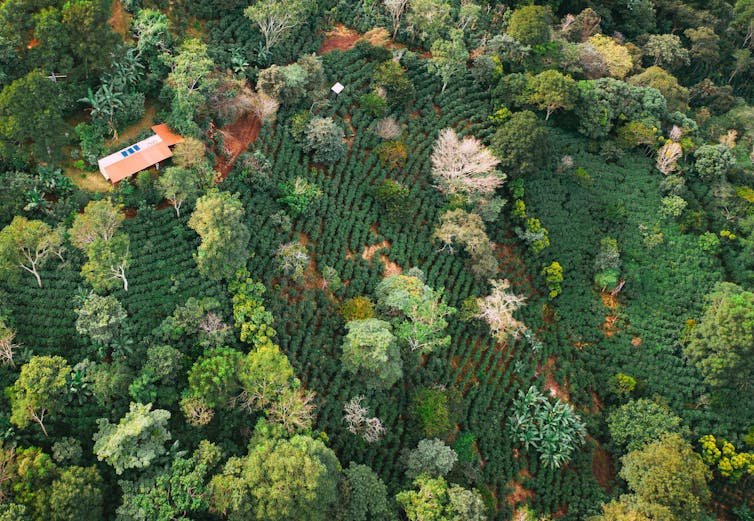
Small Or Big Patches?
We found restoring many small patches throughout the farmed area maximised pollination services. Bees can only travel fairly short distances, ranging from 40 metres to 3 kilometres. Dispersed forest patches allowed the bees to reach more coffee plants.
However, while smaller patches are generally suitable for pollinators, other species have different needs. Restoring large areas is important for species that travel longer distances, such as the jaguar (Panthera onca), or for forest specialists that need dense forest to thrive.
However, having only a big patch of restored forest in an area of farmland may isolate species that have a large home range. In contrast, restoring small patches of land can provide important corridors for mammals.
In our study, we found other solutions that restored a mix of big and small patches at the same time. These solutions can still can deliver good economic and restoration outcomes. Having a mix is important because it allows biodiversity conservation and farming to co-exist.
Ideally, farmers who have large patches restored on their land would receive financial compensation. This could make up for the farmers’ upfront and ongoing costs, such as sapling cost and labour to maintain plants throughout some years. At the same time, neighbouring farms will benefit from bees travelling to and pollinating their crops, even if habitat isn’t restored on this land.
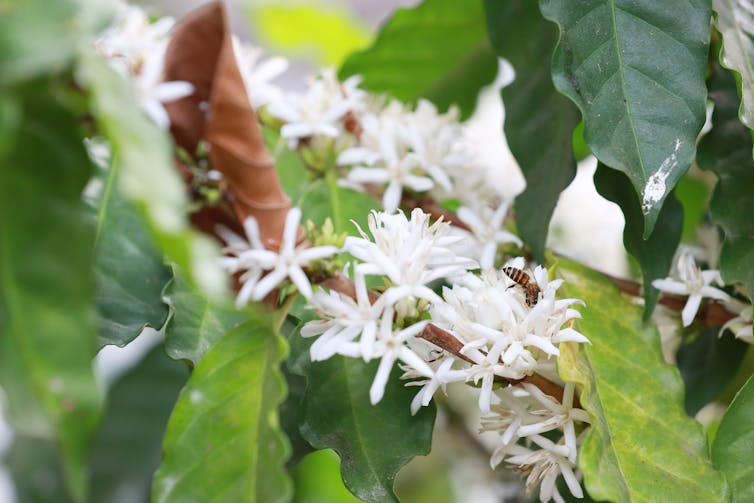
Importantly, these findings support solutions for farmers with different environmental outlooks. Some farmers may be generally supportive of conservation, leading to more proactive restoration actions and no clearing of forest. Other farmers may place a high importance on expanding agricultural production to improve their livelihoods.
Our study takes into account both contexts. Our findings show strategic habitat restoration for pollinators produces win-win outcomes for farming and the environment in both cases.![]()
Sofía López-Cubillos, Postdoctoral research fellow, The University of Melbourne and Rebecca K. Runting, Senior Lecturer in Spatial Sciences and ARC DECRA Fellow, The University of Melbourne
This article is republished from The Conversation under a Creative Commons license. Read the original article.
Greedy gulls decide what to eat by watching people – new research
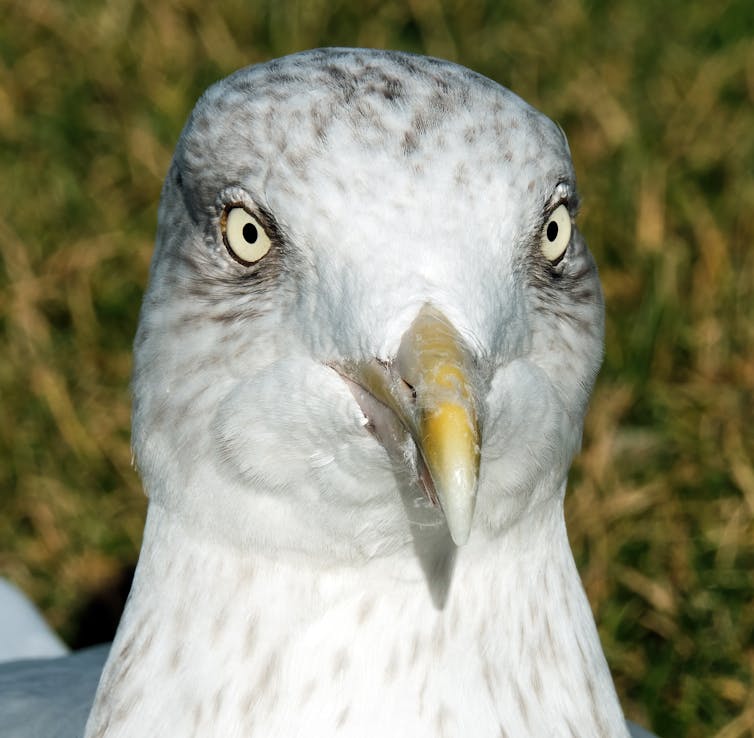
Ask anyone living in a coastal area of the UK and they’ll confirm that seagulls can be a nuisance. These birds’ pilfering of food knows no bounds, and no one is safe from one of their thieving attacks.
For many people, this behaviour is the result of the gulls’ inherent aggression. But in reality, gulls such as the herring gull are more intelligent than we give them credit for, particularly in terms of their social skills. These birds are able to pay attention to the behaviour of others and use the information they gather to inform their own foraging choices.
Herring gulls thrive in modern urban areas. Urban gull colonies have taken off since making European cities their home in the mid-20th century, despite the general decline in gulls’ overall population. As a species, they have also shown great flexibility in their diet, nesting and reproductive behaviour.
As a scientist interested in animal cognition, I’m fascinated by the intelligent behaviour that allows gulls to successfully forage human foods. Research has already shown that urban herring gulls adapt their foraging behaviour to human activity patterns, increase their attention towards a person in possession of food and that they prefer food that has been touched by a person compared to food that has not.
To build on this, my masters students Franziska Feist and Kiera Smith and I set out to discover if the birds could not only track objects handled by humans, but if they could also compare objects in their environment with those being manipulated by a person. The ability to compare objects and identify whether they are identical implies a higher cognitive ability than object tracking alone.
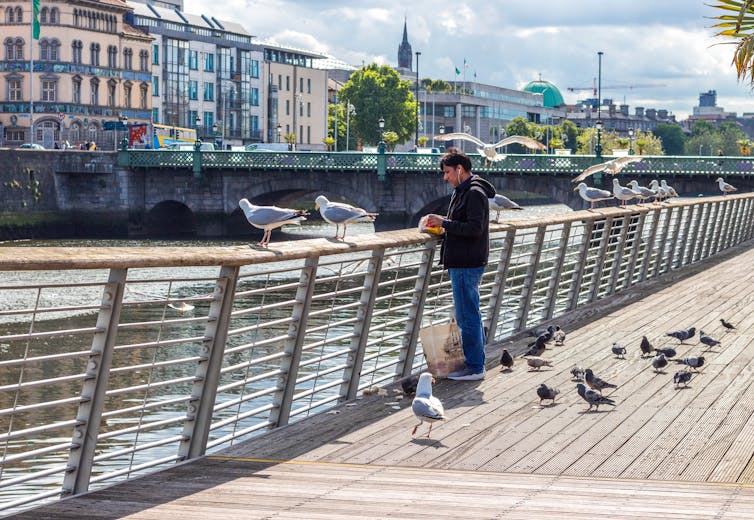
Quick Learners
We placed two Walkers brand crisp packets of different colours on the ground a few metres in front of single or small groups of herring gulls on Brighton beach. We sat on the sand and held a third crisp packet that matched the colour of either one of the packets on the ground. We then recorded the gulls’ response to see if, as hypothesised, they would choose the crisp packet that matched the colour of the one in our hand.
Of the gulls that pecked at the crisp packets, nearly all (95%) did so to the crisp packet that colour-matched the one we were holding. This suggests that these gulls possess the ability to identify and compare objects within their surroundings. In addition, the gulls’ seemed to observe the foraging choices of others – specifically people in this case – and use the information they obtained to decide what to eat.

The number of approaches towards us did not differ significantly between adults and young birds (meaning, any with brown plumage). However, the majority that made an attempt at stealing one of the crisp packets were adults. Around 86% of the recorded pecks came from adults, despite these birds making up just 46% of our entire sample.
This suggests that stealing food requires a certain level of boldness and skill that most young birds lack. Another plausible explanation is that the young birds may have been deterred by the competition with adult birds, which they are likely to lose.
Wide Behavioural Repertoire
Our findings are interesting because herring gulls have not evolved with humans. In fact, their urbanisation only began relatively recently – around 80 years ago.
That means this behaviour cannot have come from an innate ability resulting from co-evolution or an extended period of living alongside humans. Rather, it must be the result of a broader, more general behavioural repertoire.
From a scientific perspective, this is fascinating. It seems that herring gulls are an intelligent and versatile predator that has successfully adapted to urban environments due to their observational skills and behavioural flexibility.
Yet, for many people, this may have some rather negative implications. Coastal residents and visitors frequently experience the impressive yet annoying ability of these birds to observe, target and steal food from picnics, bins and people directly.
We suggest that these problems likely stem from more than people feeding urban gulls directly. It seems that simply watching us eat something will make that specific food item, and any identical items in the vicinity, more attractive to these birds. It is this cognitive toolkit that will make tension between humans and urban herring gulls difficult to manage.
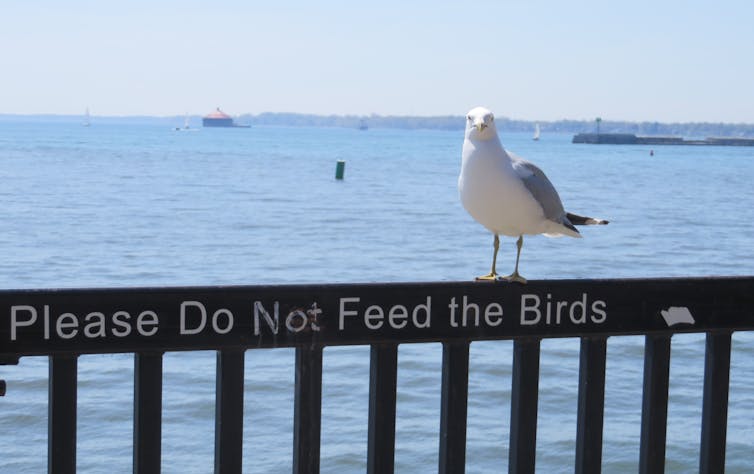
Our work does, however, agree with existing studies that suggest only around a quarter of the UK urban gull population will actually attempt to steal food from a person. Less than a fifth of the gulls we sampled approached the crisp packets when when we were sitting nearby.
Regardless, any attempt to minimise conflict should extend beyond deterring people from feeding gulls and should take into account these birds’ exceptional observational skills. What is clear, though, is that we can’t rely solely on signs insisting that people “do not feed the birds”.![]()
Paul Graham, Professor of Neuroethology, University of Sussex
This article is republished from The Conversation under a Creative Commons license. Read the original article.
Good vibrations: how listening to the sounds of soil helps us monitor and restore forest health
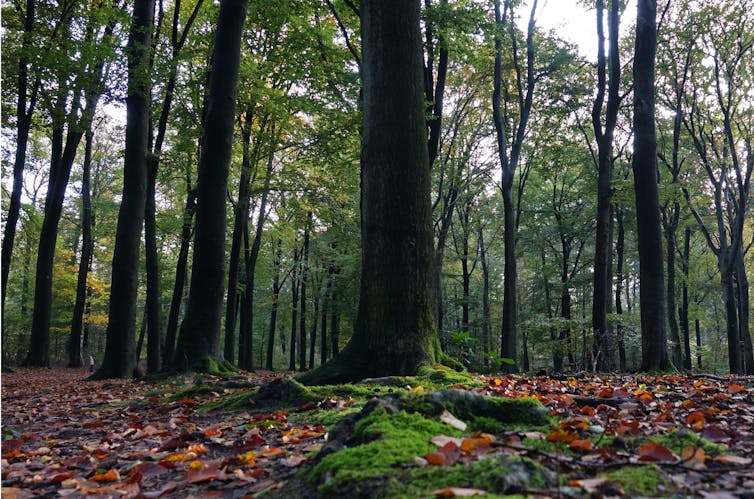
Nurturing a forest ecosystem back to life after it’s been logged is not always easy.
It can take a lot of hard work and careful monitoring to ensure biodiversity thrives again. But monitoring biodiversity can be costly, intrusive and resource-intensive. That’s where ecological acoustic survey methods, or “ecoacoustics”, come into play.
Indeed, the planet sings. Think of birds calling, bats echolocating, tree leaves fluttering in the breeze, frogs croaking and bush crickets stridulating. We live in a euphonious theatre of life.
Even the creatures in the soil beneath our feet emit unique vibrations as they navigate through the earth to commute, hunt, feed and mate.
Eavesdropping on this subterranean cacophony using special microphones can provide researchers with important insights into ecosystem health. Our new study published in Restoration Ecology shows ecoacoustics can provide an effective way of monitoring biodiversity in soil and in the forest it supports.

What Did The Study Do?
Acoustic technology is widely used to survey bats, birds and other creatures. However, scientists who restore degraded ecosystems have yet to make full use of soil ecoacoustics. This is despite its demonstrable effectiveness at detecting small animal vibrations.
Our study applied ecoacoustic tools to measure biodiversity above and below ground in a UK forest. We hypothesised that the soils of forests restored to a healthier state would have a higher diversity of sounds than the soils of recently deforested plots. This is because we assumed more creatures would live in the restored and “healthier” soils, producing a greater variety of sounds that we would detect.
Think of two symphony orchestras. Half of one orchestra’s musicians have fallen ill and can’t play at the concert. This is analogous to a degraded ecosystem. In contrast, the other orchestra has all its members and will therefore be louder, with more complex and diverse sounds.
During the spring and summer of 2022, we collected 378 samples from three recently deforested and three restored forest plots. We created a recording system with special “contact” microphones that we inserted into the ground.
We used a chamber with sound-dampening foam inside to record soil creatures such as earthworms and beetles. This chamber allowed us to block out unwanted signals such as mechanical noise, wind and human activity. The chamber housed the microphone and a 5 litre sample of the soil at each plot.
Our results were exciting. The diversity of sounds was much higher in the soil from the restored plots. This finding confirmed our suspicions that healthier soil would be more tuneful.
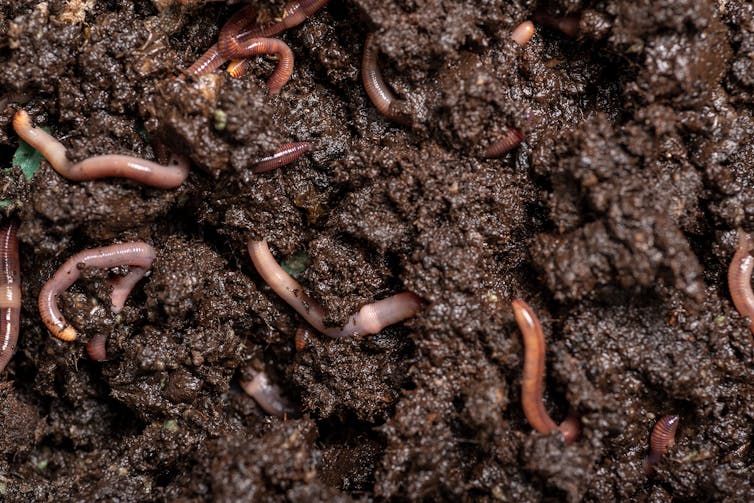
Why Is Monitoring Soil Health Important?
Our preliminary findings suggest ecoacoustics can monitor life underground. But why is monitoring soil biodiversity so important? Soil health is the foundation of our food systems and supports all other life on land. It should be a global priority.
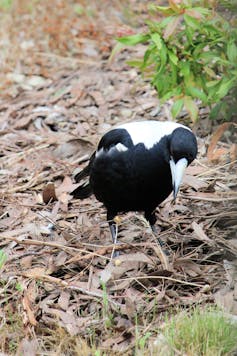
The “unseen” and “unheard” organisms living in the soil maintain its health. Below-ground organisms, such as earthworms and beetles, play a crucial role in nutrient cycling and soil health. Without them, forests can’t thrive.
By using ecoacoustics to monitor below-ground biodiversity, ecologists can better assess the effectiveness of restoration efforts. This will allow them to make more informed decisions about the best ways to protect nature.
Using ecoacoustics in restoration efforts could also have important implications for climate change mitigation. Forests are crucial carbon sinks. They absorb CO₂ from the atmosphere and store it in their woody biomass and soils.
In contrast, degraded or deforested areas are significant sources of carbon emissions. Restoring these areas and monitoring subterranean life can help reduce carbon emissions and improve our ability to reduce the effects of a changing climate.
It’s Still An Emerging Science
The use of ecoacoustics in restoration efforts is still relatively new, but it’s an important step towards a more holistic and effective approach to ecosystem recovery. By embracing new technologies and approaches, we can work towards a healthier and more sustainable planet.
Of course, there are challenges we still have to overcome. For instance, accurately identifying the sources of acoustic signals in a complex soundscape can be challenging. However, as technologies and methods continue to improve, the potential benefits of ecoacoustics are immense.

By monitoring life underground in a non-intrusive and efficient way, we can better understand the effectiveness of our restoration efforts. This will help us make more informed decisions about how to protect nature.
We’ve only just begun to scratch the surface when it comes to the possibilities of ecoacoustics in restoration efforts. It’s an exciting time for those working in this field, as we discover new ways to use sound to heal our planet.![]()
Jake M Robinson, Ecologist and Researcher, Flinders University; Carlos Abrahams, Senior Lecturer in Environmental Biology - Director of Bioacoustics, Nottingham Trent University, and Martin Breed, Associate Professor in Biology, Flinders University
This article is republished from The Conversation under a Creative Commons license. Read the original article.
The world’s worst animal disease is killing frogs worldwide. A testing breakthrough could help save them
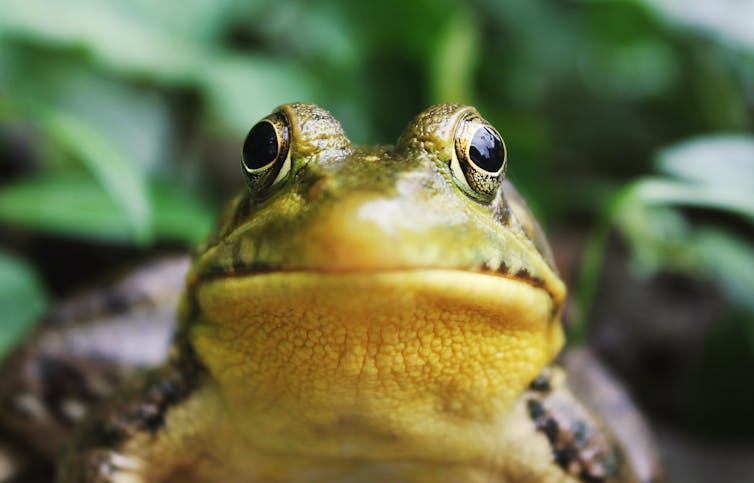
For the past 40 years, a devastating fungal disease has been ravaging frog populations around the world, wiping out 90 species. Unlike the global COVID-19 pandemic, you may not even be aware of this “panzootic” – a pandemic in the animal world. Yet it’s the world’s worst wildlife disease.
Recently published in the journal Transboundary and Emerging Diseases, a multinational study has now developed a method to detect all known strains of this disease, caused by the amphibian chytrid fungus. This breakthrough will advance our ability to detect and research this disease, working towards a widely available cure.
An Extreme Mortality Rate
Chytridiomycosis, or “chytrid” for short, has driven severe declines in over 500 frog species and caused 90 extinctions, including seven in Australia.
The extreme rate of mortality, and the high number of species affected, makes chytrid unequivocally the deadliest animal disease known to date.
Chytrid infects frogs by reproducing in their skin. The single-celled fungus enters a skin cell, multiplies, then breaks back out onto the surface of the animal. This damage to the skin affects the frog’s ability to balance water and salt levels, and eventually leads to death if infection levels are high enough.
Chytrid originated in Asia. It’s believed that global travel and trade in amphibians led to the disease being unwittingly spread to other continents.
Frogs in regions such as Australia and the Americas did not have the evolutionary history with chytrid that could grant them resistance. So, when they were exposed to this new pathogen, the results were devastating.
Many species’ immune systems were simply not equipped to defend against the disease, and mass mortalities ensued. In the 1980s, amphibian biologists began to notice sharp population declines, and in 1998, the chytrid fungal pathogen was finally recognised as the culprit.
Since then, much research has focused on infection trends and how to protect vulnerable frog species. To track such trends, we need a reliable way to detect chytrid in the first place.

An Imperfect Swab
To find out if a frog is carrying chytrid, researchers swab the animal and run the same type of test you might recognise from COVID-19 testing – a qPCR. It stands for quantitative polymerase chain reaction, and simply put, is a way to measure the volume of DNA from a species of interest. The test was developed at CSIRO in 2004; unlike a COVID test, however, scientists swab the frog’s skin, not the nose.
Because this test was developed from chytrid in Australia, decades after the pathogen’s arrival in the country, a divergence between the Australian and Asian strains meant this test could not detect chytrid in its region of origin. This has been a major limitation to the past two decades of chytrid research.
Over the past several years, a team led by researchers at the Council of Scientific and Industrial Research – Centre for Cellular and Molecular Biology in India has been working on a new qPCR test that can detect strains of chytrid from Asia. In collaboration with researchers in Australia and Panama, we have now verified the new test also reliably detects chytrid in these countries.
Furthermore, the test can detect another closely related species of chytrid that infects salamanders. The test is also more sensitive, meaning it can detect very low infection levels – thereby broadening the scope of species we can study.
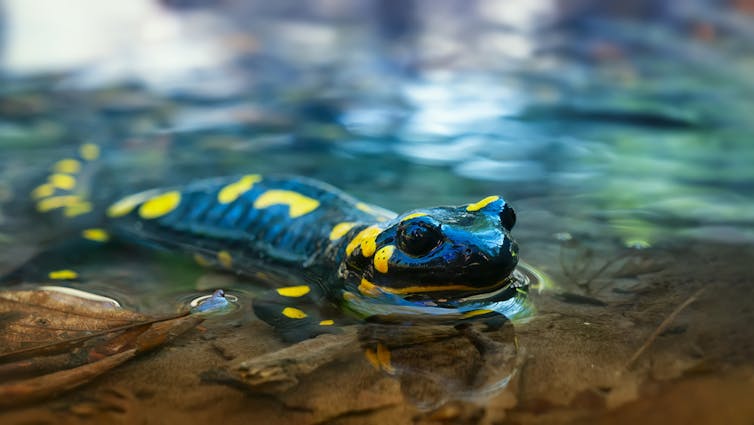
Natural Immunity?
The most puzzling thing about chytrid is that some amphibian species – even those that have not evolved with the pathogen – don’t become sick when they carry the fungus. These species have some form of natural immune resistance.
However, frog immunity is extremely complex. Immunity might come from anti-microbial chemicals within the skin, symbiotic bacteria on the skin, white blood cells and antibodies in the blood, or combinations of these mechanisms.
So far, no clear trend has been found between resistance and immune function. To make matters more complicated, there is also evidence chytrid can suppress a host’s immune response.
Because there haven’t been any observed chytrid declines in Asia, and because detecting chytrid in Asia has been difficult, Asia is lagging behind the rest of the world in chytrid research. Yet the new qPCR test detected high levels of chytrid in a range of amphibian species across India.
Having the ability to study chytrid in its region of origin may help us understand how Asian species evolved resistance – research that may hold a key to help researchers develop a cure for those species in Australia, North and South America, and Europe that are now on the brink.
While the new qPCR test was successful at detecting chytrid in samples from India, Australia, and Panama, we will need to validate and promote the method so it becomes the new gold standard for chytrid testing. Future work will involve using the test to analyse samples from Europe, and samples from Brazil where genetic studies show that chytrid has diverged.
In time, this new way to detect chytrid could be the first step in helping to save frogs – the hidden gems of our forests and wetlands.![]()
Kaya Klop-Toker, Conservation Biology Researcher, University of Newcastle and Karthikeyan Vasudevan, Chief Scientist, CSIR - Centre for Cellular & Molecular Biology
This article is republished from The Conversation under a Creative Commons license. Read the original article.
‘Painting with fire’: how northern Australia developed one of the world’s best bushfire management programs

Right now, hundreds of bushfires are burning across northern Australia. But this is not a wildfire catastrophe – in fact, these burns are making things safer in one of the most fire-prone landscapes in the world.
From April to June each year, fire managers – such as Traditional Owners, park rangers and pastoralists – aim to create small, “cool” fires with care and precision to reduce fuel loads before conditions get severe later in the dry season. This work, “painting” landscapes with fire, is constantly informed by satellite data.
The combination of space technology with Indigenous knowledge and the know-how of pastoralists and park rangers has been everyday practice across northern Australia for the past 20 years. Not only does this work produce some of the best fire management outcomes in the world, it also demonstrates how cutting-edge technology can inform local and traditional knowledge for environmental management.
The Satellite View
In the early 2000s, researchers and land managers brought together by the Cooperative Research Centre for the Sustainable Development of Tropical Savannahs realised satellite imagery could be of great help for fire management across Australia’s vast tropical savannas.
These landscapes have always been prone to fire. After First Nations people moved away (or were forced) from these areas over the course of the 20th century, savanna fires became more frequent and intense.
Satellite imagery had long been used to understand the extent and severity of fires and other landscape-altering events. But researchers realised it could also be used to manage those fires – if up-to-date imagery could be provided to the public on a daily basis.
The result was regularly updated maps of recently burnt areas distributed via a website launched in 2003, hosted by Charles Darwin University – North Australian Fire Information (NAFI).
Twenty years on, NAFI’s maps of active fires and burnt areas underpin fire management across northern Australia. The maps are used for planning, response, implementation, and reporting.
Carbon Credits And International Attention
NAFI’s fire information also informs the federal government’s calculations for carbon credits related to reduced savanna burning, which many people across Australia’s north are using to generate income. Some of this income is then put back into work to reduce the extent and severity of fires.
NAFI fire data also inform the national Australian Fire Danger Rating System so it can be more effectively applied by bushfire agencies in remote areas.
The same data have provided evidence showing north Australia has had one of the most significant declines in fire across any large landscape globally.
The successes of the NAFI service are drawing international interest as a model for fire information in other fire-susceptible regions around the world.
Painting With Fire
Most Australians have a poor understanding of the history of fire on this continent. Fire has been a key human–ecological force that shaped landscapes over tens of thousands of years.
Over the past 20 years, proactive use of fire for landscape management has been revived in northern Australia.
The scale of the work undertaken by Northern fire managers, particularly at this time of year when fuel load reduction burns are underway, is easy to see on NAFI.
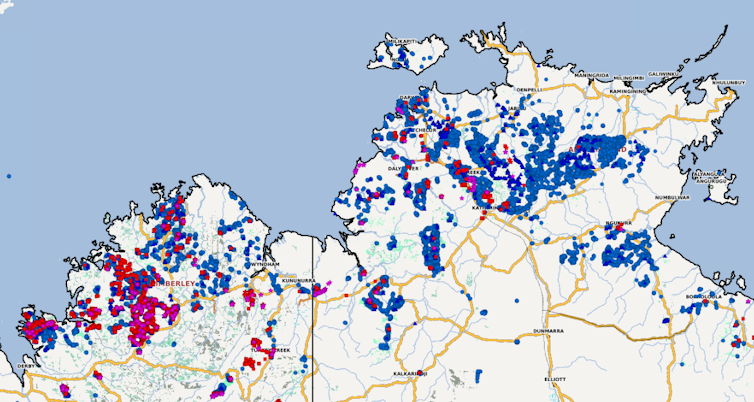
Landscape-scale fire management, as applied in Northern Australia, is a sophisticated endeavour where science, technology and engineering support local knowledge.
Beyond Science And Technology
In a world rapidly being transformed by climate change, the skills required to make our societies sustainable and resilient involve more than just science and technology. Good environmental management will also require diverse, locally based skills and capacity to act.
Good fire management, as a case in point, requires an ability to blend skills and ways of thinking across multiple knowledge systems as well as a huge amount of hard work on the land.
Enabling easy, appropriately curated access to satellite-derived land information – and training to understand it – is critical.
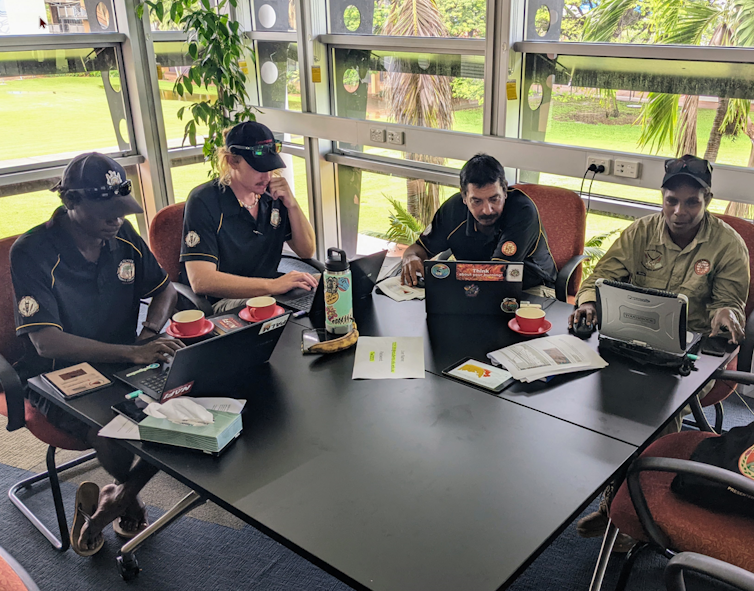
NAFI also develops and delivers training for land managers. Through workshops delivered across regional Australia, from remote Indigenous communities in the Kimberley and the top end to pastoralists in northern Queensland and central Australia, we are building high-tech capacity among those with the vital on-ground knowledge.
The journey of NAFI and fire management in northern Australia over the past 20 years illustrates how innovation is not just about technology, no matter how advanced. Innovation produces results when it is combined with other knowledge and put into the hands of the right people in the right way.![]()
Rohan Fisher, Information Technology for Development Researcher, Charles Darwin University and Peter Jacklyn, NAFI Service Manager and Knowledge and Adoption Coordinator, Charles Darwin University
This article is republished from The Conversation under a Creative Commons license. Read the original article.
How to fool a mouse: ‘chemical camouflage’ can hide crops and cut losses by over 60%
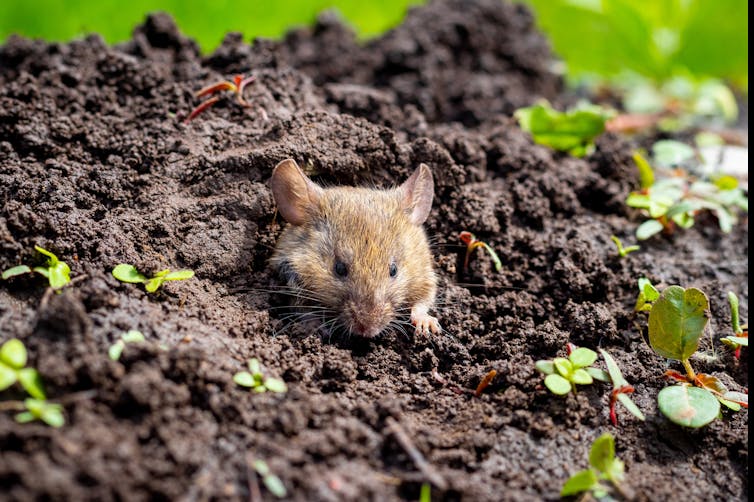
For as long as humans have grown our own food, we have battled pest animals that destroy crops and take food for themselves.
The traditional approach has been to try to kill the pests, typically with poisons. Too often, however, this fails to kill enough pests, harms native animals, and only minimally reduces damage.
We tackled this problem in a different way by asking: how do we stop hungry animals finding our crops in the first place?
In a research paper published today, we show how “chemical camouflage” can prevent house mice finding newly sown wheat seeds. The method reduced mouse damage to wheat crops by more than 60% even during plague conditions, without killing a single mouse.
The Rodent Menace
Rodents are responsible for an estimated 70 million tonnes of grain lost worldwide each year. Even a 5% reduction in these losses could feed more than 280 million people.
In Australia, the 2021 mouse plague cost farmers in New South Wales alone upwards of $1 billion, according to an industry association estimate. A mouse plague occurs somewhere in Australia at least every four years.
Currently, the only management option to reduce mouse numbers is broad-scale baiting. However, baiting is often ineffective and has led to calls for more lethal poisons, which carry major risks for native wildlife.
The relationship between baiting effort and crop yield is not well understood, and mouse numbers typically crash in plague years even without intervention. A better approach is to focus on reducing mouse impacts, rather than mouse numbers.
How To Fool A Mouse
Mouse damage to Australia’s most valuable crop, wheat, occurs mostly in the two-week period between sowing and germination. During this time, mice are attracted to the smell of the wheat germ – the nutritious and fatty part of the seed – beneath the ground, and they learn to dig up seeds with pinpoint accuracy, leading to significant crop losses.
This led to our question: can we hide the seeds so mice can’t find them?
Like many animals, mice primarily use their sense of smell to find food. The world is full of odours, and hungry foragers must prioritise important smells and disregard useless ones.
When a food is too difficult to find, or an odour is not a useful indicator of food, foragers must give up and search for something else to avoid wasting energy.

Because hungry animals can’t afford to waste effort on odours that don’t lead to food, they are vulnerable to olfactory misinformation and chemical camouflage. As with visual camouflage, if the background, in this case smell, appears the same as the item we are trying to hide, the target item cannot be distinguished.
Animals can also learn about the usefulness of information, making them vulnerable to another form of misinformation – odour pre-exposure. By deploying food odours before food is available, foragers initially attracted to the odour repeatedly receive no reward and learn to ignore it.
When the food does become available, foragers don’t follow the odours because they know they’re unrewarding. We recently used this technique to dramatically improve nest survival for threatened shorebirds at risk from by predation by invasive predators in New Zealand.
A Test Under Tough Conditions
Until now, these techniques have been tested on relatively widely dispersed food items with fewer foragers over a larger area. Whether olfactory misinformation could protect a crop with more than 300 mice and 1.6 million seeds per hectare was unclear.
We worked on a 27-hectare wheat paddock in southwest NSW, using 60 plots to test our two olfactory misinformation techniques. We used wheat germ oil to provide the odour background, as it is made from the part of wheat seeds that mice seek out and is a relatively cheap byproduct of the wheat-milling process.
Both techniques involved spraying a fine mist of wheat germ oil solution onto the plots. Each application was equivalent to the smell of around 50 times the number of seeds on the plot.
Our first technique, odour camouflage, began immediately after the crop was planted and was reapplied several times until seedlings appeared. This created a blanket of wheat odour to hide seeds from detection.
Our second technique, odour pre-exposure, had wheat germ oil applied six days before the wheat crop was planted and continued for the week after. We predicted that mice attracted to the odour before seeds were planted would begin to ignore wheat odour after repeatedly finding no seeds.
We also had three control treatments: one sprayed with canola oil to control for an oil effect, one we walked on without spraying to control for seed loss due to trampling, and one that remained totally untouched.
One and two weeks after sowing, we counted mouse damage in the form of diggings where seeds had been extracted by mice. After two weeks, we also estimated the number of seedlings that were lost to mice. The results were staggering.
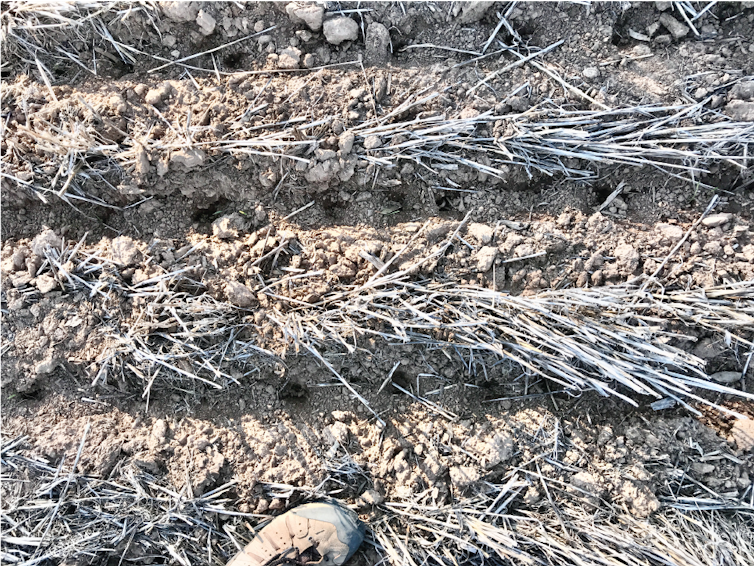
After two weeks, our camouflage and pre-exposure treatments had reduced mouse damage by 63% and 74% respectively, compared to the control. We also estimated that 53% and 72% fewer seedlings, respectively, were lost to mice on these plots.
The difference in the effect of pre-exposure to wheat odour and the effect of camouflage treatments was not statistically significant, and we concluded the camouflage effect is the most likely reason for the reduction in damage.
Working With The Animals
In an increasingly populated world where food security is becoming a priority, we need new ways to tackle pest problems sustainably and safely.
Our methods are simple, safe and highly effective, even during a mouse plague. They carry no risks for native wildlife and involve no killing. Mice don’t go hungry either – they simply eat the foods they ate before the wheat was planted.
We believe simple behavioural interventions like ours, which work with animals’ motivations rather than against them, are the way of the future in wildlife management and conservation.
We believe this new approach has the potential to manage pest impacts without the side effects that come from using lethal pest control.![]()
Finn Cameron Gillies Parker, PhD candidate, University of Sydney; Catherine Price, Discovery Early Career Research Fellow, University of Sydney; Jenna Bytheway, Senior Research Officer in Conservation Biology, University of Sydney, and Peter Banks, Professor of Conservation Biology, School of Life and Environmental Sciences, University of Sydney
This article is republished from The Conversation under a Creative Commons license. Read the original article.
Stick Insects
The Phasmatodea (also known as Phasmida or Phasmatoptera) are an order of insects whose members are variously known as stick insects in Australia.
The group's name is derived from the Ancient Greek φάσμα phasma, meaning an apparition or phantom, referring to their resemblance to vegetation while in fact being animals. Their natural camouflage makes them difficult for predators to detect.
Members of the order are found on all continents except Antarctica, but they are most abundant in the tropics and subtropics. They are herbivorous, with many species living unobtrusively in the tree canopy.
Some species have wings and can fly!
Photos by Selena Griffith, taken in Elanora Heights
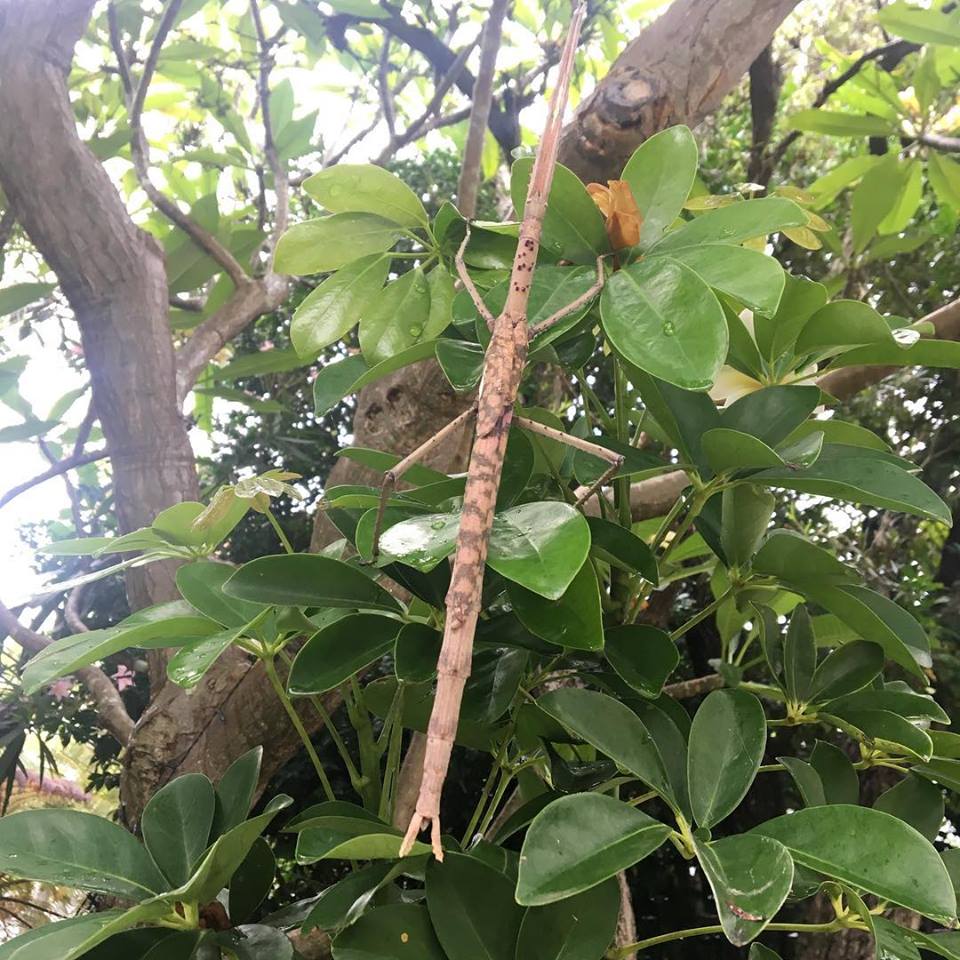
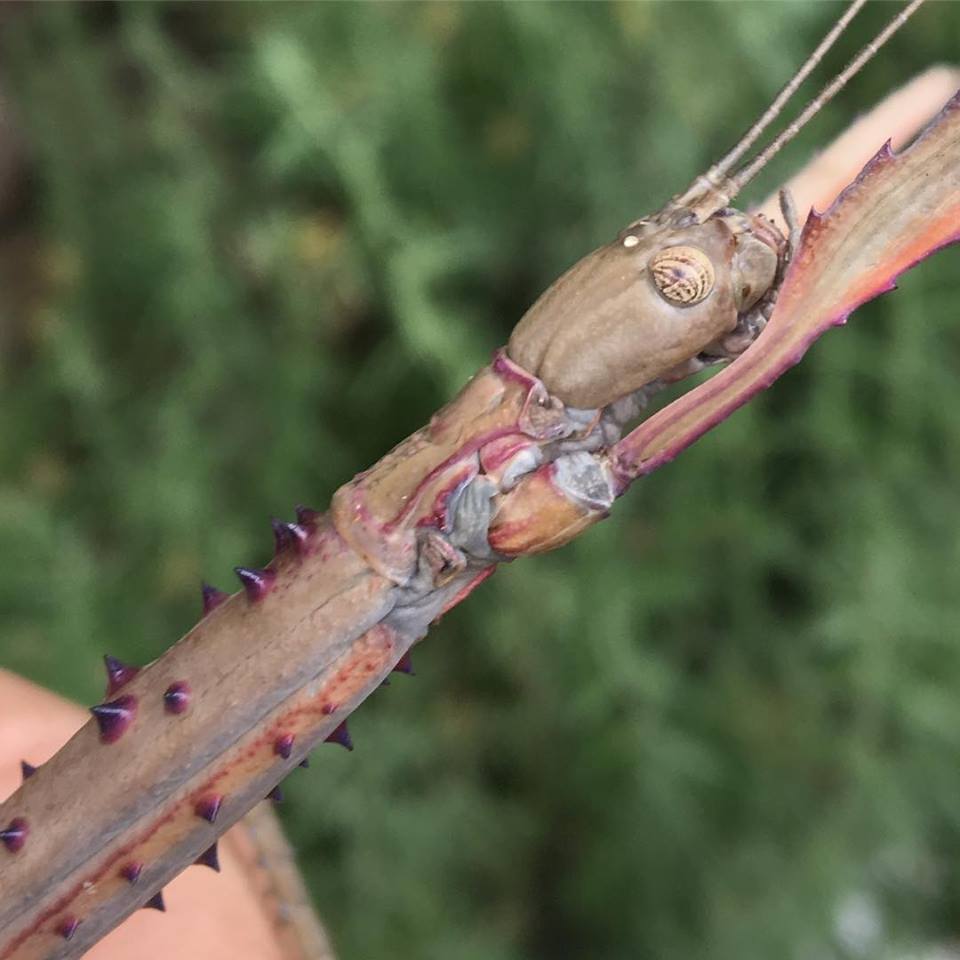
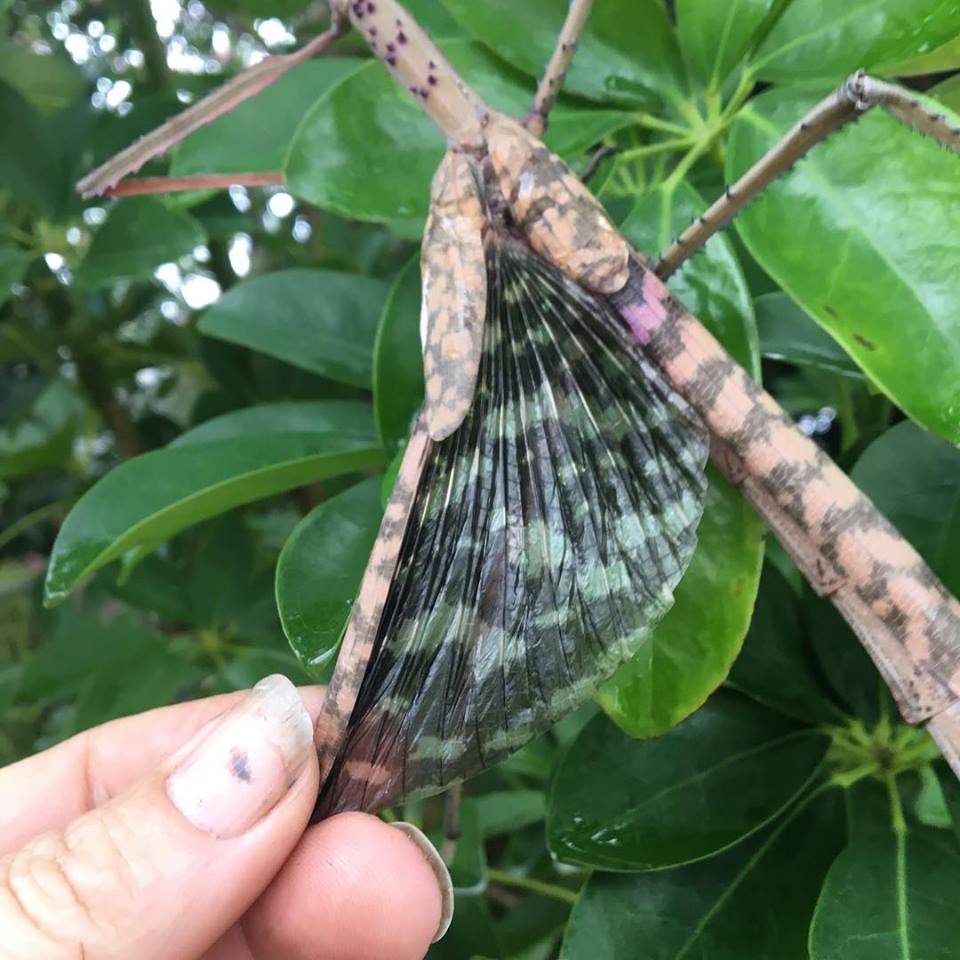
Curious Kids: who was the first person to speak English?

Who was the first person to speak English? – Grace, aged eight, Belfast, Northern Ireland
The first speaker of English did not sound like you or me. That’s because language changes all the time. You have probably noticed that the language of your grandparents differs from yours. You can imagine then how very different English was when it was first spoken in Britain many centuries ago.
The earliest speakers of English spoke Old English. I am using the word “speakers” because there must have been more than one speaker: after all, we use language to talk to others.
Old English developed in a turbulent period of British history. This was just after the Romans had left Britain, around 1,600 years ago. The Romans had colonised Britain but they abandoned the country in the fifth century because the Roman empire was collapsing all around them.

Curious Kids is a series by The Conversation that gives children the chance to have their questions about the world answered by experts. If you have a question you’d like an expert to answer, send it to curiouskids@theconversation.com and make sure you include the asker’s first name, age and town or city. We won’t be able to answer every question, but we’ll do our very best.
The Romans who ruled Britain spoke their language, Latin. But most of the people who lived in Britain when the Romans were there – and before that too – spoke a Celtic language. This Celtic language was rather like Welsh, but again much older than the present-day Welsh language.
After the Romans left Britain, Germanic tribes who were on the move throughout Europe in the fifth and sixth centuries invaded. These tribes were the Angles, the Saxons and the Jutes. The language they spoke is known as North Sea Germanic.
The First English Speakers
Once they settled in Britain it became Old English, which is also sometimes called “Anglo-Saxon”. From the Angles comes the word “English” and from the Angles and Saxons together comes the word “Anglo-Saxon”. I teach Old English to students of English at university.
So Old English or Anglo-Saxon is the oldest form of the English language that was spoken and written in England in the early Middle Ages, the period from roughly 450 to 1050. Very few Celtic words were taken over into Old English. The word “brock” (meaning “badger”) is one of the rare exceptions.
Do we know the names of the first speakers of Old English? Two names are mentioned in ancient legends that tell the story of how the Angles and the Saxons arrived in Britain.
According to these legends, the British (when they were still Celtic speakers) asked two Germanic leaders, Hengest and Horsa, to come to Britain to help protect the country after the Romans had left.
Hengest and Horsa arrived in Britain with lots of other people from their tribe and conquered the land. We have no way of knowing if these legends are true, but if they are we have here the names of the two chieftains who brought their language to Britain.
An Old English Poet
There is one other name that deserves to be mentioned, and that is Caedmon. He is the first poet in English whose name is known. The story of his life is told by the monk and historian Bede, who lived in the north of England from around 673 to 735.

Bede not only tells the story of Hengest and Horsa, but he also tells us about Caedmon, who was a cowherd. Bede wrote that Caedmon could not read or write and received the ability to compose beautiful poetry as a gift from God. The first poem that Caedmon was inspired to create is a poem in praise of God. The first two lines of this poem will give you a taste of Old English:
Nu sculon herian heofonrices Weard,
Metodes mihte and his modgeþanc
In modern English, this means: “Now we must praise the guardian of the heavenly kingdom, the Ruler’s might and his plan”.
You might think this is not really English at all. But we still use some of the words used in Old English – “and” and “his” are both in these two lines of poetry. Other words have survived too, though we often spell and pronounce them differently. See if you can spot the Old English words for “might” and “now” in these lines from Caedmon’s poem.
Caedmon looked after the cattle in a monastery in Whitby in Yorkshire. One of my university students studying Old English comes from Whitby and she told me that her school is named after our first named English poet: Caedmon College. His legend lives on.![]()
Ad Putter, Professor of Medieval English Literature, University of Bristol
This article is republished from The Conversation under a Creative Commons license. Read the original article.
Curious Kids: how does your brain know how to move your body?

How does your brain know how to move your body? – Ivy, age 8, Victoria
Hi Ivy, thanks for asking such an interesting question!
To answer it, we’ll need to look at some different parts of the brain and what they do.
First, The Brain Collects Information
The front part of the brain plans and makes decisions. It does this after considering the different types of information it receives from “nerve cells”.
This information is called “sensory” information. It comes from touch, pain, temperature, hearing, seeing, and so on.
This is what happens when, for example, we spot someone giving out chocolate on the street, we turn our heads to look at them and walk towards the chocolate.
So How Do The Messages Get From The Brain?
The brain lives in the brain box in our head. The spinal cord lives in the spinal canal, in the back part of our body.
Tiny nerve fibres that come out of the lower part of the brain and the spinal cord connect many muscles. When they tighten, they make things move.
Some nerve fibres connect to muscles that cross the joints. Others attach to the tongue and eyeball and make them move.
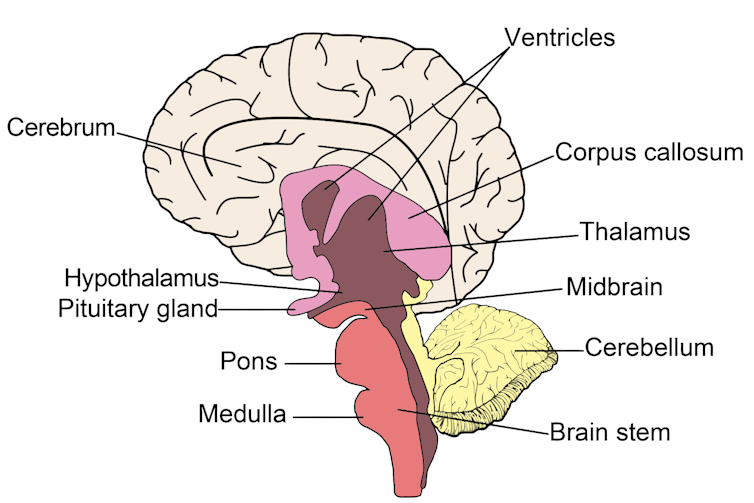
Nerve cells send signals among each other, and between all the muscles and glands, including those responsible for making saliva in the mouth and digestive juices in the stomach.
A human brain has more than 100 billion nerve cells and sends messages to make us do things like walk, skip or stand up from a chair.
Different Jobs For Different Parts Of The Brain
The brain has many regions that coordinate how we move.
One part helps us work out how much force is necessary in making the movement. It also tells the brain to start the movement.
Another part plays a role in the timing of movements.
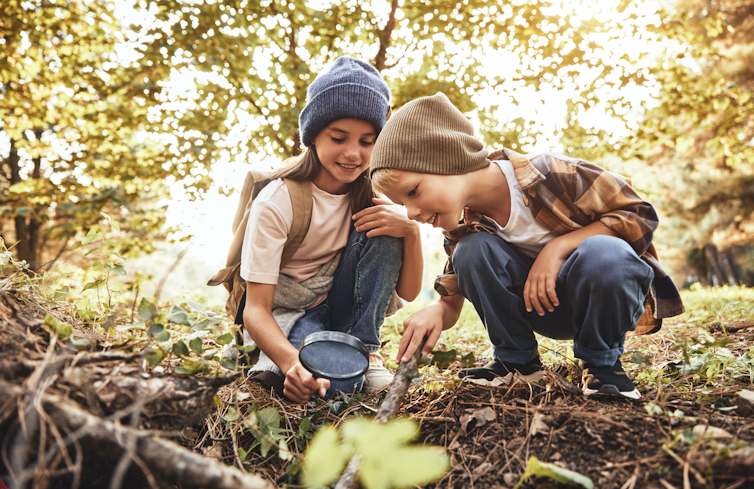
Different types of nerves also have different roles. Some help us move voluntarily – when we choose to. These nerves connect to the muscles responsible for moving our joints in different body parts, like our arms and legs.
Another group of nerves work automatically. They sense what is happening inside our body without us consciously knowing. These nerves control the muscles in our heart, blood vessels, stomach, intestines, kidneys and other organs, helping them work properly.
What’s The Answer In A Nutshell?
So Ivy, to sum up, the brain receives information from our senses and uses this to control our body movements.
Different parts of the brain send messages to different parts of the body to get these movements right.
Our brain can also store movements into memories that will be recalled for future use. That’s why you can remember how to ride a bike, even if you haven’t ridden one for months.
Hello, curious kids! Do you have a question you’d like an expert to answer? Ask an adult to send your question to curiouskids@theconversation.edu.au![]()
Arjun Burlakoti, Senior Lecturer in Anatomy and Neuroanatomy, University of South Australia
This article is republished from The Conversation under a Creative Commons license. Read the original article.
Curious Kids: How are planets created?

Curious Kids is a series for children in which we ask experts to answer questions from kids.
How are planets created? - (Saba, 6, Kenya)
Thanks for asking such an interesting question, Saba. When you talk about planets you’re probably thinking of the planets in our solar system – the ones orbiting (circling around) our sun. There are eight of these planets. One of them is where you and I live: Earth. The others are Mercury, Venus, Mars, Jupiter, Saturn, Uranus and Neptune.
There are many, many more planets way beyond our solar system and our galaxy, the Milky Way. Scientists like us, known as astronomers, have found over 5,000 planets around other stars. We estimate that there may be trillions across the Universe.
How did they come into being? It all starts with a cloud of gas and dust.
Gas And Dust
These clouds of gas and dust are called nebulae. They float around in space much like the clouds in our sky. There are some regions with more clouds and some with fewer and astronomers can see these using telescopes.
Nebulae contain gases like hydrogen, helium and carbon. When a nebula becomes dense enough its gravity pulls it together into a very dense core. This is a bit like the water in your bath swirling around the drain before getting sucked down. As the cloud gets dense it heats up. When it gets dense and hot enough the atoms – tiny building blocks for all the matter in the world – in the nebula start to fuse.
This process is called nuclear fusion and produces a lot of energy. And the cloud lights up like a firework. This is how a new star is born, just like our Sun was 4.5 billion years ago.
A small amount of gas and dust remains around new stars in a spinning disc. Planets are formed from this disc of material.
Protoplanets
As the disc rotates, the material in it, small bits of rock and ice, lump together and get bigger and bigger. That forms what we call planetesimals, which collide with each other like bumper cars, creating even larger bodies known as protoplanets.
The protoplanets keep growing. While this is happening, they can attract gases from the surrounding disc, creating a thick atmosphere. This process is called accretion and it is how gas giant planets like Jupiter and Saturn are formed. If a protoplanet forms from heavier elements in the outer solar system it can create an ice giant. The planets Neptune and Uranus are ice giants.
Even after the planet is formed it can keep changing over time through processes such as volcanic activity, tectonic movement, and erosion. On Earth, mountains like Mount Kilimanjaro in Tanzania – the country next door to Kenya – formed from large volcanoes. And even larger mountains like the Himalayas have formed from tectonic plates colliding. Tectonic plates are big pieces of the Earth’s outer layer; sometimes they crash into each other and that creates things like mountains.
Millions Of Years
The way I’ve described this makes it sound as though planets are formed quickly. But the process which begins with those clouds of gas and dust takes millions of years to transform into the beautiful and diverse worlds we see in our Solar System and beyond.![]()
Daniel Cunnama, Science Engagement Astronomer, South African Astronomical Observatory, South African Astronomical Observatory
This article is republished from The Conversation under a Creative Commons license. Read the original article.
We Love You Tina - Always Will: Homebake 2009 Festival In Sydney
VALE Dr Rosemary Crossley
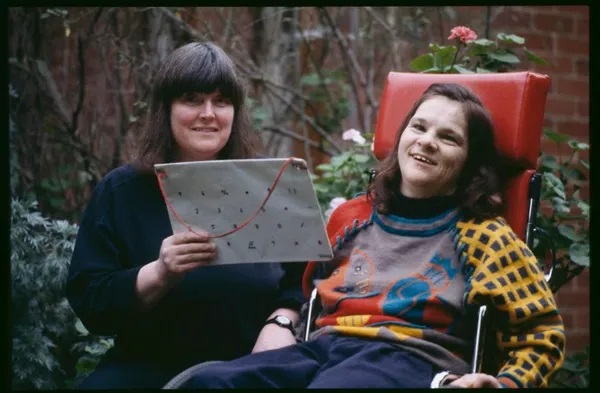
In Tribute To Rosemary
Wayne’s Hand-Built Lolly Trolleys Bring Sweet Joy For Older People In Need
 Wayne, 67, provided his skills to fashion eight trolleys that will enable other volunteers to distribute sweets like musk sticks, chocolate, marshmallows, liquorice all sorts, sultana boxes, jellybeans, and diabetic treats around HammondCare’s aged care homes.
Wayne, 67, provided his skills to fashion eight trolleys that will enable other volunteers to distribute sweets like musk sticks, chocolate, marshmallows, liquorice all sorts, sultana boxes, jellybeans, and diabetic treats around HammondCare’s aged care homes.
Vaccination Best Protection As We Head Into Winter Months
- 14,409 total new positive tests reported in the past 7 days
- 4,638 positive PCR tests reported in the past 7 days
- 9,771 positive Rapid Antigen Tests (RATs) reported in the past 7 days
- 69 lives lost reported in the past 7 days
- children aged six months to under five years
- people aged 65 and over
- Aboriginal people from six months of age
- pregnant women at any stage of pregnancy
- those with serious health conditions such as diabetes, cancer, immune disorders, obesity, severe asthma, kidney, heart, lung or liver disease.
- stay up to date with your recommended influenza and COVID-19 vaccinations
- stay home if you have cold or influenza symptoms
- wear a mask in crowded, indoor places
- get together outdoors or in large, well-ventilated spaces with open doors and windows
- wash or sanitise your hands often
- talk with your doctor now if you are at higher risk of severe illness from COVID-19 or influenza to make a plan about what to do if you get sick, including what test to have, and being assessed to determine if you are eligible for antiviral medicines
- don’t visit people who are at higher risk of severe illness if you have cold or influenza symptoms or have tested positive to COVID-19 or influenza
- consider doing a rapid antigen test before visiting people at higher risk of severe illness
- free RATs are now accessible to the community via some local councils, ServiceNSW and NSW Health services.
The Mediterranean Diet: Good For Your Health And Your Hip Pocket
Public Hospital Funding Agreement Needs Complete Makeover: AMA
Consistent Link Between The Seaside And Better Health
Victoria shows Australia how to finally abolish stamp duty once and for all

Major state tax reforms are few and far between in Australia, which is what makes Tuesday‘s Victorian budget very, very significant.
Victoria’s government announced it will abolish stamp duty for commercial and industrial properties and replace it with an annual property tax.
The Victorian model shows how state governments could abolish all property stamp duties once and for all – including stamp duties on homes.
Stamp Duty Is A Bad Tax
Originally intended to be abolished as part of the deal to introduce the goods and services tax back in 2000, stamp duty on commercial and industrial properties accounts for about one-fifth of all stamp duty revenues collected in Victoria.
They are one of the most economically harmful taxes Australia has.
Stamp duties on commercial and industrial properties act as a brake on new businesses, stop many businesses from shifting premises as they grow and ultimately mean we don’t use scarce urban land as efficiently as we should.
Economists estimate that stamp duties on commercial property cost the economy between 50 cents and 60 cents for every dollar of revenue they raise – more than any other state tax.
So far, only South Australia has fully phased out stamp duty on commercial properties, although it never replaced it with a land tax.
The Australian Capital Territory is well on the way to abolishing them as part of its broader property tax reforms, which will see stamp duty replaced with a broad-based land tax for all types of property over two decades.
The ACT is just over half-way through that transition.
Victoria’s Bold Moves
From July 2024, buyers of commercial and industrial properties will have the option of paying stamp duty upfront or the same amount (with interest) stretched out over a decade.
A decade after that purchase, the property will attract an annual land tax of 1% of the property’s unimproved land value.
If the new owners sell again, even within the first decade, no stamp duty will be charged and the same deadline for the introduction of the land tax will apply.
Land tax won’t be charged on properties bought before July 2024 until they are sold. After they have switched to land tax, they can’t switch back.
How quickly things transition will depend on how quickly these properties turn over, and it might take decades.
But once the transition is complete, the budget predicts a long-term payoff to the state economy of as much as $50 billion over some decades.
Abolishing Homebuyer Stamp Duty Is The Big Prize
Abolishing stamp duty on commercial properties is a big step forward. But the main game remains abolishing stamp duties on homes, which raise four times as much for state governments.
Economists hate stamp duties on homes because they discourage homeowners from moving house as their lives change. Doing so would mean having to pay stamp duty a second time.
It’s also unfair because it punishes younger households that move around more, while rewarding older residents who tend to stay put for decades.
Stamp duty even acts as a tax on divorce. It’s a big reason why more than half of divorced women who lose their home don’t buy again. Divorced women are already three times more likely to rent in retirement than married women.
Removing stamp duty would lead to better use of the existing housing stock: first homebuyers could buy smaller homes knowing they could more easily upgrade later, and more retirees would downsize. Past NSW Treasury calculations suggest this could result in rents and house prices falling by up to 6% in the long term.
In 2018, the Grattan Institute found a national shift from stamp duties to land tax would add up to $17 billion per year to gross domestic product.
Victoria’s Approach Could Inspire Others
Broader stamp duty reform has stalled. Despite the obvious benefits, only one Australian government, the ACT, has made the move from stamp duties to a broad-based property tax.
Adopting the ACT model – by gradually phasing down stamp duty while lifting land tax – would ensure Victoria could transition without losing revenue.
But it would impose land tax on those who haven’t moved homes, which would make the politics harder.
The former NSW Perrottet government tried to give homebuyers a choice between paying stamp duty and land tax as a way around forcing existing home buyers to start paying land tax, but the reform fell flat once the true cost to the state budget became apparent.
Victoria’s model provides an alternative for weaning homes off stamp duty. No one would be forced to pay land tax until they moved, which would make the politics much easier. But it would take longer to reap the economic benefits than the ACT’s approach.
It would still cost the budget money as the government would collect less in land tax than it would from the stamp duty during the transition. But the budgetary cost would be much less than adopting the failed NSW model, especially if the federal government committed to filling part of the (smaller) revenue hole.
Ditching stamp duty for land tax for all properties could be a game-changer across Australia. The ACT showed us one path. Victoria is opening up another.![]()
Brendan Coates, Program Director, Economic Policy, Grattan Institute
This article is republished from The Conversation under a Creative Commons license. Read the original article.
Why surfing can be beneficial for people with brain injuries

Nothing quite beats riding a wave for the first time. And our research suggests you don’t have to be a pro to benefit from the power of the sea. We have found that surfing can help people with brain injuries live more engaged and meaningful lives.
In addition to physical impairments, acquired brain injury can cause difficulties with processing information, regulating emotions and socialising. Many people with brain injuries can struggle to return to work or engage in exercise and can start to feel isolated. Critically, they don’t always have the confidence or connections required to engage with their local communities.
We have been working with a team of psychologists across different Welsh health boards to help survivors overcome these barriers and have studied the effects.
During our research, we teamed up with Surfability UK, which is a surf school that aims to make the activity as inclusive as possible to disabled people. It offers adapted wetsuits, longer boards, beach buggies and developed the world’s first tandem seated surfboard to support those with mobility issues, including people with acquired brain injuries.
Accessing such opportunities can still be a challenge if you have a brain injury. So, to overcome this, psychologists join patients for a dip in the sea and provide them with therapeutic support in their wetsuits.

We followed up by interviewing 15 patients who have undertaken surfing sessions as part of the neuro-rehabilitation programme run by the Swansea Bay and Hywel Dda university health boards to learn more about their experiences.
We found that providing brain injury survivors with an opportunity to immerse themselves in the dynamic elements of the tide, wind and sea can have a huge impact on their mental health and wellbeing. It enabled participants to reconnect with the outside world and feel respite from the everyday stressors of modern life.
Connecting people to nature has previously been shown to improve wellbeing and promote an appreciation of the environment. But our patients reported some particular benefits to surfing.
In contrast to gardening, for example, one of the participants who shared their experiences described surf therapy as something which “doesn’t stay still”. It’s something which is constantly evolving – falling off the board is a part of the learning process. This can be uncomfortable and distressing at first, but persevering can often lead to feeling a sense of achievement.
Some of our participants reported that surfing had taught them that all types of emotions – whether positive or negative – are an important part of the human experience. Instead of trying to control them, accepting them can help people find meaning in their lives.
Making room for difficult thoughts enabled some of our brain injury survivors to reconnect with their values and hobbies too. Surfing gave them meaning and a “valid reason for being alive”. It also showed them that “despite being a bit broken in some places,” they were still capable people. This helped them to renegotiate their identity.
Connecting with people in similar situations can also be crucial after brain injury. Many report that they don’t feel understood by family and friends. Yet belonging is a basic psychological need.
Being part of a group enabled our brain injury survivors to learn there were other people with similar experiences. They were able to create a network where they could share resources and experiences to help each other.
The purpose of therapy is to induce sustained and meaningful change after brain injury. Along with immediate improvements in fitness, balance and coordination, our follow-up research found patients continued engaging in outdoor physical activity for up to ten months later.
Some stuck with surfing, while others took up paddleboarding or cold-water swimming. Research suggetss taking part in purposefully designed water-based activities can generate a similar sense of wellbeing as surfing.
Our research underlines how the power of the sea can offer patients benefits which typical clinical settings do not provide.![]()
Katie Gibbs, Research and Innovation Assistant and PhD Student of Psychology at Swansea University, Swansea University; Andrew H Kemp, Professor and Personal Chair, Swansea University, and Zoe Fisher, Consultant Clinical Psychologist, Swansea University
This article is republished from The Conversation under a Creative Commons license. Read the original article.
‘We can no longer justify unpaid labour’: why uni students need to be paid for work placements

This article is part of our series on big ideas for the Universities Accord. The federal government is calling for ideas to “reshape and reimagine higher education, and set it up for the next decade and beyond”. A review team is due to finish a draft report in June and a final report in December 2023.
Mandatory work placements are a vital part of many university degrees. This includes some of the most important degrees in our society, such as nursing, teaching, social work, psychology and the allied health professions.
The time these require varies but is always significant. For example, for social work and occupational therapy programs it is 1,000 hours. Nursing degrees require at least 800 hours of placement. Undergraduate education students need to complete at least 80 days of professional experience.
These positions are not paid.
Amid a cost-of-living crisis, with rising university fees, we can no longer expect students to do this work for free. The Universities Accord has placed a big emphasis on equity and improving participation in higher education. As part of this, it needs to make sure students are not penalised for completing necessary parts of their degrees.
Our Research
Late last year, the Australian Council of Heads of School of Social Work commissioned a survey about work experience placements and I led the research team.
More than 700 students around the country responded to the survey, which asked about current challenges for field education, particularly given the COVID pandemic.
We also received nearly 500 responses from educators and practitioners in organisations who host these students.
Income Deficits And Hidden Costs
Our survey found the financial burden of placements on students could be crippling.
Work placements invariably mean students have to travel, potentially pay for parking and wear professional clothing. This immediately leaves students out-of-pocket. As one survey respondent told us:
The extent of the hours and […] the cost of petrol and transport made my placement experience a financial issue.
But students also often have to forgo paid work they have in order to meet their course requirements. As one student noted:
To do unpaid work we have to choose between putting petrol in the car to get to placement or putting food in our stomachs.
More than a third of students (33.7%) said they lost their entire weekly income because of field placement. Another 25% had lost up to 75% of their regular wage.
More than 96% of students said they didn’t have enough money to pay for food, or the clothes and travel required for placement. More than 79% said they knew of other students who have had to defer their social work studies or withdraw from the degree altogether due to placement requirements.
Many told us they had incurred large debts from additional student loans “due to lack of resources”. Others talked about a total disruption to their lives:
I will need to […] resign from my full-time employment and relocate as I will not be able to afford my rent in the city.
This Is Harming Mental Health
The disruption caused by work placements was not just financial. Almost 80% said their mental health had been adversely affected due to the financial hardship associated with their placement. As these students noted:
My mental health has never been so bad after doing placement and now I have to do another one. I have no idea how I’m going to live on such little money for six [more] months.
Students also explained this made it hard to benefit educationally from the placement:
How are we meant to meet learning competencies, support clients to the best of our abilities if we ourselves are suffering due to unfair, unrealistic placement expectations?
Another told us, the placement became just about “getting the hours done, rather than learning”.
What Can We Change?
Perhaps unsurprisingly, students overwhelmingly supported being paid for field placements. Some described the current situation as “unethical”.
I am already struggling with providing basic needs for my family, such as childcare, mortgage [without being on placement].
This was endorsed by social work educators and practitioners who said “we can no longer justify unpaid labour”.
This idea is not a new one. It has long been been proposed for disciplines such as nursing and education.
Paid Placements Are The Way Forward
We need an immediate restructure of how student placements are conceptualised and funded.
We pay apprenticeship wages for trades, so why not support students who are studying vital professions? There are many ways it could work, but here are three possibilities:
the government funds organisations who take students on placement to pay them for their work
the government funds universities to pay students a bursary, or
students doing a placement apply through Services Australia for a special temporary payment.
Whichever way we do it, we need to stop assuming all university students have wealthy parents who can fund their studies. And we need to stop pretending free labour is they best way for students to learn. ![]()
Christine Morley, Professor of Social Work, Queensland University of Technology
This article is republished from The Conversation under a Creative Commons license. Read the original article.
Applications Open For 150 Apprentice Scholarships
 Apprentices facing financial or personal hardship will be supported to undertake their trade and study through a $2.25 million NSW Government scholarship program.
Apprentices facing financial or personal hardship will be supported to undertake their trade and study through a $2.25 million NSW Government scholarship program.
Applications are now open until 21 July for the 2023 Bert Evans Apprentice Scholarships program that will support 150 people with $15,000 each to complete their training and further their career.
The scholarships support apprentices who are experiencing financial or personal hardship, demonstrate a high aptitude for vocational education and training, and are committed to their on- and off-the-job training in metropolitan and regional NSW.
The scholarship program is named in honour of the late Bert Evans AO, a passionate advocate of vocational education for more than 30 years. A total of 751 Bert Evans Apprentice Scholarships have been awarded since 2014.
These scholarships greatly assist first year apprentices to undertake their trade and study to achieve their career goals.
The NSW Government-run program offers grants of $5000 annually over 3 years to help people overcome personal barriers to finish their apprenticeships and go onto rewarding careers.
The scholarships are awarded to apprentices in NSW who have demonstrated:
- financial hardship and/or personal hardship
- capability for vocational education and training, and
- a positive attitude and application in the workplace and in off-the-job training.
Minister for Skills, TAFE and Tertiary Education Tim Crakanthorp said, “With demand for vocational education high, this year we have increased the number of Bert Evans scholarships on offer to help more apprentices through their training.
“Whether you need to purchase new tools, cover fuel or car maintenance costs, or pay for additional training courses, these scholarships have helped people overcome personal barriers to finish their apprenticeships and go onto rewarding careers.
“Apprenticeships are vital in ensuring NSW has a pipeline of skilled workers, and we want to give our apprentices a helping hand to complete their training, so they can make a strong contribution in their jobs and in the lives of their families and communities.”
Visit Bert Evans Apprentice Scholarships or phone 13 28 11 for more information and to apply.
Dorothea Mackellar Poetry Awards 2023: Optional Theme This Year 'The Winding Road'
HOW TO ENTER: https://dorothea.com.au/how-to-enter/
PLEASE SEE HERE FOR A DETAILED PDF ON ENTRY INSTRUCTIONS FOR TEACHERS AND PARENTS.
ONLINE SUBMISSION
Primary school and secondary school entries can be submitted anytime during the competition period.
1. Teacher/parent register account online *If you have already created an account, skip to step 3 and log in*
2. Check email for link to verify account and create password
3. Log in to your account
4. Purchase tier of entries *Please note we’re only able to accept credit card payments at this time*
5. Enter student details and submit poem(s) (cut and paste or type in poem content direct to the webpage)
6. Repeat step 5 for every student/individual poem.
*PLEASE NOTE: If you’re registering as an individual student, put your HOME address in your personal details and not your SCHOOL’S address! The address you list is where your participation certificate will be posted!*
Please read our Conditions of Entry here before registering for the competition.
USEFUL TIPS
Have a read of the judges’ reports from the previous year. They contain some very helpful advice for teachers and parents alike!
It is recommended for schools to appoint a coordinator for the competition.
Only a teacher/parent can complete the registration form on behalf of the student/child.
Log-in details: username is the email address and a password of your choice.
Log-in details can be given to other teachers/students for poem submission in class/at home.
Log-in as many times as necessary during the competition period.
Teachers can view progress by monitoring the number and content of entries.
Individual entries are accepted if the school is not participating or a child is home schooled. Parent needs to complete the registration form with their contact details. Please indicate ‘individual entry’ under school name and home postal address under school address.
Invoice for the entry fee will be sent to the registered email address within 2 weeks.
‘Participation certificate only’ option available for schools where pre-selection of entries has been carried out. Poems under this option will not be sent to judges, students will still receive participation certificate for their efforts.
Please read the Conditions of Entry before entering. Entries accepted: March 1 to June 30, results announced during early September.
NEED SOME INSPIRATION?
Check out our learning resources or browse the previous years’ themes and winning entries.
For more information contact our Project Officer on 02 6742 1200 or email dorothea.mackellar@outlook.com.
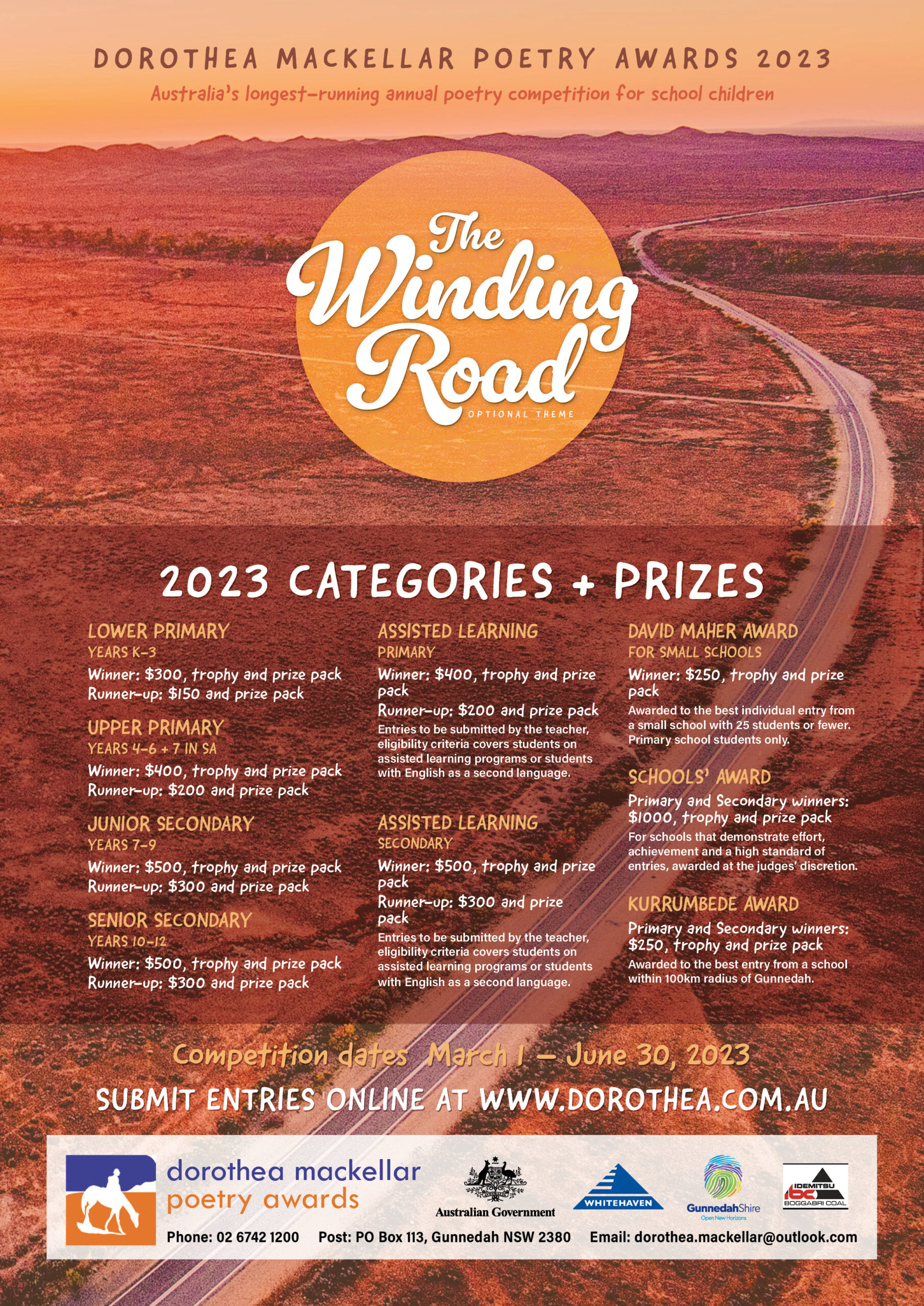
Northern Beaches Police Area Command: E-Scooter And E-Bike Safety Operation
Commencing at 8am today (Wednesday 17 May 2023), officers from Northern Beaches Highway Patrol will be conducting a high-visibility operation on e-scooter and e-bike safety along the Northern Beaches.
The aim of this operation is to educate the public on traffic laws associated with e-scooters, e-bikes and pedestrian safety.
Police will also be running this operation across May through to July 2023.
🚲 For more information on E-Bikes: https://roadsafety.transport.nsw.gov.au/stayingsafe/bicycle-riders/petrol-powered-bicycles.html
🛴 For more information on E-Scooters: https://roadsafety.transport.nsw.gov.au/stayingsafe/e-scooters/index.html


The 2023 CWAS "David Malin Awards"
Entries close Wednesday, 31 May 2023
The Central West Astronomical Society is proud to announce the 2023 CWAS Astrophotography Awards - the "David Malin Awards".
The competition will continue with the new judging structure, introduced last year. In order to build on the experience of previous years, and to continue as the premier competition of its kind in Australia, a panel of distinguished Australian astrophotographers will judge the category entries. Dr David Malin will judge the Overall Winner from the list of these winners. We are honoured that the judging panel will include Phil Hart, Alex Cherney, and Peter Ward, previous winners of the "David Malin Awards" and numerous other national and international astrophotography competitions.
There are three sections of entry - General Section, Open Themed Section, and a Junior Section (18 or younger). The general section is divided into six categories; Wide-field (camera shots), Deep Sky (telescope shots), Solar System, Nightscapes, Animated Sequences, and Smartphone Astrophotography. The Junior Section will have one open category and entries can be of any astronomical subject, and can be an animated sequence.
The Competition Structure:
- General Section:
- Wide-Field
- Deep Sky
- Solar System
- Nightscapes
- Animated Sequences
- Smartphone Astrophotography
- Junior Section (18 or younger) - One Open Category (can be of any astronomical subject)
- Open Themed Section - "The Zodiac"
The "David Malin Innovation Prize" may be awarded, at Dr Malin's discretion, for a striking astronomical image that shows exceptional imagination, innovation or an unusual approach in any of the categories.
An additional prize, "The Photo Editor's Choice", will also be awarded. This will be judged by a major news organisation's photo editor or editors.
The Solar System category is for images of solar system objects taken with a telescope. Wide-field solar system shots may be entered in the Wide-Field or Nightscape categories depending on the subject and composition.
The Nightscapes is intended to showcase the increasing popularity and evolution of this relatively new genre of astrophotography, combining beautiful terrestrial foregrounds with a night sky scene - often in a single exposure (HDR is OK) or as a multi-shot panorama. NOTE: Any image that contains terrestrial foregrounds will be considered to be a nightscape image.
Animated Sequences should be videos that are intriguing or highlight concepts and events not obvious or significant in stills. Astrophotographers are invited to submit animations, produced as either time-lapse sequences or with other forms of video. They can be of any subject, provided there is a distinct astronomical link. All animations must be submitted as MOV, MPEG, AVI or MP4 files. Today, smartphones are ubiquitous and some are capable of impressive low light-level photography.
In Smartphone Astrophotography we are looking for images that have been taken with only a smartphone, and without telescopes, of an astronomical scene that has some aesthetic appeal and/or that has captured something you might not expect to see from such a tiny camera.
There is no strict delineation between Deep Sky and Wide-Field images. Wide-field images are typically produced with DSLR and interchangeable lens cameras at a focal length of less than ~400mm, but this characterisation is becoming less clear as equipment evolves. Wide-field images are typically constellations or "scenes" rather than deep sky "objects" but entrants are free to submit images to either category.
Judges reserve the right to move images between categories.
The Open Themed Section is open to all astrophotographers. They are encouraged to see who can be the most inventive and creative in evoking the theme, which this year will be "The Zodiac". Photographs could be of the dusty zodiacal light or gegenschein, portraits of the zodiac constellations with or without planets amongst them, or anything else that symbolises the zodiac, one of the earliest astronomical concepts in our understanding of the sky. We are looking for eye-catching images that are also aesthetically pleasing and/or challenging.
All entries must be images that faithfully reflect and maintain the integrity of the subject. Image manipulations or composites that produce works that are more "digital art" than true astronomical images, will be deemed ineligible.
All still images must be submitted as digital files via a dedicated web site that can be accessed at this myphotoclub web page. For judging purposes, still images must be submitted as JPG files with the longest side having a dimension no greater than 4,950 pixels. All images must be in Adobe 1998 RGB colour space and will be judged using a calibrated monitor. Similarly, winning images will be printed from the files as-received, so it would be prudent for entrants to calibrate their monitors if possible. It does make a difference. Click here for an example of a very detailed set of calibration procedures for all platforms. For Mac users, a useful monitor calibration program can be found under "Monitors" in System Preferences, and the ideal solution for monitor calibration is a stand-alone device such as the Spyderexpress.
Submission of entries will close at 24:00 (AEST) on Wednesday, 31 May 2023. Entrants must first create an account on the MyPhotoClub submission page, by clicking on the green entry button. Follow the links to create the account and password.
Entry fees are $15 per entry and should be paid by the PayPal gateway on the entry website. Credit and debit cards can be used on this gateway.
The photographs will be judged by a panel of distinguished astrophotographers, who will judge the category winners. Dr David Malin will judge the overall winner from this list of winners.
Submitted image files should not contain identifying metadata. If anonymity of the judging process is important to the entrant, then images should not be shared in public forums prior to completion of judging. The winners will be notified and presented with the "David Malin Awards" during a special ceremony, held during the 2023 CWAS AstroFest, in the presence of invited dignitaries on Saturday, 22 July 2023. All winners should make every effort to attend the presentation of the awards.
A selection of the finest astrophotographs received will be professionally printed courtesy of Sunstudios and exhibited for the entire year at the CSIRO Parkes Observatory's Visitors Centre. In addition, a second set will tour the country in a travelling exhibition, organised by the Museum of Applied Arts and Sciences, to selected venues across Australia.
There is a limit of five (5) entries per category per photographer. All photographs must have been taken no more than 2 years before the closing date of entry, and no re-entries from previous DMA competitions will be accepted. All entries must be submitted in electronic form via the MyPhotoClub submissions web site. The entrants must provide brief details of the equipment, exposure times, processing, and where relevant, the location where the image was taken.
It is not just technical skill that the judges will be looking for, but an aesthetically pleasing picture that reflects and captures the beauty, inspiration and interest of astronomy. All images will be judged by these criteria.
More details here: https://www.cwas.org.au/astrofest/DMA/
Enter here: https://cwasdma.myphotoclub.com.au/
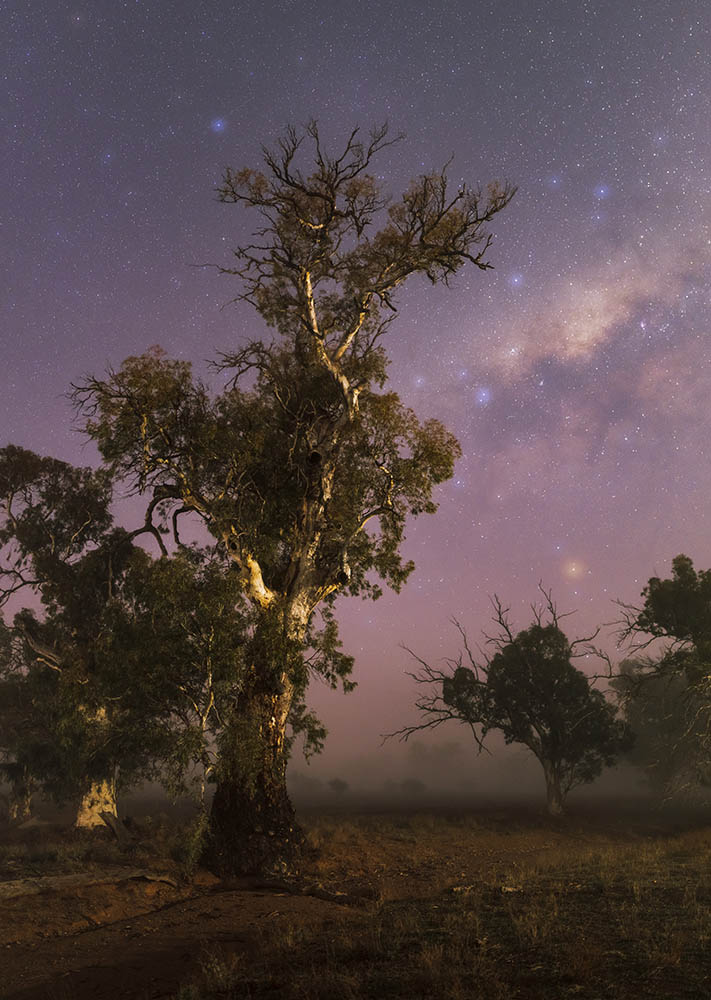
2022 Winner: Ian Inverarity - Nightscapes; OVERALL WINNER "Old Giant in the Fog"
Citation: "This is the finest image I have seen in this competition. It is simply beautiful, and no more needs to be said. No sign of stitching, either."
Enzo Maiorca: Everyone Can Make A Difference
Enzo Maiorca (21 June 1931 – 13 November 2016) was an Italian free diver who held several world freediving records. Born Vincenzo Maiorca on 21 June 1931 in Syracuse, Sicily, he died on 13 November 2016 in the same city.
Maiorca was a vegetarian.
In 1977, Maiorca was initiated into Scottish Rite Freemasonry at the "Archimede di Siracusa" Lodge in Italy. With the agreement of the Grand Orient of Italy lodge, this element of his biography was publicly revealed in 2017.
Maiorca learned to swim at age 4 and soon began to dive, although expressing a great fear of the sea. In 1956 a friend showed him an article about a new depth record of 41 meters set by spearfishing champions Ennio Falco and Alberto Novelli. Maiorca was led by the article to begin competing in order to achieve the title of the "man who reaches the deepest." He achieved this in 1960, when he reached 45 metres to beat Brazilian Americo Santarelli. That same year, however, Santarelli reclaimed the title by reaching 46 metres, which Maiorca soon surpassed at 49 metres.
In 1967 Maiorca ceased spearfishing, while still competing in freediving. He explained in an interview why he abandoned spearfishing:
"It all happened suddenly. I was diving in the shallows not far from the cape that reaches out to the open sea south of the bay of Syracuse. That morning I happened to spear a grouper. A strong and combative grouper. On the bottom a real titanic struggle broke out, between me who wanted to take its life and the grouper who tried to save itself.
The grouper was caught in a cavity between two rocks; trying to understand its position, I ran my right hand down the fish's belly. Its heart was pounding in terror, mad with fear. And with that pulsing of blood I realised that I was killing a living being. Since then my speargun lies like a derelict, an archaeological item, in the dusty basement of my house. That was in 1967."
He was also responsible for saving a pregnant dolphin caught in an abandoned net:
“Years ago, while we were diving, a male dolphin guided my daughters Rossana and Patrizia, and myself, almost leading us by our hands, and gave us the chance to save a female dolphin who was tangled up in the meshes of a swordfish net.
“I maintain that his brain waves influenced our minds. What is certain is that our arms were the stretcher by means of which we carried that poor exhausted animal, wracked by contractions, to the surface.
“As soon as she was on the surface, after breathing out foam and blood, she gave birth to a dolphin calf under the watchful eyes of her mate. The little one was led to his mama’s nipples by gentle strokes of the adult dolphin’s beak.
“I like to think that on that day we reunited a family.”
Enzo Mallorca ended his speech by saying: “Until man learns to respect and speak to the animal world, he can never know his true role on Earth.” ~ Vangelis.”
On 22 September 1974, in the Bay of Ieranto (or 'Jeranto') at the western end of the Gulf of Salerno, Maiorca attempted to establish a new world record for freediving, aiming for 90 metres. The event was televised live, for the first time in the history of RAI (the Italian national broadcaster). Just 6 metres into his dive, Maiorca bumped into Enzo Bottesini, an expert scuba instructor, and upon resurfacing he let out a string of strong expletives, many of which were clearly audible to the television audience. His outburst led to a television ban for many years, and led to his retirement from competition for more than a decade.
In 1988, Maiorca returned to free diving and set his final record of 101 metres.
From 1994 to 1996, Maiorca was elected to the Senate for the extreme right Alleanza Nazionale party. Maiorca also appeared on Lineablu, a RAI broadcast news series, from 2000 to 2002. The character Enzo Molinari, portrayed by Jean Reno, in the 1988 Luc Besson film The Big Blue was based on Maiorca.
.jpg?timestamp=1684985627480)
Maiorca in 1974. Photo: Wikipedia
The word "grouper" is from the Portuguese name, garoupa, which has been speculated to come from an indigenous South American language. In Australia, "groper" is used instead of "grouper" for several species, such as the Queensland grouper (Epinephelus lanceolatus).
Groupers are fish of any of a number of genera in the subfamily Epinephelinae of the family Serranidae, in the order Perciformes. Groupers are teleosts, typically having a stout body and a large mouth. They are not built for long-distance, fast swimming. They can be quite large in length, over a meter.
In Pittwater our rock shelves off our beaches are home to the Blue Groper. They are found in the coastal waters across southern Australia and distinguished by the bright blue colouring of the adult males.
All blue gropers begin life as females. As they mature, they go through an initial phase, in which they may be male or female, before developing their adult colouring and reaching the terminal phase.
Typically you will only find one or two male blue gropers in an area, with a larger number of the female gropers in the same area. Should the dominant male blue groper die, the largest female will grow, change colour and sex, and become the dominant male.
In Australia certain states like New South Wales have granted protection to this species. It is illegal to spear blue groper in NSW. There is also a limitation on fishing for them with a line.
They are extremely inquisitive, and while it is now discouraged to feed them by cutting up urchins, they still will approach divers as if expecting to be fed. Their lifespan is said to be up to 35 years according to some sources, longer according to others.
In 1998, the eastern blue groper was made the state fish emblem of New South Wales.
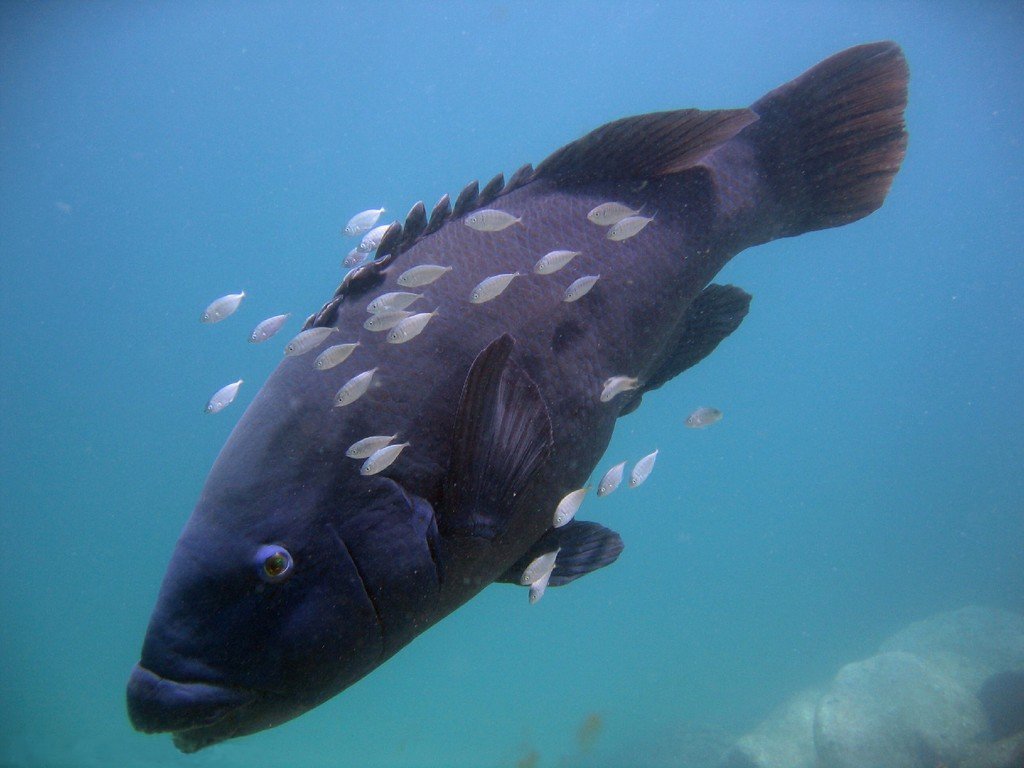
A male Eastern Blue Groper (Achoerodus viridis) with escorts. Shelly Beach, Manly, NSW. Photo: Richard Ling
Sydney In 1928
School Leavers Support
- Download or explore the SLIK here to help guide Your Career.
- School Leavers Information Kit (PDF 5.2MB).
- School Leavers Information Kit (DOCX 0.9MB).
- The SLIK has also been translated into additional languages.
- Download our information booklets if you are rural, regional and remote, Aboriginal or Torres Strait Islander, or living with disability.
- Support for Regional, Rural and Remote School Leavers (PDF 2MB).
- Support for Regional, Rural and Remote School Leavers (DOCX 0.9MB).
- Support for Aboriginal and/or Torres Strait Islander School Leavers (PDF 2MB).
- Support for Aboriginal and/or Torres Strait Islander School Leavers (DOCX 1.1MB).
- Support for School Leavers with Disability (PDF 2MB).
- Support for School Leavers with Disability (DOCX 0.9MB).
- Download the Parents and Guardian’s Guide for School Leavers, which summarises the resources and information available to help you explore all the education, training, and work options available to your young person.
School Leavers Information Service
- navigate the School Leavers Information Kit (SLIK),
- access and use the Your Career website and tools; and
- find relevant support services if needed.
Word Of The Week: Bamboozle
verb
1. (transitive, informal) To con, defraud, trick, to make a fool of, to humbug or impose on someone, to deceive by underhand methods. (transitive, informal) 2. To confuse, frustrate or perplex.
From 1695-1703, originally a slang or cant word, of unknown origin. Perhaps Scottish from bombaze, bumbaze "confound, perplex," or related to bombast, or related to French embabouiner "to make a fool of" (literally 'baboon'). Related: Bamboozled; bamboozler; bamboozling. As a noun from 1703.
noun
1. (obsolete, informal) A cheat, hoax or imposition.
Compare related - Fool
noun
1. a person who acts unwisely or imprudently; a silly person. 2. Historical; a jester or clown, especially one retained in a royal or noble household.
verb
1. trick or deceive (someone); dupe.
adjective
1. Informal; foolish; silly.
From Middle English: from Old French fol ‘fool, foolish’, from Latin follis ‘bellows, windbag’, by extension ‘empty-headed person’. Noun; fool early 13c., "silly, stupid, or ignorant person," from Old French fol "idiot; rogue; jester," also "blacksmith's bellows," from Medieval Latin follus (adj.) "foolish," from Latin follis "bellows, leather bag," from PIE root *bhel- "to blow, swell."
The sense evolution probably is from Vulgar Latin use of follis in a sense of "windbag, empty-headed person." Compare also Sanskrit vatula literally "windy, inflated with wind." But some sources suggest evolution from Latin folles "puffed cheeks" (of a buffoon), a secondary sense from plural of follis. One makes the "idiot" sense original, the other the "jester" sense.
fool - verb; mid-14c., "to be foolish, act the fool," from fool (noun). The transitive meaning "make a fool of" is recorded from 1590s. Sense of "beguile, cheat" is from 1640s. Also as a verb 16c.-17c. was foolify. Related: Fooled; fooling. Fool around is 1875 in the sense of "pass time idly," .
fool - adjective; c. 1200, "sinful, wicked; lecherous" (a fool woman (c. 1300) was "a prostitute"), from fool (noun). Meaning "foolish, silly" is mid-13c.
fool - noun; a food, type of custard dish, 1590s, of uncertain origin. The food also was called trifle, which may be the source of the name (via verb and noun senses of fool). Others reject derivation from Old French fole "a pressing."
Compare jester - noun; Historical, 1. a professional joker or ‘fool’ at a medieval court, typically wearing a cap with bells on it and carrying a mock sceptre. 2. a person who habitually plays the fool. 3. a person who is given to witticisms, jokes, and pranks. a professional fool or clown, especially at a medieval court. A comic, comedian, clown, harlequin, buffoon.
From - The modern use of the English word jester did not come into use until the mid-16th century, during Tudor times. This modern term derives from the older form gestour, or jestour, originally from Anglo-Norman (French) meaning 'storyteller' or 'minstrel'. Other earlier terms included fol, disour, buffoon, and bourder.
,_Koninklijk_Museum_voor_Schone_Kunsten_Antwerpen,_529.jpg?timestamp=1685034693924)
Festival of the Archers. Master of Frankfurt, 1493. Two jesters are depicted in the center of the picture. Image: Royal Museum of Fine Arts Antwerp
Many royal courts throughout English royal history employed entertainers and most had professional fools, sometimes called "licensed fools". Entertainment included music, storytelling, and physical comedy. Fool Societies, or groups of nomadic entertainers, were often hired to perform acrobatics and juggling.
Jesters were also occasionally used as psychological warfare. Jesters would ride in front of their troops, provoke or mock the enemy, and even serve as messengers. They played an important part in raising their own army's spirits by singing songs and reciting stories.
Henry VIII of England employed a jester named Will Sommers. His daughter Mary was entertained by Jane Foole.
During the reigns of Elizabeth I and James I of England, William Shakespeare wrote his plays and performed with his theatre company the Lord Chamberlain's Men (later called the King's Men). Clowns and jesters were featured in Shakespeare's plays, and the company's expert on jesting was Robert Armin, author of the book Fooled upon Foole. In Shakespeare's Twelfth Night, Feste the jester is described as "wise enough to play the fool".
In Scotland, Mary, Queen of Scots, had a jester called Nichola. Her son, King James VI of Scotland, employed a jester called Archibald Armstrong. During his lifetime Armstrong was given great honors at court. He was eventually thrown out of the King's employment when he over-reached and insulted too many influential people. Even after his disgrace, books telling of his jests were sold in London streets. He held some influence at court still in the reign of Charles I and estates of land in Ireland. Anne of Denmark had a Scottish jester called Tom Durie. Charles I later employed a jester called Jeffrey Hudson who was very popular and loyal. Jeffrey Hudson had the title of "Royal Dwarf" because he was short of stature. One of his jests was to be presented hidden in a giant pie from which he would leap out. Hudson fought on the Royalist side in the English Civil War. A third jester associated with Charles I was called Muckle John.
Jester's privilege was the ability and right of a jester to talk and mock freely without being punished. As an acknowledgement of this right, the court jester had symbols denoting their status and protection under the law: the crown (cap and bells) and sceptre (marotte), mirroring the royal crown and sceptre wielded by a monarch.
After the Restoration, Charles II did not reinstate the tradition of the court jester, but he did greatly patronize the theatre and proto-music hall entertainments, especially favouring the work of Thomas Killigrew. Though Killigrew was not officially a jester, Samuel Pepys in his famous diary does call Killigrew "The King's fool and jester, with the power to mock and revile even the most prominent without penalty" (12 February 1668). The last British nobles to keep jesters were the Queen Mother's family, the Bowes-Lyons.
In the 18th century, jesters had died out except in Russia, Spain, and Germany. In France and Italy, travelling groups of jesters performed plays featuring stylized characters in a form of theatre called the commedia dell'arte. A version of this passed into British folk tradition in the form of a puppet show, Punch and Judy. In France the tradition of the court jester ended with the French Revolution.
In the 21st century, the jester has been revived and can still be seen at medieval-style fairs and pageants. In 2015, the town of Conwy in North Wales appointed Russel Erwood (aka Erwyd le Fol) as the official resident jester of the town and its people, a post that had been vacant since 1295.
Harlequin is the best-known of the zanni or comic servant characters from the Italian commedia dell'arte, associated with the city of Bergamo. The role is traditionally believed to have been introduced by Zan Ganassa in the late 16th century, was definitively popularized by the Italian actor Tristano Martinelli in Paris in 1584–1585, and became a stock character after Martinelli's death in 1630.
The Harlequin is characterized by his checkered costume. His role is that of a light-hearted, nimble, and astute servant, often acting to thwart the plans of his master, and pursuing his own love interest, Columbina, with wit and resourcefulness, often competing with the sterner and melancholic Pierrot. He later develops into a prototype of the romantic hero. Harlequin inherits his physical agility and his trickster qualities, as well as his name, from a mischievous "devil" character in medieval passion plays.
The Harlequin character first appeared in England early in the 17th century and took centre stage in the derived genre of the Harlequinade, developed in the early 18th century by John Rich.[4] As the Harlequinade portion of the English dramatic genre pantomime developed, Harlequin was routinely paired with the character Clown. As developed by Joseph Grimaldi around 1800, Clown became the mischievous and brutish foil for the more sophisticated Harlequin, who became more of a romantic character. The most influential portrayers of the Harlequin character in Victorian England were William Payne and his sons the Payne Brothers, the latter active during the 1860s and 1870s.

The classical appearance of the Harlequin stock character in the commedia dell'arte of the 1670s, complete with batte or "slapstick", a magic wand used by the character to change the scenery of the play. By Maurice Sand, 1860.
Empowerment, individual strength and the many facets of love: why I fell for Tina Turner
Leigh Carriage, Southern Cross UniversityFor singers – amateur and professional alike – the name Tina Turner evokes instant reverence: Turner is a singer’s singer and perhaps the performer’s performer.
A highly successful songwriter, the consummate dancer and fittingly ranked as one of the 100 Greatest Artists of All Time by Rolling Stone magazine, Turner was the ultimate entertainer.
Upon hearing of her death, I was deeply saddened. I immediately recalled the intoxicating power and timbre of her voice, her mesmerising energy and her commanding performances.
I started singing sections of songs such as Proud Mary, River Deep Mountain High and of course iconic original songs, such as Nutbush City Limits. This was an intimate, sentimental, nostalgic and danceable song celebrating Turner’s roots growing up in the small town of Nutbush, Tennessee.
Fierce Hard Work
My first encounter with Turner’s brilliance and might was hearing her hits of the mid-1980s, with songs like Graham Lyle’s What’s Love Got To Do With It, Al Green’s Let’s Stay Together and – love it or hate it – the powerful rock ballad We Don’t Need Another Hero, the theme song to Mad Max: Beyond Thunderdome.
Once introduced, I immersed myself in her extensive back catalogue, soaking in her early 1960s soul, funk and emerging rock tracks.
Today, I flashed back to memories of the physical energy and technical focus and practice it took just attempting to sing any Turner songs in my 20s.
The degree of difficulty required to perform as Turner did cannot be understated.
To sing with such consistency in such high registers, belting out song after song live with impeccable pitch, breath control, fitness, articulation and rhythmic precision is one thing. To do all of this while dancing with intense pace to highly choreographed routines throughout each show is on a whole other level.
Her performance practice exemplified fierce hard work – with an immense energy and vitality in live performance.
Try singing any of her songs at a Karaoke bar. Very quickly you gain some insight into the technical demands her songs require.
Making Songs Her Own
For every singer, selecting a repertoire to cover is an ongoing quest.
In a sea of the world’s great songs, Turner selected songs she could make her own. She remodelled every song she sang - realigning them so much that we now think of them as hers first.
There are so many examples. My favourites are Turner’s formidable versions of I Can’t Stand the Rain (originally by Ann Peebles), The Best (Bonnie Tyler) and Private Dancer (Mark Knopfler).
A great deal of the songs Turner was known for through the 1960s were covers. Turner’s forceful and expressive vocal delivery gave new life to these songs, realigning them with her uniquely identifiable sound and choice of vocal register, her phrasing choices and her punctuated rhythmic delivery.
Turner is perhaps less known as a songwriter, but her diverse songwriting demonstrated her skill and thoughtful, well-crafted lyrics. On her 1972 album Feel Good, nine of the ten songs were written by Turner. From 1973 to 1977, Turner composed all the songs on each album.
One of my favourites of her original songs is the power ballad Be Tender With Me Baby. It speaks of a request for understanding, of her loneliness and vulnerability, sung with Turner’s intensity.
Across her original songs and covers, Turner’s repertoire spoke of empowerment, individual strength and the many facets of love. Beyond performing, Turner represented inner strength, spiritual depth and resilience against adversity.
In 1996, when Turner was 57, she recorded her ninth studio album, Wildest Dreams.
One track, Something Beautiful Remains, may not be as familiar as many of her other hits, but it is the song I have kept returning to today. In the chorus, Turner’s lyrics are sadly perfectly fitting:
For every life that fades
Something beautiful remains.
Leigh Carriage, Senior Lecturer in Music, Southern Cross University
This article is republished from The Conversation under a Creative Commons license. Read the original article.
How can I make studying a daily habit?


Curious Kids is a series for children of all ages. If you have a question you’d like an expert to answer, send it to curiouskidsus@theconversation.com.
How can I make studying a daily habit? – Jesni P., age 15, Mumbai, Maharashtra, India
Studying – you know you need to do it, but you just can’t seem to make it a habit. Maybe you forget, become distracted or just don’t want to do it.
Understanding what a habit is, and how it forms, can help you figure out how to study on a daily basis.

The Habit Loop
A habit is a behavior you do regularly or routinely. As a professor who studies how to help students become better readers and writers, I can tell you that research shows habits have a loop: cue, routine, reward.
Let’s say you have a habit of eating a snack after school. When school is about to end, you start to feel hungry. Dismissal is the cue to get your snack.
Eating the snack is the routine. The reward is that it tastes good and your hunger goes away, which reinforces the habit – and makes you want to repeat the loop again the next day.
Here are the things you need to make a studying loop:
- A set time to study every day.
- A cue to start studying.
- An environment that helps you stick to your studying routine.
- A reward for studying.
Setting A Time
When you do things at the same time every day, it is easier to remember to do them.
To determine how much time you should set aside each day to study, multiply your grade level by 10 minutes.
That means if you’re in third grade, you would plan to spend about 30 minutes per day studying. This can include the time you spend practicing your reading. If you’re in eighth grade, you would spend 80 minutes per day – that is, one hour and 20 minutes – studying.
Research suggests that two hours is the maximum amount of daily studying time that is beneficial. Spending more time than that on a regular basis can cause stress, anxiety and possibly disturb healthy sleep habits.
So choose a single block of time during the afternoon or evening when you will have the right amount of time to study every day.
There may be days when your assignments do not fill the full block of time that you have set. On those days, you should spend time reviewing material that you’ve already studied; regularly going back over information helps you remember it and think about how to integrate it with the new things you’re learning.
You also can spend those extra minutes reading a book. Studies show a daily habit of reading for 20 minutes will improve your vocabulary, language skills and overall knowledge.
The Cue
Studying at the same time every day is one cue, but you may need something more concrete when first forming your habit.
This can be a calendar reminder you set on your phone or laptop, or something as simple as a card with the word “study” printed on the front. You can leave the card where you hang up your coat or put down your bag when you get home from school – or on your television or computer screen.
On the back of the card, write the word “studying.” Then keep this side facing up and posted to the back of your computer, on your door, or above your desk while you work.
This will signal to others that they should not disturb you during this time. When you finish studying, return the card to its starting spot so that it’s ready to remind you to study the next day.

Your Study Environment
To help yourself study, you need a place set up for work and not for doing other things. Do not study on your bed – that’s for sleeping – or in front of the television, or anywhere it’s difficult to hold and use the materials you need. Best option: a table or desk with good lighting.
Your study place should limit distractions. That includes other people’s conversations and all media: TV, video games, social media, texts or music. Research repeatedly has shown the human brain cannot multitask well; people make more mistakes if they try to do two things at the same time, especially when one of those things requires concentration. Bouncing back and forth between two things also means it takes longer to complete the task.
Although you should put away electronic devices when studying, that may not be an option if you need them for homework. If that’s the case, set the “do not disturb” notification on your phone, silence incoming notifications and close all social media and gaming apps.
Gaming, social media and video apps are programmed to make you want to keep checking or playing them. That means you have to replace the bad habit of constantly using them with the good habit of studying for a designated block of time.
The Reward
That said, after you finish studying, you can give yourself a little gaming or social media time as your reward.
With time, the studying itself will become its own reward. Improving your knowledge and skills will give you a sense of achievement and make you more confident and happier at school. But while forming your study habit, a really fun reward will help you stick with it.
This is especially true if the subject you’re studying is difficult for you. No one likes to do something they think they’re not very good at. However, it’s impossible to get better if you do not practice, and studying is just like practicing a sport, instrument or hobby.
How Long It Takes
The amount of time it takes to make studying a daily habit can be anywhere from 21 days to a few months, depending upon the person.
To help you stay with it, find a study buddy to form the habit along with you. Ask your family not to interrupt you during study time. And consider using apps to set goals and track your study time so you can watch your habit form and celebrate your progress. The good news: Daily studying gets easier the more you do it.
Hello, curious kids! Do you have a question you’d like an expert to answer? Ask an adult to send your question to CuriousKidsUS@theconversation.com. Please tell us your name, age and the city where you live.
And since curiosity has no age limit – adults, let us know what you’re wondering, too. We won’t be able to answer every question, but we will do our best.![]()
Deborah Reed, Professor of Education, University of Tennessee
This article is republished from The Conversation under a Creative Commons license. Read the original article.
Astronomers detected two major targets with a single telescope – a mysterious signal and its source galaxy
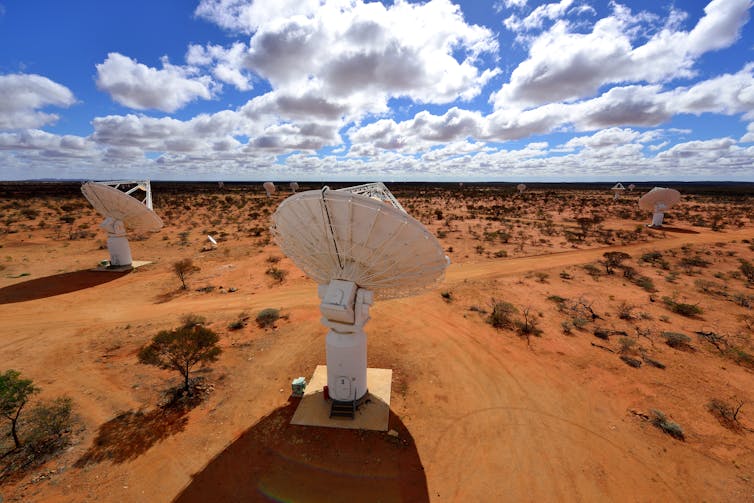
Astronomers have been working to better understand the galactic environments of fast radio bursts (FRBs) – intense, momentary bursts of energy occurring in mere milliseconds and with unknown cosmic origins.
Now, a study of the slow-moving, star-forming gas in the same galaxy found to host an FRB has been published in The Astrophysical Journal. This is only the fourth-ever publication on two completely different areas of astronomy describing the same galaxy.
Even more remarkable is the fact that a single telescope made the discovery possible – from the same observation.
Fast Radio Mysteries
FRBs, first detected in 2007, are incredibly powerful pulses of radio waves. They originate from distant galaxies, and the signal typically only lasts a few milliseconds.
FRBs are immensely useful for studying the cosmos, from investigating the matter that makes up the universe, to even using them to constrain the Hubble constant – the measure of how much the universe is expanding.
However, the origin of FRBs is an ongoing puzzle for astronomers. Some FRBs are known to repeat, sometimes over a thousand times. Others have only been detected once.
Whether these repeating or non-repeating signals have formed differently is currently being investigated by several research groups. At one point, we had more theories on how fast radio bursts are made than detections of them.
It’s an exciting time to be studying FRBs, as showcased by the recent study associating an FRB with a gravitational wave. If that finding holds true, it means at least some FRBs could be created by two neutron stars merging to form a black hole.
However, it is hard to pinpoint where exactly fast radio bursts come from. They are extremely bright yet so brief, getting an accurate position is hard for many radio telescopes. Without knowing where precisely these bursts originate, we cannot study the galaxies they are found in. And without knowing the environments FRBs are formed in, we cannot fully solve their mysteries.
One telescope in Australia is now helping us figure it out.
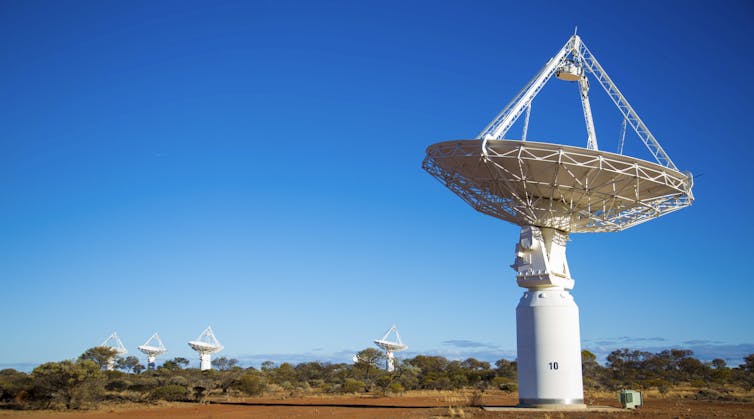
The Tool For The Job
CSIRO’s ASKAP radio telescope (Australian Square Kilometre Array Pathfinder), located in the Western Australian desert, is a remarkable instrument. Made up of an array of 36 dishes separated by up to six kilometres, ASKAP can detect FRBs and pinpoint them to their host galaxies.
ASKAP can in fact perform its FRB search at the same time as observations for other science surveys. One such ASKAP survey will map the star-forming gas in galaxies across the Southern sky, helping us understand how galaxies evolve.
During a recent observation for this survey, ASKAP also detected a new FRB, and we were able to identify the galaxy it comes from – a nearby spiral galaxy much like our own Milky Way.
A Gas-Filled Galaxy
ASKAP was able to find the cold neutral hydrogen gas – the source of star formation – in this spiral galaxy. As far as FRB host galaxies go, this is already a rare detection of this gas; only three other cases have been published so far. These had required follow-up observations, or relied on other older observations, made with different telescopes.
Here, ASKAP gave us both the FRB and the gas surrounding it. It is the first simultaneous detection of these rarely overlapping occurrences.
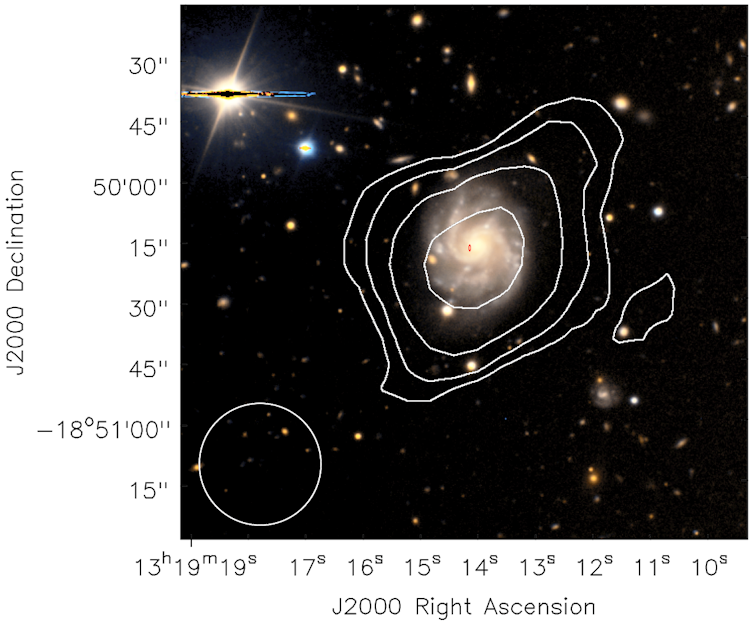
Disturbed gas which ASKAP can detect can give us an indication that a galaxy merger recently happened, which tells us about the star forming history of the galaxy. In turn this gives us clues as to what may cause FRBs.
The previous studies of the gas surrounding FRBs found fast radio bursts reside in very dynamic systems, suggesting tumultuous galaxy mergers triggered the bursts.
For this particular FRB, however, the host galaxy environment is surprisingly calmer. Further studies will be needed to find out if overall we see disturbed gas environments for FRBs, or if there are distinct scenarios – and potentially multiple creation paths – for FRBs.
More To Come
Given the uniqueness of such dual detections, this result showcases the strength and versatility of ASKAP. This is the first simultaneous detection of both an FRB and the gas in its host galaxy.
And this is just the start. ASKAP is set to detect and localise over a hundred FRBs a year. By continuing to work collaboratively with each other, different survey groups will be able to untangle the mysteries behind FRBs, how they form, and their host galaxy environments.
CSIRO acknowledges the Wajarri Yamaji as the Traditional Owners and native title holders of the Inyarrimanha Ilgari Bundara, our Murchison Radio-astronomy Observatory site, where ASKAP is located.![]()
Marcin Glowacki, Research Associate, Curtin University
This article is republished from The Conversation under a Creative Commons license. Read the original article.
Why are killer whales attacking boats? Expert Q&A

Orcas living off Europe’s Iberian coast recently struck and sunk a yacht in the Strait of Gibraltar. Scientists suspect that this is the third vessel this subpopulation of killer whales has capsized since May 2020, when a female orca believed to be the originator of this behaviour suffered a traumatic encounter with a boat.
In most reported cases, orcas are biting, bending and breaking off the rudders of sailboats. So how did they learn to imitate this behaviour – and why? We asked Dr Luke Rendell, who researches learning, behaviour and communication among marine mammals at the University of St Andrews.
Why do you think orcas appear to be attacking boats off the Iberian coast?
Any answer that I (or anyone else, really) give to this question is speculation – we just don’t know enough about killer whale motivations to be certain. The puzzle for biologists is to understand how this behaviour developed.
The lack of obvious fitness-enhancing rewards (like food, for example) means this is unlikely to have evolved because it enabled the whales to better survive in their environment. That is what we would call an adaptive trait: it confers a direct evolutionary benefit by helping the animal find food, mate, or successfully raise offspring.
But I can say what this behaviour looks like. There are multiple accounts of single and groups of orcas developing idiosyncratic and not obviously adaptive habits. These range from one group engaging in what seemed like a short-term fad of carrying dead salmon on their heads, to another vocally mimicking sea lions (there may be an adaptive outcome to convincing sea lions that you are a sea lion too, not a voracious predator, but there’s no evidence of this occurring).
There are other kinds of behaviour that do appear to bring rewards – for example, captive orcas learning to regurgitate fish to use as bait for gulls, which they apparently prefer to eat over the fish. But the origin and spread of these boat attacks currently fits very well with the characterisation of a temporary fad, and it remains to be seen how long it persists.
If instead there is an adaptive explanation, my hunch is it has to do with curiosity sometimes leading to important innovations around food sources, which can then be shared.
How do you suspect this behaviour is being transmitted among killer whales in the region?
This behaviour probably started with individual orcas, but would appear to spread through social learning. We recently published a paper on a similar fad-like behaviour in bottlenose dolphins, where we identified the dolphin that promoted a tail-walking behaviour it had acquired during a temporary period of captivity.
This is pretty similar to the account of an academic journal on the recent yacht sinking, in that a specific individual was identified as the potential source. This orca was prompted to engage in the behaviour due to a past trauma – perhaps being struck by a boat rudder, according to the account.
The precise reason is very hard to know for sure, but we do know the behaviour has spread through her group. And it’s difficult to explain that dynamic without involving some kind of social learning – the spread of information.
Is there evidence of killer whales behaving this way in the past?
I have experienced orcas swimming very close to our boat in the waters near St Vincent, in the eastern Caribbean, during a research survey. Our vessel, like those involved in these interactions, was about the size of a large whale (a humpback, for instance). Maybe they were investigating us, but it never escalated to any kind of physical interaction.

My impression was that they were interested in the boat’s propeller, and the currents it created – they came so close on one occasion that we had to take the engine out of gear to prevent an injury. So, approaching boats is not novel. Damaging them in such a determined way is, however, not something I have ever heard orcas do before.
It is, of course, known to happen in other species – notably sperm whales, giving rise to the story of Moby Dick: a combination of accounts of a white whale off the South American coast dubbed “Mocha Dick”, and the account of the whaler Essex, sunk by a large sperm whale in equatorial waters.
The subpopulation of orcas responsible for these attacks is critically endangered. Do you think the group’s conservation status is relevant in some way?
I don’t think it’s particularly relevant to the origin and spread of the behaviour, but it is highly relevant to how we should manage this population.
If these killer whales continue attacking boats, it will make protecting them harder. Not only does interacting with revolving propellers increase the risk of injury to these animals, it also threatens people – from the injuring of crews to the sinking of vessels – which will create political pressure for something to be done.
Of course, small vessel operators do not need to navigate the areas along the Atlantic coasts of Spain and Portugal where these interactions with orcas have been happening. Preventing them from doing so would solve the problem – but for many boat operators and owners, this is their shortest route, while heading offshore makes for riskier passages. A loss of tourism revenue if these vessels stop will add to pressure for a permanent solution.
It is possible that some will call for these orcas to be controlled, up to and including having them killed if they continue to threaten human life and livelihoods. This poses significant ethical questions about our relationship with these animals.
Should we, as the species that ultimately holds the greatest power, vacate small, vulnerable vessels from the orcas’ habitat as part of a shifting relationship to the sea, which we know is deteriorating as a result of our actions? Or should we confer on ourselves the right to navigate as we please and control any nonhuman animals that impede it, up to and including culling them?
Historically, the latter view would almost certainly have prevailed, and perhaps it will here. But it is a question which society, rather than scientists, must answer, and it will be telling which way the relevant authorities ultimately turn.
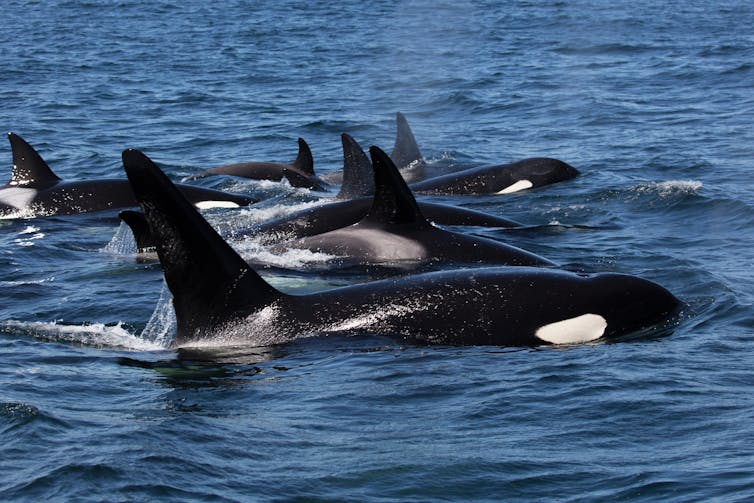
Reports indicate a ‘traumatised’ victim of a boat collision initiated the behaviour. Are notions of solidarity and self-defence among killer whales outlandish?
I regard this as plausible speculation. The authors of the recent paper cast it as one of a number of assumptions about how the behaviour might have developed, with generally increased pressure on their habitat and the idea of natural curiosity as other options (the latter is what I think is most likely).
Notions of collective self-defence in cetaceans (aquatic mammals including whales, dolphins and porpoises) are far from outlandish. We have accounts of sperm whales rising to each other’s defence when orcas attack, for example. Solidarity is a more subjective issue, and we don’t have access to the internal mental states of these animals to really understand whether this is going on.
I can, however, point to a different cetacean: humpback whales apparently aid other species, notably seals, that are under attack from orcas. The scientist who led the description of this behaviour, Robert Pitman, said he regards it as “inadvertent altruism” based on a simple rule of thumb: “When you hear a killer whale attack, go break it up.”
These accounts raise interesting questions about the motivations behind orcas attacking boats that we cannot yet answer. It is not impossible that these orcas perceive their own common aggressor in us – but it is also entirely possible they have no such concept.![]()
Luke Rendell, Reader in Biology, University of St Andrews
This article is republished from The Conversation under a Creative Commons license. Read the original article.
Laws targeting protesters are being rushed through state parliaments. But they are often poorly designed and sometimes, unconstitutional

Across Australia, climate activists are testing the limits of what counts as lawful protest, in addition to the patience of commuters as their actions shut down roads or disrupt businesses. Authorities are responding with new police powers and increasingly harsh new penalties.
The speed at which these new laws are made and their impact on the right to protest are alarming.
Last week in Adelaide, an Extinction Rebellion activist dangled off a city bridge as part of a protest timed to coincide with a meeting of major oil and gas companies. Commuters along busy North Terrace were held up by road blocks set up by emergency services in response to the stunt. The activist was charged with several offences, including obstructing a public place.
The opposition in the state immediately called for tougher penalties for protesters who cause traffic chaos. The next day, the South Australian government introduced amendments to the Summary Offences Act 1953 (SA) that could see protesters hit with fines of $50,000 (up from $750) or three months imprisonment.

Protesters caught by the new laws could also be liable for paying the costs of any police and other emergency services called to the scene. These amendments were passed by the House of Assembly in Adelaide by lunchtime. In a matter of hours, the right to protest in South Australia sustained a grievous blow. And the laws are not limited to protesters – they can apply to any person who directly or indirectly obstructs free passage in a public place.
Both major parties were prepared to pass changes they barely had time to read, let alone scrutinise. There’s no human rights legislation in South Australia to slow down the race to legislate, and not even an requirement to publish explanatory material about the new law.
This type of knee-jerk lawmaking in response to climate protests has occurred in other states too.
In Queensland, laws have been introduced to make sure protesters who clamped themselves to buildings or other bits of the city could be hit with bigger fines and longer jail terms.
In New South Wales, harsher penalties have been introduced to target protesters whose actions disrupted businesses and other economic activity. These laws mean that people can be fined up to $22,000 or jailed for up to two years for protesting illegally on public roads, rail lines, tunnels, bridges and industrial estates.
And in Tasmania, anti-protest laws have been introduced to specifically target activists looking to disrupt logging activities by increasing penalties for anyone who obstructs employees from carrying out their work or causing a risk to worker safety.
These laws are designed to send a “zero tolerance” message to climate activists.
Using the threat of jail and crippling fines, authorities want to stop people from dangling from bridges, clamping themselves to buildings or chaining themselves to trees. They also want to help the commuters stuck in traffic, or the forestry workers locked out of their machines.
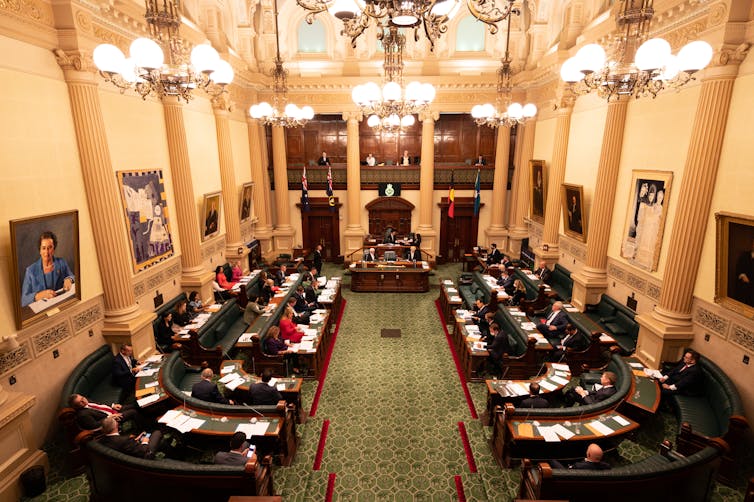
No Compromise On Right To Protest, Environment Conservation
The problem is, when these laws are rushed through parliament, they are often poorly designed and sometimes, unconstitutional. They can also be unpopular.
This is because in the rush to respond to public outrage at the actions of protesters, politicians underestimate how much Australians care about the environment, and the right to peaceful protest.
This is playing out in the backlash to the new anti-protest laws in South Australia and in the judicial and public response to the sentencing of protester Deanna “Violet” CoCo in New South Wales.
These rushed laws also underestimate the reach of the implied freedom of political communication in our Constitution, which has been tested in a range of contexts.
Previous versions of anti-protest laws in Tasmania have been struck down by the High Court for going too far when it comes to imposing penalties on activists seeking to disrupt workplaces, with some judges taking a strong interest in the powers given to police and other authorities under these laws.
For example, in Brown v Tasmania, Chief Justice Kiefel and Justices Bell and Keane explained that anti-protesting laws that are drafted in vague terms, and are highly dependent on police interpretation on the ground, risk capturing or deterring lawful protests. When this happens, the laws may no longer be considered proportionate, and may be incompatible with our constitutionally protected system of representative democracy.
The concept of representative democracy is fiercely defended by the High Court, which means that although we don’t have a constitutional right to protest, we do have an implied freedom to communicate about political matters that might impact who we vote for.
The laws introduced in NSW in 2022 are also being challenged on the basis that they may breach the implied freedom of political communication protected in the constitution.

The Community Backlash
The common element in the community backlash to these laws and the constitutional challenges is proportionality.
Proportionality is a human rights concept that means we think about whether the new law is necessary, whether it will work in practice and what impact it will have on other rights and values we care about in our democracy.
People get rightly get frustrated when their drive to work or school takes three hours longer than usual because of protests. But recent surveys suggest there’s a good chance these same people also care about climate change and don’t want their kids to inherit a dead planet. They certainly don’t want their kids to live in a country where speaking out against the government lands you in jail or bankrupts you.
If we are going to stand any chance against the complex challenges that climate change poses to our way of life, we need parliamentarians who take their representative roles seriously, and take the time to listen to the community.
We need parliaments interested in making proportionate laws rather than breaking legislative speed limits.![]()
Sarah Moulds, Senior Lecturer of Law, University of South Australia
This article is republished from The Conversation under a Creative Commons license. Read the original article.
‘We haven’t been taught about sex’: teens talk about how to fix school sex education

Last week, the Albanese government announced an expert panel to support relationships and sexuality education in Australian schools.
The group is lead by the head of anti-violence organisation Our Watch, Patty Kinnersly, and includes consent advocate Chanel Contos. It will do a “rapid review” into consent and respectful relationships programs to identify “opportunities for improvement”.
This follows a new focus on consent and healthy relationships in Australian schools. The former Coalition government made consent a mandatory part of the curriculum.
We are talking to teenagers about the sex education they receive at schools. This research highlights several areas young people think can be improved. They are particularly concerned sex education most often does not discuss actual sex.
Our Research
As part of broader, ongoing research into online sexual content, we interviewed 30 West Australian teens (aged 11-17), between 2021 and 2023, to explore their experiences of sex education and where they source information to answer their questions about sex and relationships.
Eighteen interviewees were followed up with 12 months after we had first spoken, to see if their perspectives had changed.
Interviews began as some schools started teaching consent in 2021, with sexual assault being widely debated in the wake of the women’s March4Justice rallies around the country and a school sexual assault petition spearheaded by Contos. We have continued to gather young people’s perspectives as consent education became mandatory at the start of this school year.
Only The Basics
The majority of the young people interviewed told us they were only taught the basics about consent – along the lines of “no means no, and yes means yes”. As interviewee Miles* (17) told us:
It’s always broadly talked about […] but it’s never actually talked about what it means and what it actually is.
Nicola (16) added:
It was more just like if someone says ‘no’, ‘stop’ or things like that and if you don’t like it say ‘no’ and things instead of the depths of it.
Consent is complex, so teaching it without necessary detail or context can have devastating results. Some young people may feel unable to say “no” safely in unwanted sexual experiences, and others are genuinely unaware a sexual act occurring, may not be consensual.
At the same time, teens also felt like the focus was on consent at the expense of other information and topics. As Tiffany (14) said:
The whole thing is consent, ‘cos that’s such a big thing nowadays […] we haven’t been taught about sex.
A Focus On 'What Could Go Wrong’
Interviewees also felt current sex education was overwhelmingly fear-based and focused on safety. As 15-year-old Lauren explained, she and her classmates had been taught “what could go wrong and not anything else”.
They talk more about sexual violence and sexual assault than they do about sex itself and the benefits of sex and pleasure […]. It makes it feel like it’s bad to have sex and that there’s no pleasure in it and it’s harmful.
The focus was on risk and biological aspects also left many students confused in terms of how to navigate real-life sexual scenarios safely. As Caris (15) explained:
It’s hard not knowing what to do and where to put yourself and how to move and all of that. It’s hard for teenagers and they don’t feel comfortable going to their parents.
Warren (17) said this meant teenagers were going online to find more information.
The lack of education causes the younger generation to resort to online personal education therefore resulting in more negative or destructive sexual encounters.
This echoes a 2021–22 national survey, which found 95% of young Australians thought sex education was an important part of the curriculum. But only 24.8% said their most recent class was “very” or “extremely” relevant to them.
Teachers Don’t Seem Trained
Young people interviewed also felt like their educators did not have enough training to be teaching about relationships and sexuality, which is taught as part of health and physical education from the first year of school to Year 10. As Nicola said:
It’s strange they have sport teachers teaching it, it’s not a designated teacher for that program. I think it makes a lot more sense if it’s someone who actually is knowledgeable.
Although a number of teens experienced enthusiastic, invigorating teachers, other interviewees wondered why an outside expert could not be brought in to teach about relationships and sexuality.
What Needs To Change
Consent education is extremely important. But if there is an overwhelming focus on consent and risks, education programs can create fear around sex. This can lead to trauma and shame. A Rebecca (16) told us:
It was called healthy relationships, but I reckon should just be called consent ‘cos that’s pretty much all we did the whole term.
Young people need be part of a culture that cares for and respect one another, rather than simply being taught to gain permission for sex. Young people need real-life strategies and communication techniques so they can talk about sex openly and clearly.
There also needs to be balanced information with discussion about the positive aspects of sex, such as building intimacy, communicating and pleasure.
This means consent education needs to be included as an important ingredient within a more comprehensive relationships and sexuality program.
We also need to ensure teachers are supported and receive appropriate training, working alongside visiting specialists as needed.
Learning About Sex Doesn’t Mean Young People Will Have It
There’s a common misconception that discussing sex encourages young people to have sex earlier. However, research suggests the opposite and information can actually delay sexual activity. Recent research also shows Australian parents want schools to tackle sex and relationships in more detail and from an early age.
Ultimately, schools need to be able to listen to the concerns of teens to meet their real needs around sex education in ways that are healthy, safe and relevant.
*names have been changed
If this article has raised issues for you, or if you’re concerned about someone you know, call Kids Helpline on 1800 55 1800 or 1800RESPECT on 1800 737 732. In an emergency call 000.![]()
Giselle Natassia Woodley, Researcher and Phd Candidate, Edith Cowan University
This article is republished from The Conversation under a Creative Commons license. Read the original article.
The great beauty of art is its absence of certainty

It can be surprising when things are not what they seem. Take books, for example.
I recently finished The Outsider (aka The Stranger) by Albert Camus. I’m told many people read it at a younger age, and to prove the point I was given it by a nephew who’d discovered it as a teenager.
It’s not a particularly long book, yet as I turned the pages it seemed to change, revealing something unexpected. To begin with, I thought it slightly dull: a first-person account of a young Frenchman in Algiers, learning his mother had died.
There follows some rather ordinary reports of him eating, sleeping and, for reasons unknown, feeling constantly tired. He finds a girl that he likes, but doesn’t love. We read about an old neighbour whose dog goes missing, and a younger man who asks him to write a letter. It’s all quite unremarkable.
But after he suddenly shoots a man dead, it’s doubtless a very different book. The portrayal of the lengthy prelude to his trial reveals there are many other things the author has in mind. It seems we are engaged with potentially profound reflections: on ethics, liberty, guilt, religion.
Ultimately, the book rests on a sole question: was the murder premeditated? The characters in the book don’t know. But from our privileged place as witness to the narrator’s inner thoughts from the first page, how could it have been? It’s a tricky position for a reader to be in.
One is led to wonder what it is really about. On the final page, Camus suggests that, rather than feeling the love of the deity to which we should aspire, he senses – and is comforted by – the “tender indifference” of the world.
Not What They Seem
I’ve thought about this a while, and decided it’s a philosophical book.
Yet I’m aware that this might be simply how I’m interpreting these events. Indeed, tracing back through my thoughts, I see that for other readers this is possibly a modest story about a few months in the life of a man. Entertaining or not, he’s not a very appealing man at that!
So things like books can be something other than what they seem: what they are on the surface, and the stories we find within, can be wholly dissimilar. If absolute definitions are problematic, perhaps we can dispense with their application to other things.

Take music, for example. Among my friends who work professionally in the field, some are troubled that what to them is an artform is by others classified as just “entertainment”.
I grew up being used to people seeing music as a less-than-serious pursuit. When in my teens I told my grandmother that I wanted to be a musician, she replied that such a thing would be very nice but asked what I would do for a proper job.
(She meant well, she also played piano.)
So in precisely which ways could music be both entertainment and something that is rich and profound?
If you take a piece of music with a beat and play it with conviction, whether it is an Irish jig or a rollicking Baroque gigue by JS Bach, it can make people want to dance. This is a genuine form of entertainment, and perhaps one of music’s first utilities.
If you assemble some memorable words, a pleasing melody and suitable chords, it can make people want to sing along. This has long been the case in folksong traditions, and continues in popular entertainment cultures around the world. It’s notable that Beethoven found it the best solution when he was searching for an ending to his final symphony.
Yet there is something truly ineffable about music in its metaphysical otherness. Like the effect of certain fragrances but more compelling, it can transport us back through time. And not just in momentary bursts. Rather, immersed through its duration, music can move us to our inner core.

Like great authors, creators of music craft narratives of surprising complexity. This can be through the alignment of musical ideas, no matter how small, recurring at pivotal points. Or it can be in the timing of the larger whole, when one encounters a moment of vulnerability where something more exuberant was assumed.
It can be in the ephemeral arc of a melody, or it can be the return to an evocative chord. These things in music that truly speak to us rarely happen by accident. Rather, they reveal the hand of a creative artist, working in one of our most ancient mediums. In the works we hold most highly, it is even believed great music can attain the level of philosophy.
But again, I’m led to ponder how I interpret these events. Tracing back through my thoughts, I see that for other listeners these things might not seem to exist. Could the ears of some be tuned differently to others? Or might these really be just entertaining sounds?
The absence of certainty is the great beauty of it. And sometimes it’s wonderful to be surprised when things are not what they seem. ![]()
Scott Davie, Deputy Head of School, Senior Lecturer in Piano and Musicology, School of Music, Australian National University
This article is republished from The Conversation under a Creative Commons license. Read the original article.
10 ways to help the boys in your life read for enjoyment (not just for school)

Reading is a critical skill for school and life beyond it. Young people need strong reading skills to learn and demonstrate their learning. Reading skills are not just about performing well in subjects such as English. They are related to performance in subjects like science and maths.
When it comes to reading, girls typically do better than boys. This was highlighted by the results of a major international test on reading skills, released last week.
The Progress in International Reading Literacy Study (PIRLS) test, found Australian girls in Year 4 scored on average 17 points higher than Australian boys in the same year.
There was also a gap in terms of attitudes to reading. While more than a third of Australian girls “very much like reading” according to the PIRLS study, less than a quarter of boys feel the same.
Attitudes Toward Reading Matter
Research consistently makes a link between students’ reading skills and their attitudes toward reading. If students are more motivated to read, they read more often and build their reading comprehension skills and vocabulary.
According to Australian Bureau of Statistics data released last month, girls (aged five to 14 years) are also more likely than boys to read for pleasure (77% compared with 68%).
To close the gender performance gap and enhance the performance of boys, we need to get more boys reading for fun.
Why Is There An Attitude Gap?
One reason is boys and girls are brought up differently when it comes to reading.
A 2016 study of Canadian, US and UK parents found they spend more time reading with pre-school daughters than sons. So, while we teach young girls to see themselves as lifelong readers, many boys miss out.
Then as children move into primary school, even though boys read less often, they also receive less parental encouragement to read than girls.
Some boys think that reading is no longer important for them once they know how to do it.
What Can We Do?
Parents, guardians and relatives can play an important role in helping boys see themselves as readers, but once boys can read on their own, this role can be unclear.
Like any skill, sustained reading experiences are needed for reading skills to be both maintained and developed.
We cannot assume boys have opportunities for sustained reading for pleasure at school, as even when silent reading is timetabled in the school day.
Ten Tips To Encourage Reading
Here are some steps you can take to encourage the boys in your life to read, and improve their attitudes toward reading.
1. Take your boys to the local library
Joint library visits can encourage children to read more often, and as children move through the years of schooling, boys are less likely than girls to visit the library in their free time.

2. Encourage reading, even after they learn to read
Make sure your child knows reading is still important even after they can do it by themselves. Keep up the encouragement, and encourage boys as well as girls.
3. Keep reading together
Don’t stop reading aloud just because he can read by himself. Opportunities to read with parents can lead boys to have a positive attitude toward reading, and value shared time spent reading together.
4. Talk about books and share book recommendations
Keeping reading for pleasure in focus rather than reading for testing. Some children begin to see reading is something purely done for testing, making reading seem like a chore.
5. Show them you read for fun
The PIRLS report also found a positive link between parents liking books and their child’s reading achievement. So, show your children you read and read for fun.

6. Encourage holiday reading
Encourage boys to read during the school holidays. During these times, children’s reading skills may decline as they are not being sustained and developed.
7. Go to the experts
Not sure what your child might like to read? Ask the teacher librarians at your school. They are experts at connecting struggling and disengaged readers with books that meet their interest and ability levels.
8. Fiction and non-fiction are both great
The stereotype that all boys prefer to read non-fiction is not true. Fiction books offer literacy benefits as well as building social skills such as empathy. That being said, non-fiction is great, too. Reading non-fiction books for pleasure was also recently linked with “high reading performance, especially among the male students”.
9. Dads especially need to read
Fathers and male influences need to play a greater role in encouraging boys to read. While 49% of teens felt their mother encouraged them to read, only 25% of fathers were playing this role.
10. Have lots of books around the house
Having a home with many books (more than 200) is related to reading achievement, and access to books in the home is linked to improved attitudes toward and frequency of reading, particularly in boys.

It’s Not ‘Just Boys’
Finally, it’s important to note while the gender gap in performance and attitudes exists, there are also many girls who are disengaged from reading. More than one in five Australian girls do not like reading. There are also other concerning gaps that deserve our attention related to First Nations background, geographic location and socioeconomic status.
We should encourage all children to regularly read for pleasure so that they can build the strong literacy skills needed to understand and critically evaluate the large volumes of written material they will encounter in their lives today and in the future.![]()
Margaret Kristin Merga, Honorary Senior Lecturer, School of Education, University of Newcastle
This article is republished from The Conversation under a Creative Commons license. Read the original article.
Ancient humans may have paused in Arabia for 30,000 years on their way out of Africa
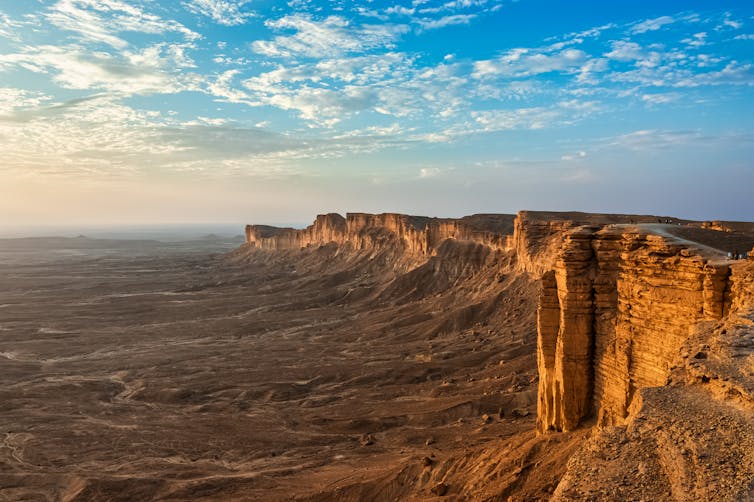
Most scientists agree modern humans developed in Africa, more than 200,000 years ago, and that a great human diaspora across much of the rest of the world occurred between perhaps 60,000 and 50,000 years ago.
In new research published in Proceedings of the National Academies of Sciences, we have uncovered dozens of distinctive historical changes in the human genome to reveal a new chapter in this story.
Our work suggests there may have been a previously unknown phase of humanity’s great migration: an “Arabian standstill” of up to 30,000 years in which humans settled in and around the Arabian Peninsula. These humans slowly adapted to life in the region’s colder climate before venturing to Eurasia and beyond.
The legacy of these adaptations still lingers. Under modern conditions, many genetic changes from this period are linked to diseases including obesity, diabetes, and cardiovascular disorders.
History In Our Genomes
Since the first human genome was published in 2000, the amount of human genomic data available has grown exponentially. These rapidly growing datasets contain traces of key events in human history. Researchers have been actively developing new techniques to find those traces.
When ancient humans left Africa and moved around the globe, they likely met new environments and challenges. New pressures would have led to adaptation and genetic changes. These changes would subsequently have been inherited by modern humans.
Previous research on genomic data shows ancient humans most likely left Africa and spread across the planet between 60,000 and 50,000 years ago.
However, we still don’t know much about genetic adaptations during this crucial time period.
Ancient Adaptation Events
Our team of evolutionary and medical researchers has shed new light on this period. By studying both ancient and modern genomes, we have shown genetic selection was probably an important facilitator of this ancient human diaspora.
Using ancient human genomes makes it possible to recover evidence of past events in which specific genetic variants were strongly favoured over others and swept through a population. These “hard sweep” events are surprisingly rare in modern human genomes, most likely because their traces have been erased or distorted by subsequent mixing between populations.
However, in earlier work we identified 57 regions in the human genome where an initially rare beneficial genetic variant effectively replaced an older variant in ancient Eurasian groups.
In our new study, we reconstructed the historical spread of these genetic variants. We also estimated the temporal and geographical origins of the underlying selection pressures.
Further, we identified the gene in each hard sweep region most likely to have been selected for. Knowing these genes helped us understand the ancient pressures that may have led to their selection.
Coping With Cold
Our findings suggest early humans went through a period of extensive adaptation, lasting up to 30,000 years, before the big diaspora between 60,000 and 50,000 years ago. This period of adaptation was followed by rapid dispersal across Eurasia and as far as Australia.
We call this period the “Arabian standstill”. Genetic, archaeological and climatic evidence all suggest these ancient humans were most likely living in and around the Arabian Peninsula.
The genetic adaptations involved parts of the genome related to fat storage, nerve development, skin physiology, and tiny hair-like fibres in our airways called cilia. These adaptations share striking functional similarities with those found in humans and other mammals living in the Arctic today.
We also detected similar functional similarities with previously identified human adaptive genes derived from historical mixing events with Neanderthals and Denisovans. These distant relatives of humans are also thought to have adapted to cold Eurasian climates.
Overall, these changes seem likely to have been driven by adaptation to the cool and dry climates in and around prehistoric Arabia between 80,000 and 50,000 years ago. The changes would also have prepared the ancient humans for the cold Eurasian climates they would eventually encounter.
Old Adaptations, Modern Diseases
Many of these adaptive genes have links to modern diseases, including obesity, diabetes, and cardiovascular disorders. The adaptations around the human expansion from Africa may have established genetic variations that, under modern conditions, are associated with common diseases.
As we have suggested in another study, genes that were adaptive in the past might contribute to modern human susceptibility to various diseases. Identifying the genetic targets of historical adaptation events could help the development of therapeutic approaches and preventive measures for contemporary populations.
Our findings contribute to a new but growing literature highlighting the importance of adaptation in shaping human history. They also show the growing potential of evolutionary genetics for medical research.![]()
Ray Tobler, Postdoctoral fellow, Australian National University; Shane T Grey, Chair professor, Garvan Institute, and Yassine Souilmi, Group Leader, Genomics and Bioinformatics, Australian Centre for Ancient DNA, University of Adelaide
This article is republished from The Conversation under a Creative Commons license. Read the original article.
Skin Patch Shows Promise For Toddlers With Peanut Allergy
World leaders are flocking to Papua New Guinea. Here’s why

Papua New Guinea has been in the international spotlight over the past week, hosting a remarkable series of visits by foreign leaders and senior representatives.
Prime Minister Narendra Modi of India received an enthusiastic welcome on Monday when he arrived in Port Moresby for the first visit by an Indian head of government and to meet with 14 visiting leaders of the Pacific Island Forum countries and territories. PNG Prime Minister James Marape stooped to touch Modi’s feet on arrival, welcoming him as the “leader of the Global South”.
United States Secretary of State Antony Blinken also visited Port Moresby at the start of the week. Blinken was standing in for US President Joe Biden, whose much-anticipated stopover in the country was cancelled, along with his planned subsequent visit to Australia, because of the crisis in the US Congress over the federal debt ceiling.
Blinken signed two important agreements with PNG during his visit: a Defence Cooperation Agreement (DCA) and an Agreement Concerning Counter Illicit Transnational Maritime Activity Operations.
While in Port Moresby, Blinken also convened the latest in a series of high-level meetings between the US and Pacific leaders. New Zealand Prime Minister Chris Hipkens and Australian Senator Pat Conroy were also present.

These two visits were only part of a broader, substantial uptick in external engagement in PNG. In April, British Foreign Secretary James Cleverly visited the country, signing a defence framework agreement. It’s understood Indonesian President Joko Widodo will be there in June.
France has also recently signed a status of forces agreement with PNG. Meanwhile, Australia is negotiating a security treaty that is expected to substantially upgrade its longstanding defence cooperation agreement.
This activity all reflects the increasing importance of the Pacific Island countries in the strategic calculations of the democratic powers amid growing Chinese influence and heightened US-China tensions in the region. This is particularly true of PNG. It’s the largest nation in the region by far, located only a few kilometres from Australia, near the intersection point between Asia and the Pacific.
Amid all the colour and movement in Port Moresby this week, at least two important shifts were detectable in the dynamics of the region.
The Modi visit provided the clearest signal yet of India’s intention to join longstanding regional partners in demonstrating to the Pacific the value of prioritising engagement with the democratic world. With its inspirational development narrative, major power status and cultural links to the region, India could play an important role if it follows up with substantive collaboration with the region on climate change, security and sustainable development.
The updated defence arrangements between PNG and the United States, combined with the now-established pattern of senior US-Pacific political dialogue, recent growth in regional US development support and the upgrading of its regional diplomatic network, provide some corroboration that a long-promised American recommitment to the Pacific is finally under way.
Biden’s planned visit would have sealed this message symbolically – it would have been the first ever to a Pacific Island country. Its cancellation was undoubtedly a setback, but its impact should not be overstated given the practical displays of US commitment.
The text of the DCA will not be officially released until it is formally adopted into US law. However, the signatories have indicated that it updates an old status of forces agreement and aims to strengthen PNG Defence Force capabilities, including in humanitarian assistance and disaster response, and will allow for increased joint military training.
A draft leaked to the PNG media before the Blinken visit suggested the US might have substantial access to PNG facilities.
The maritime arrangement will allow the US Coast Guard to support surveillance in PNG’s exclusive economic zone and help combat illicit transnational activity through joint sea operations.
Students at several PNG universities protested against what they saw as a lack of transparency about the defence agreement. They expressed fears it compromised the country’s independence by bringing it more firmly into the US sphere of control. Some opposition political figures spoke of the risk of angering China and thus inviting potentially harmful repercussions for PNG’s economic security.
But Marape and his government stood their ground. Marape argued the agreement had “nothing to do with China” and PNG’s sovereignty remained intact. He also pointed to his government’s “healthy” relationship with Beijing and China’s status as an important trading partner for PNG. He has firmly rejected accusations that the arrangements for visiting US military personnel would violate PNG law.
PNG will nonetheless remain committed to its “friends to all, enemies to none” foreign policy approach. It will continue to leverage its growing array of relationships for its economic development.
In recent years, PNG’s leaders have joined others from the Pacific in expressing impatience with the strategic rivalry between their external partners and alarm at signs of greater militarisation in the region. India’s refusal to align itself firmly with one side or another in the geostrategic contest will be seen by many in the region as a model.
While Chinese investment and development support for PNG actually remains very limited compared to that of Australia, it looms large as a trading partner. Chinese state-owned enterprises are now heavily engaged in PNG, particularly its construction sector.

It is also clear that Australia’s partners have come to understand they cannot leave it to Australia alone to carry the democratic standard in the Pacific. While Modi’s decision not to invite Australia and New Zealand to the formal component of the India-Pacific meeting (they were invited to a lunch) raised eyebrows, it may actually have been quite useful.
If the objective is for India to step forward into a substantive and positive regional role, then it probably helps that the symbolism of the India-Pacific meeting was not diluted by “traditional” partners detailing their own familiar cooperative efforts with the region.
If Australia wants others to share the load in the Pacific, it doesn’t follow that it always has to be involved. Australian government strategists likely think this has been a good week in PNG.![]()
Ian Kemish, Adjunct Professor, School of Historical and Philosophical Inquiry, The University of Queensland
This article is republished from The Conversation under a Creative Commons license. Read the original article.
In 2050 Over 800 Million People Globally Estimated To Be Living With Back Pain
Modular Builds May Help Construction Industry Weather A Perfect Storm: UniSA
 Engineers from Aston University, Birmingham, and the University of South Australia (UniSA) have calculated the potential cost savings for builders using modular production techniques where much of the construction happens offsite in controlled conditions.
Engineers from Aston University, Birmingham, and the University of South Australia (UniSA) have calculated the potential cost savings for builders using modular production techniques where much of the construction happens offsite in controlled conditions.What Marsupials Can Teach Us About Brain Development
Half Of World's Largest Lakes Losing Water: Climate Change, Human Consumption And Sedimentation Contributing To Decline
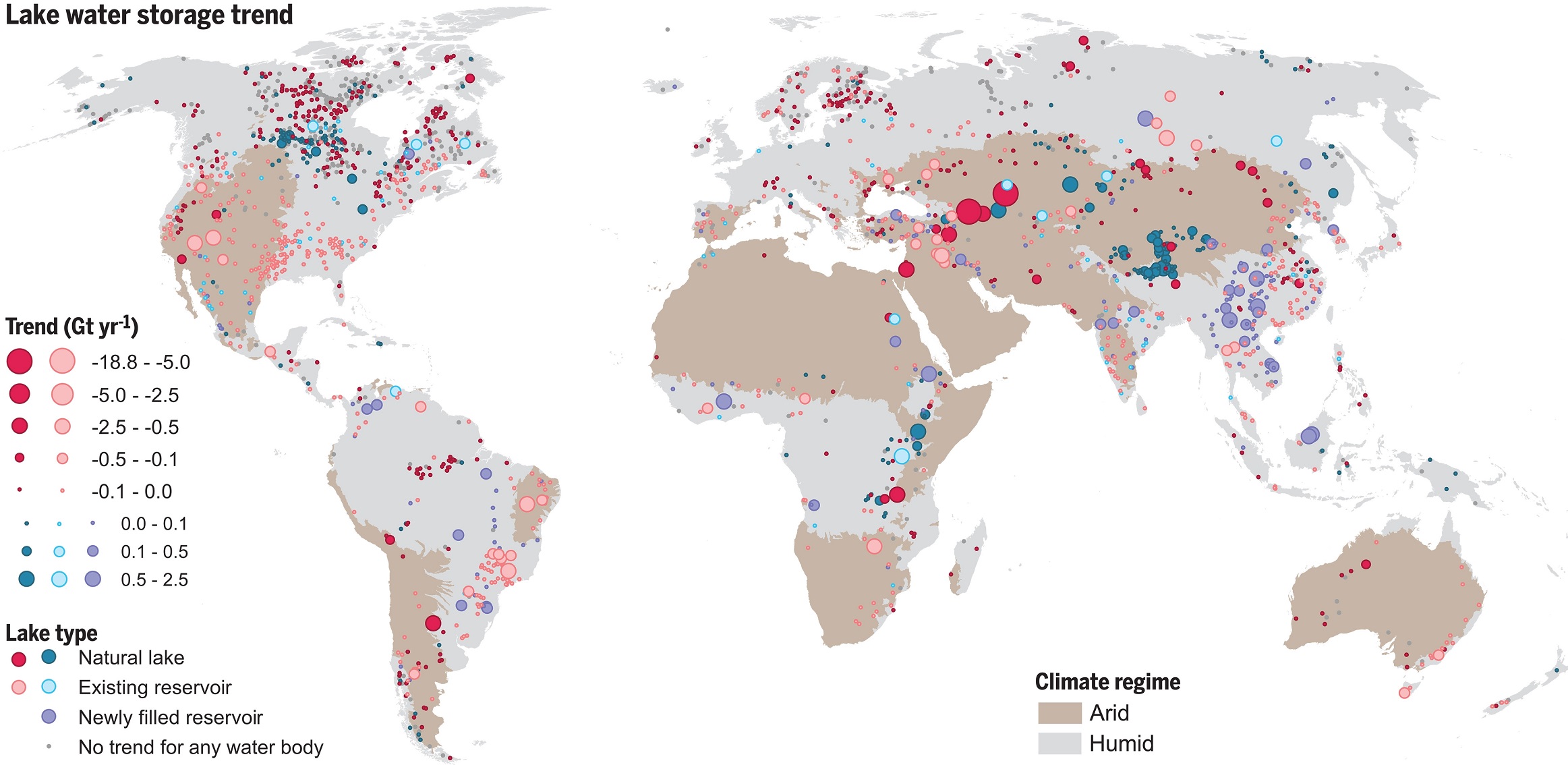
New Supply Chain Model To Empower Seabound Hydrogen Economy: UTS
Building Trusted Digital Services: The Trustworthy Digital Society Hub
It’s clear the role of technology in our lives will continue to grow, and it’s vitally important that people, government and business take a human-centred approach to developing the tools and capabilities to navigate the rapidly evolving tech landscape. - Professor Andrew Parfitt, UTS Vice-Chancellor and President

Flexing Crystalline Structures Provide Path To A Solid Energy Future

Oldest Architectural Plans Detail Mysterious Desert Mega Structures
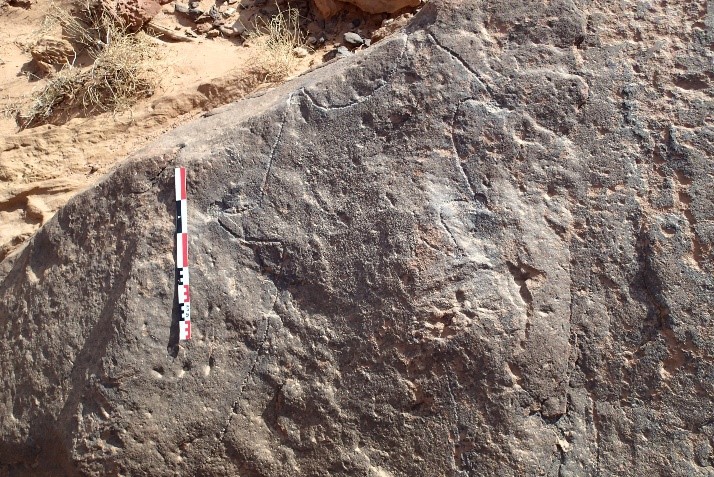
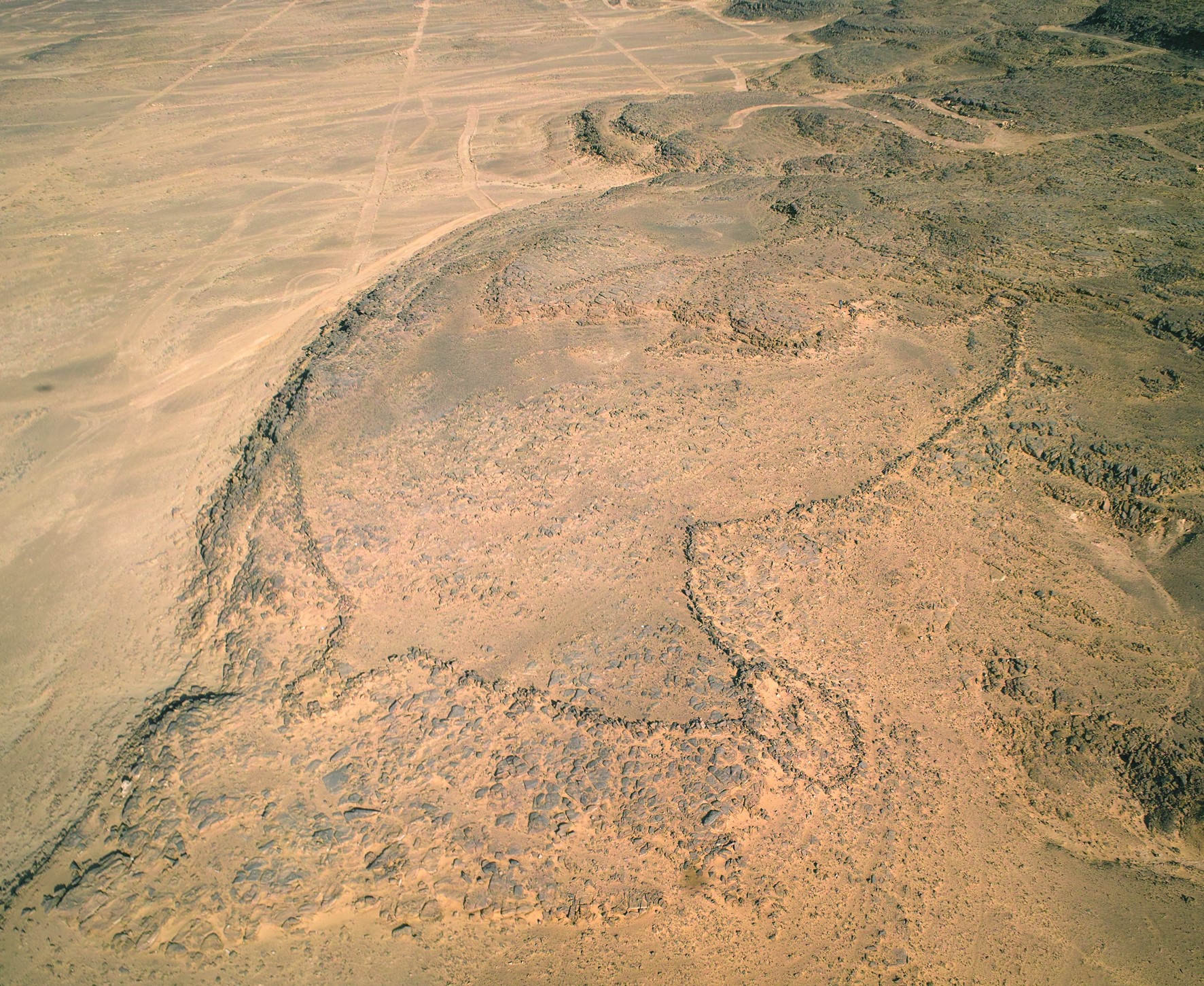
Disclaimer: These articles are not intended to provide medical advice, diagnosis or treatment. Views expressed here do not necessarily reflect those of Pittwater Online News or its staff.
